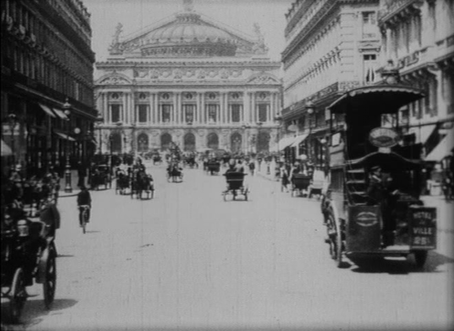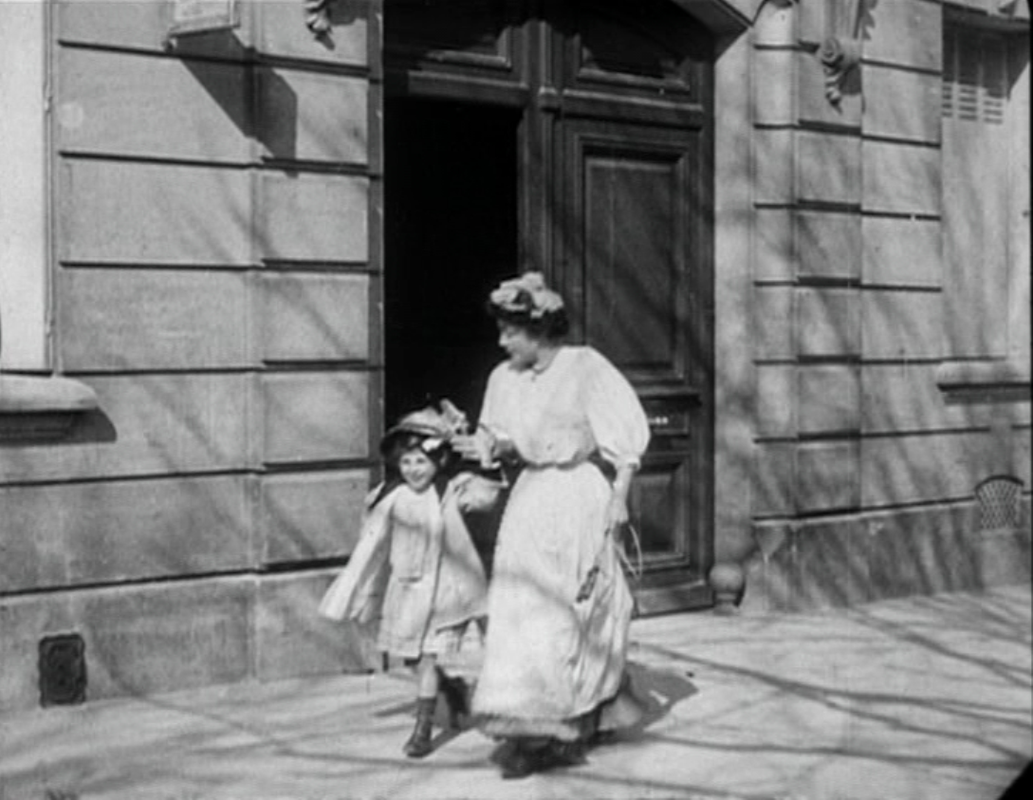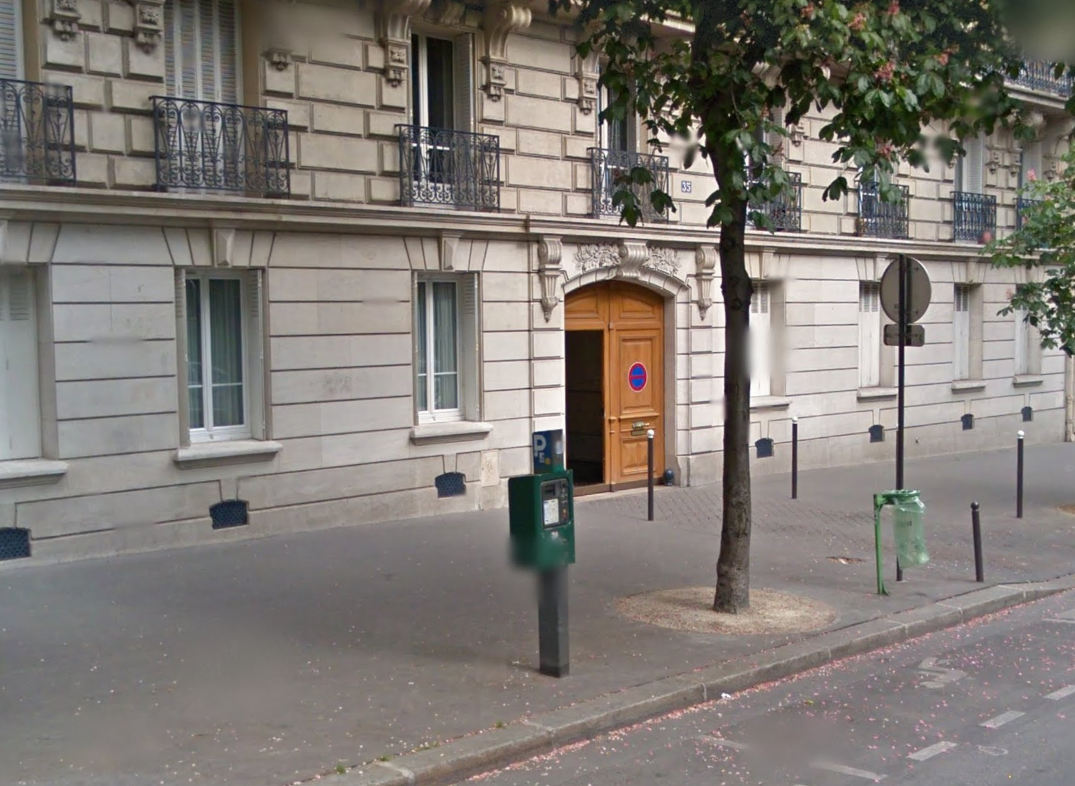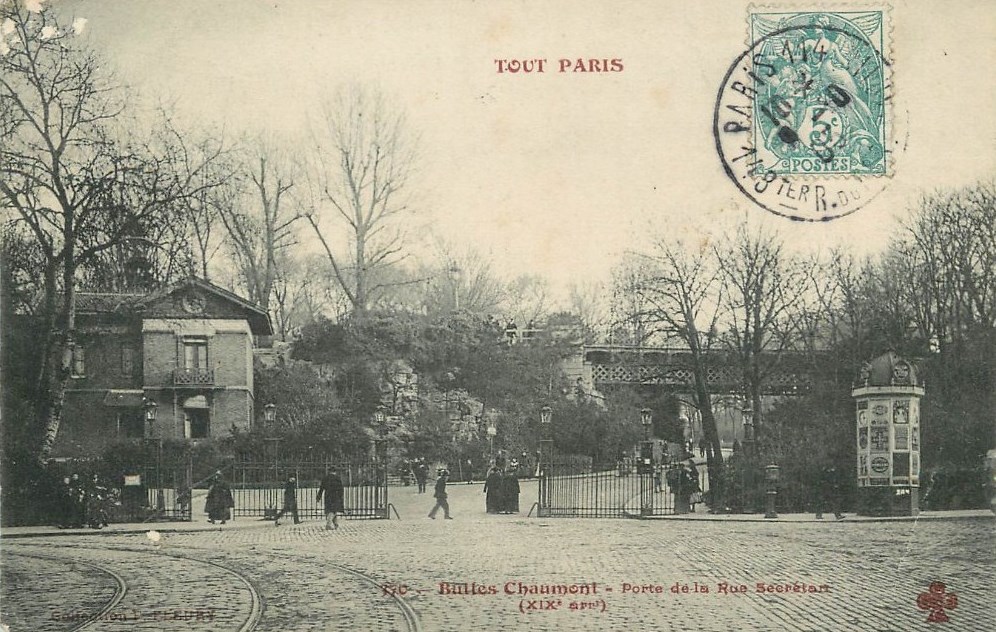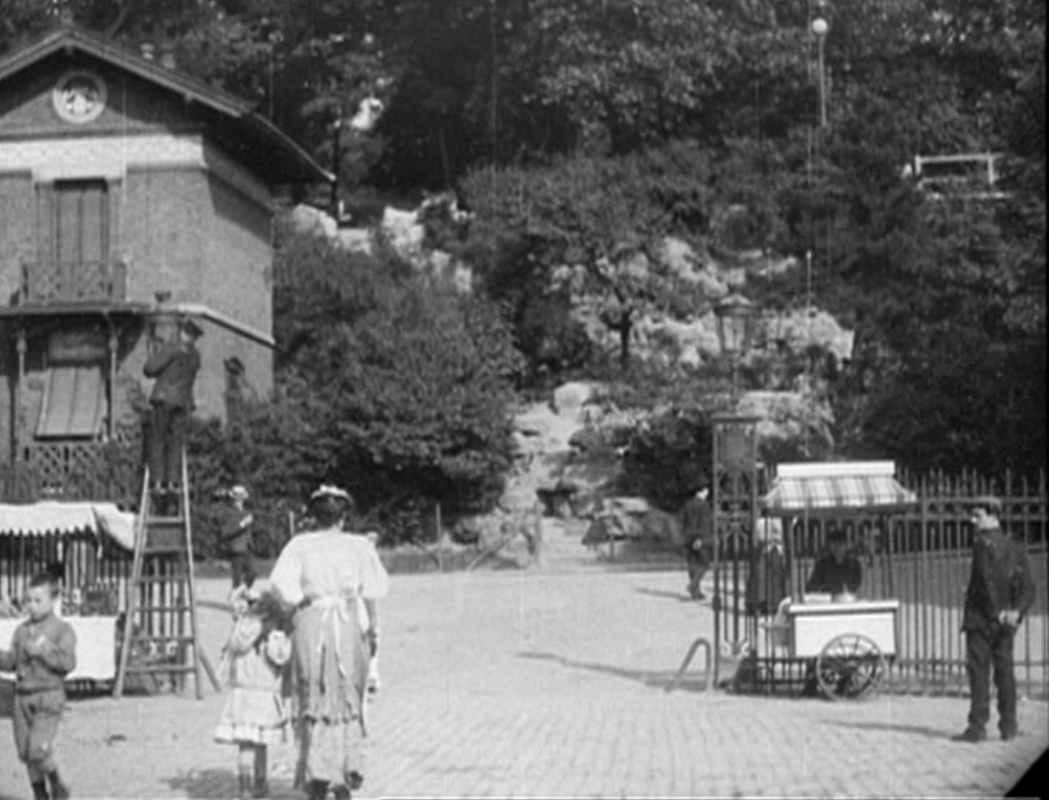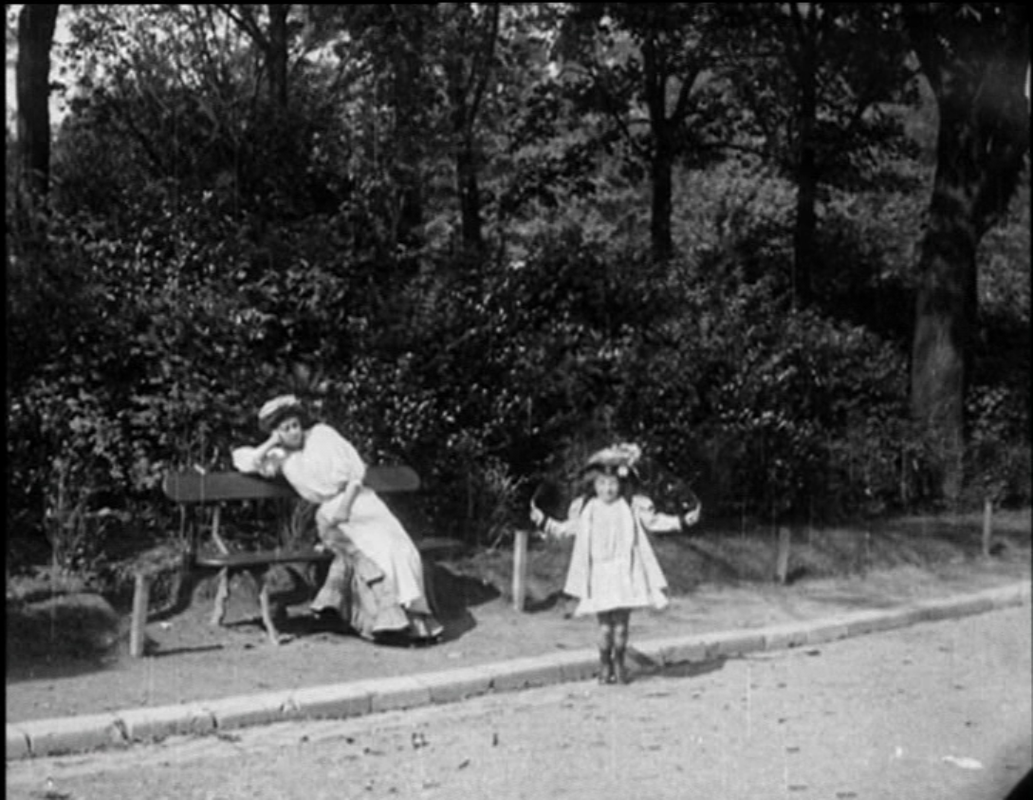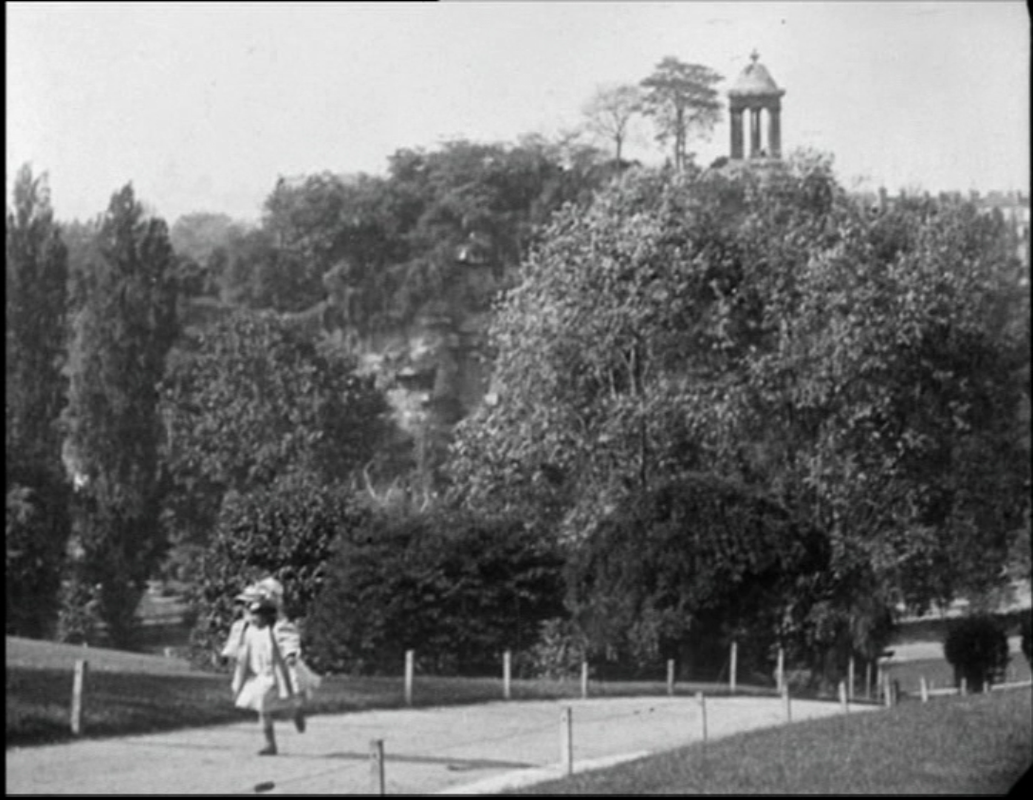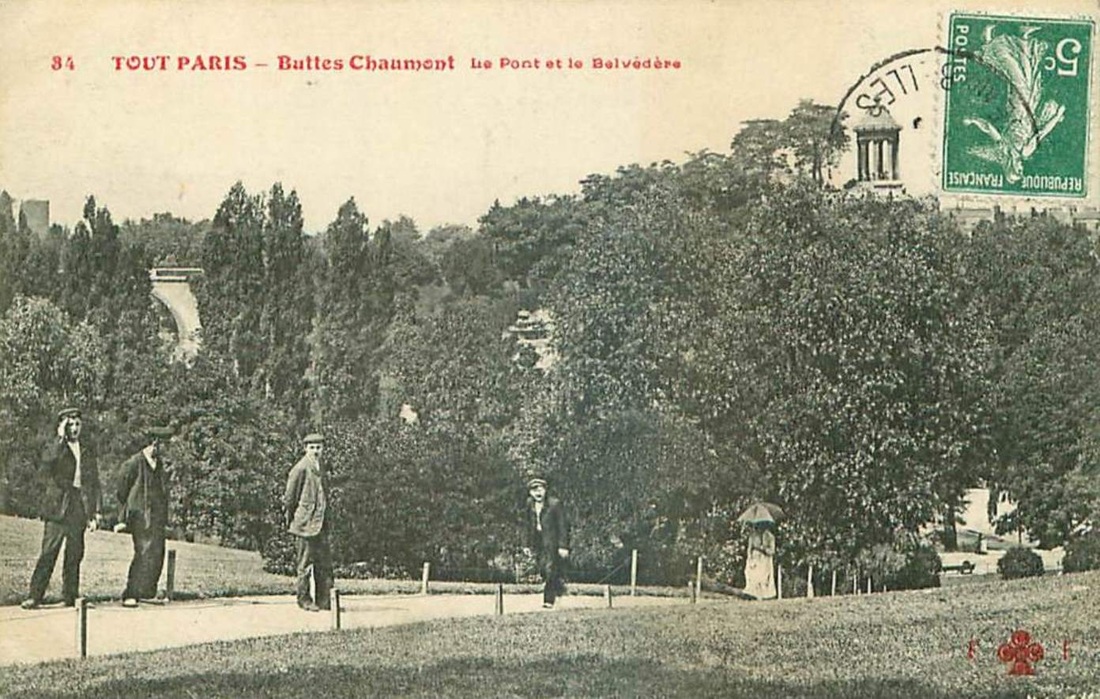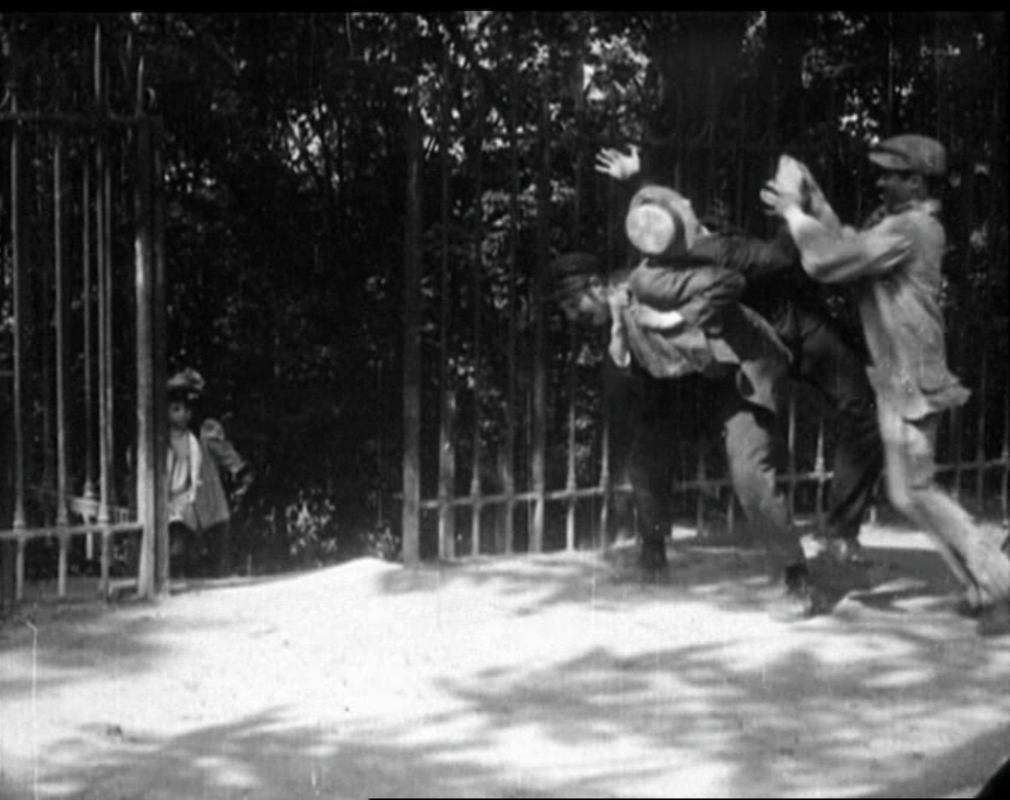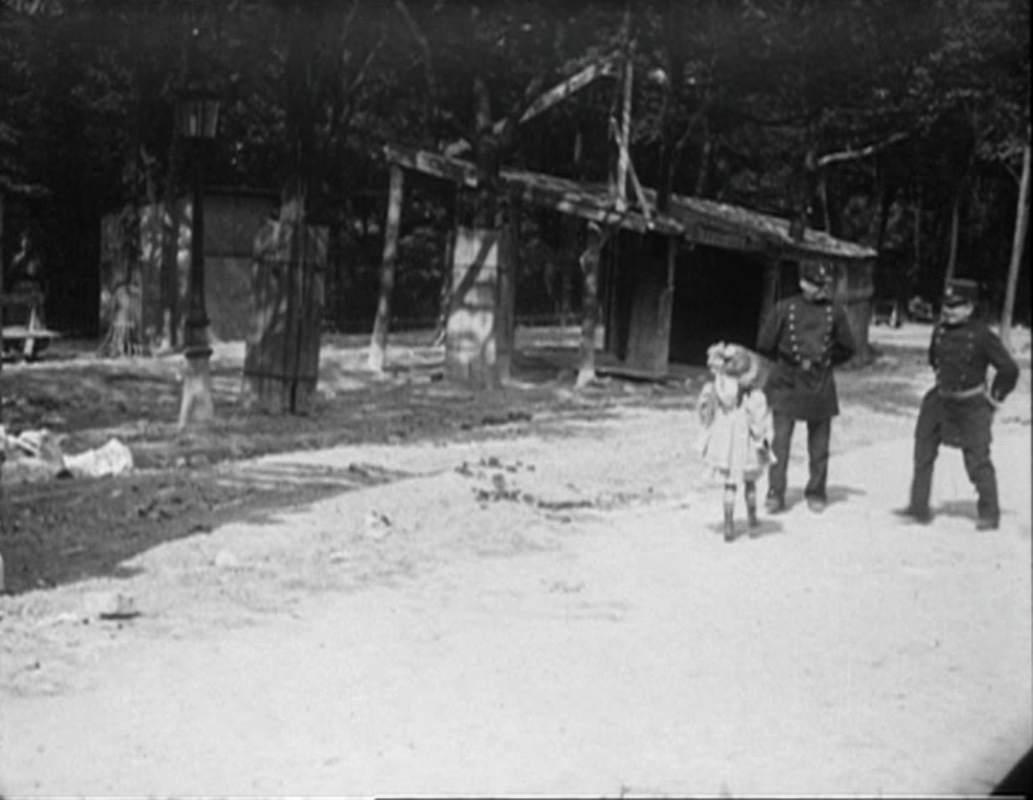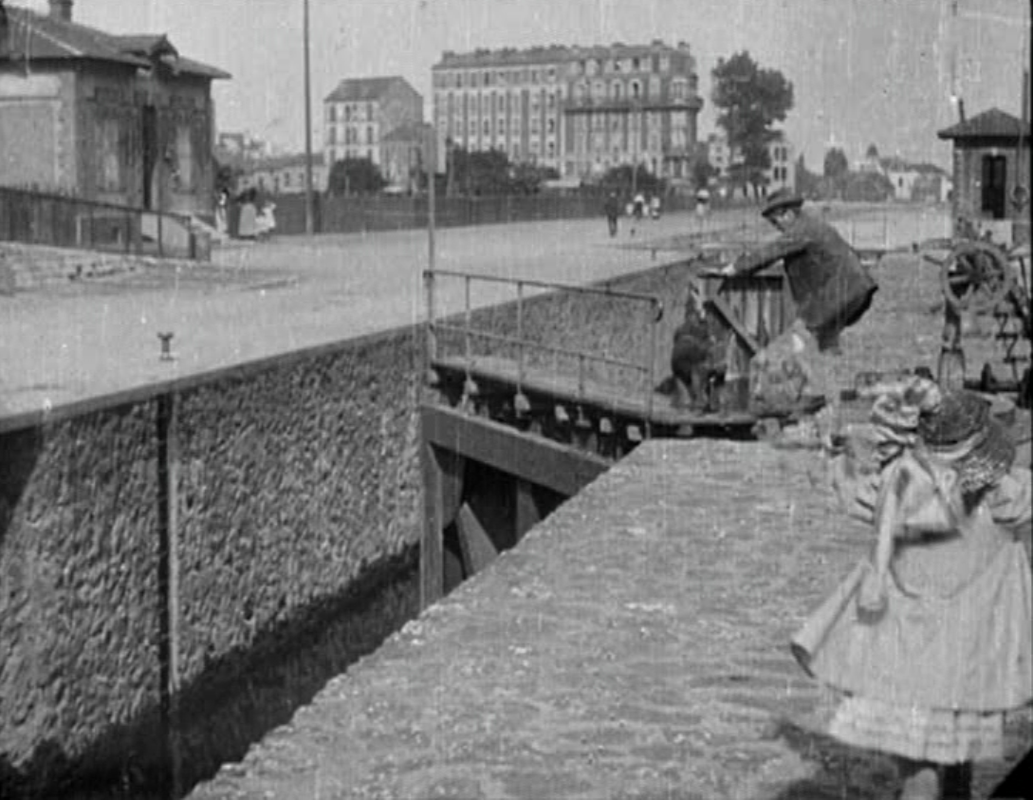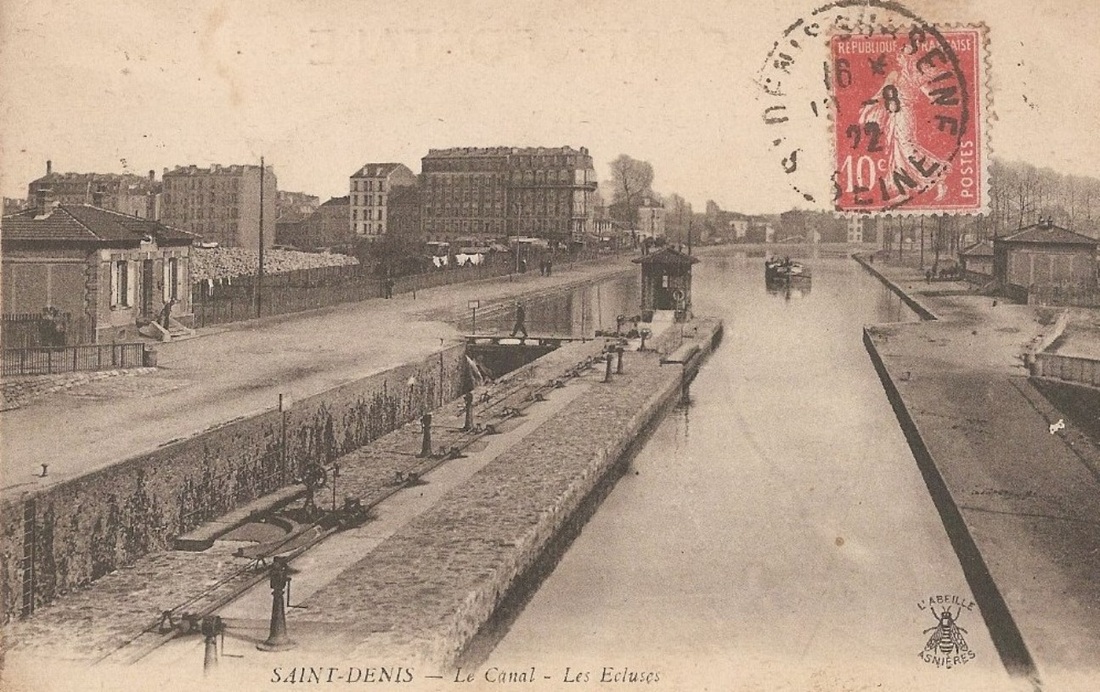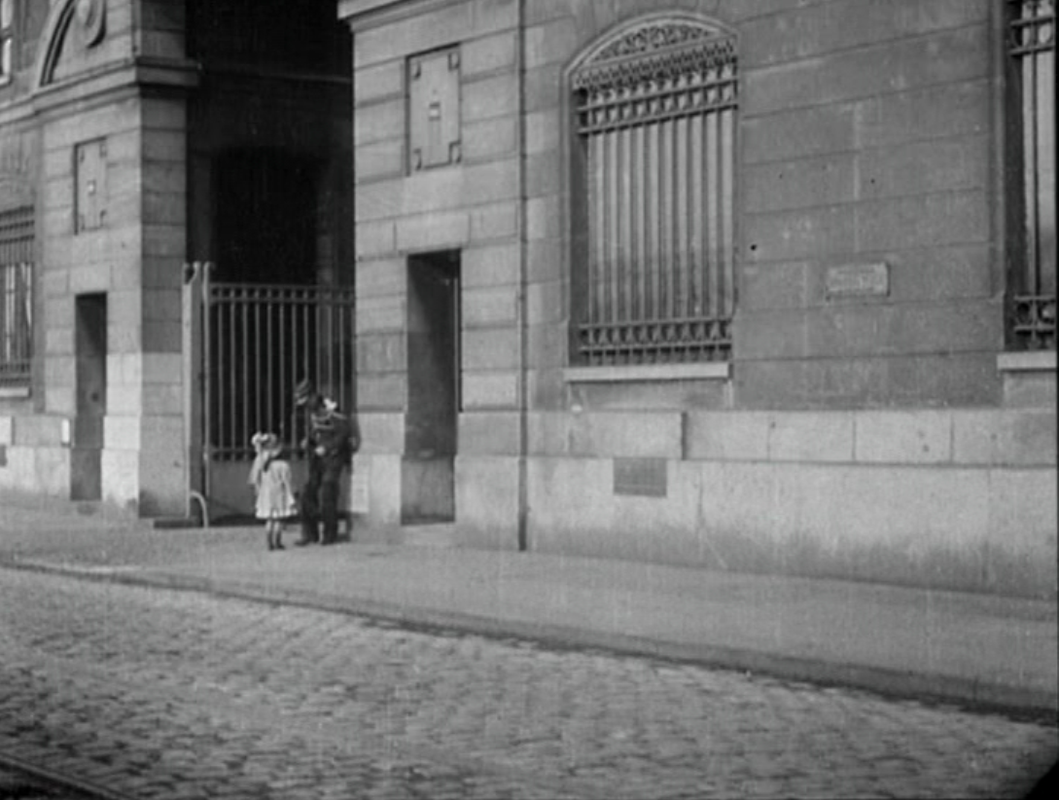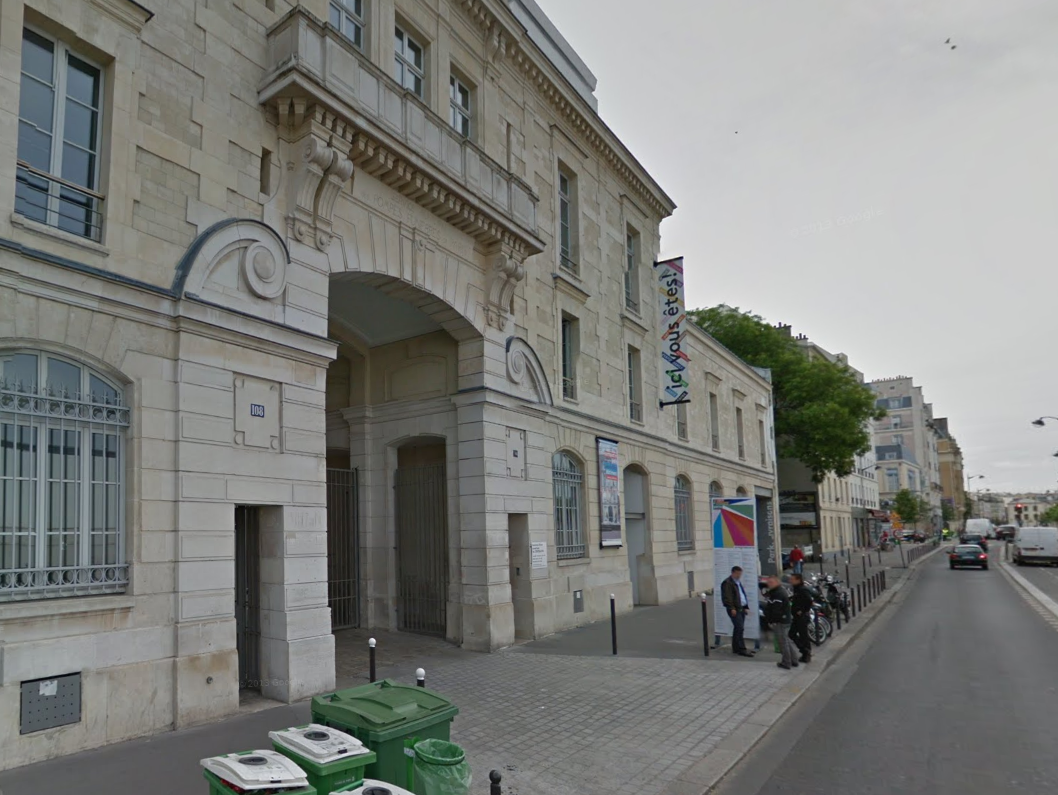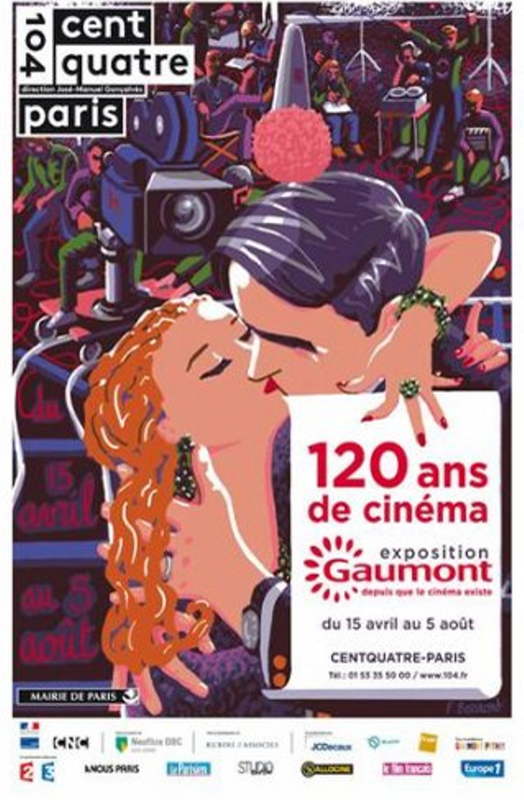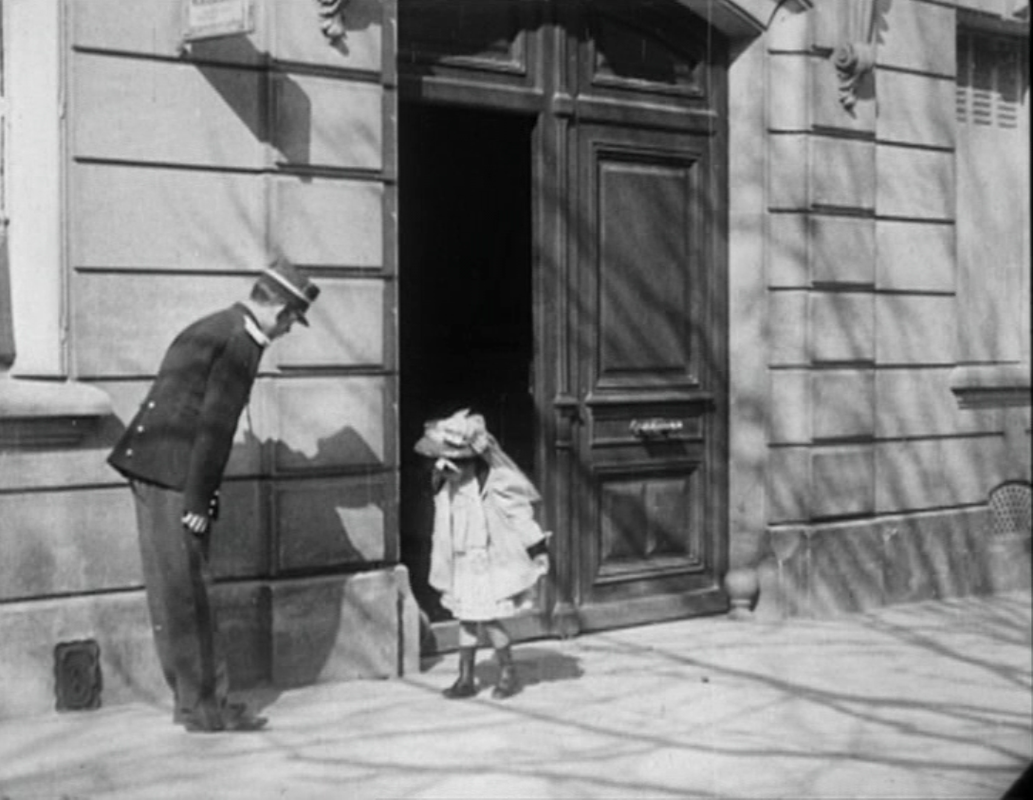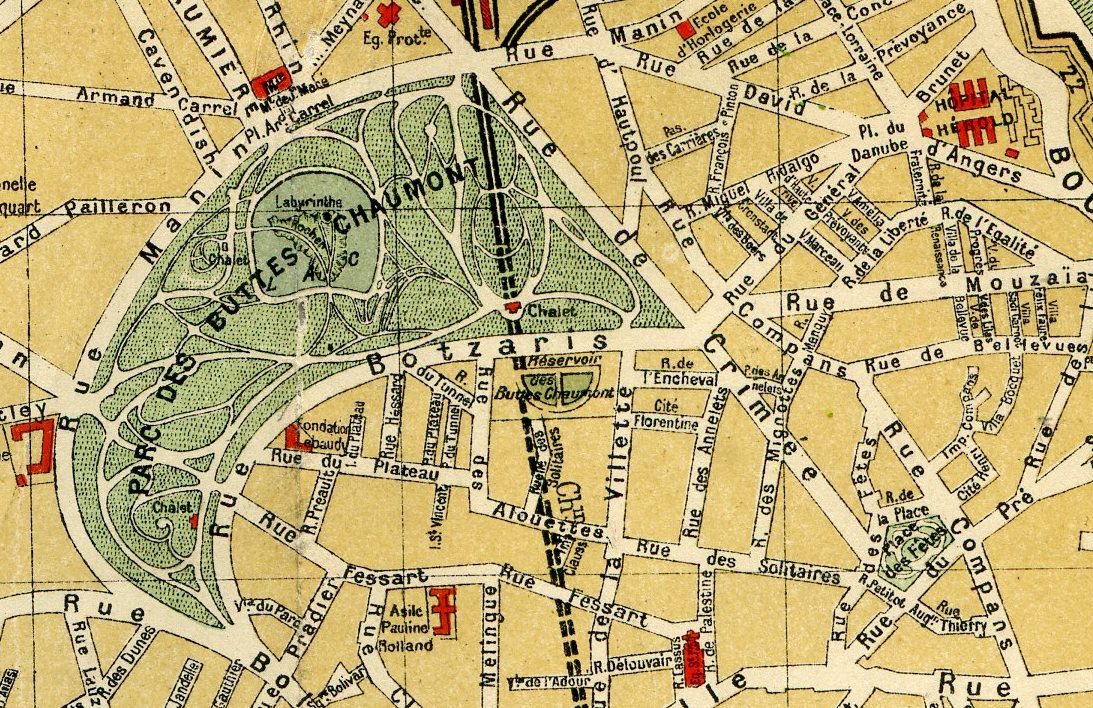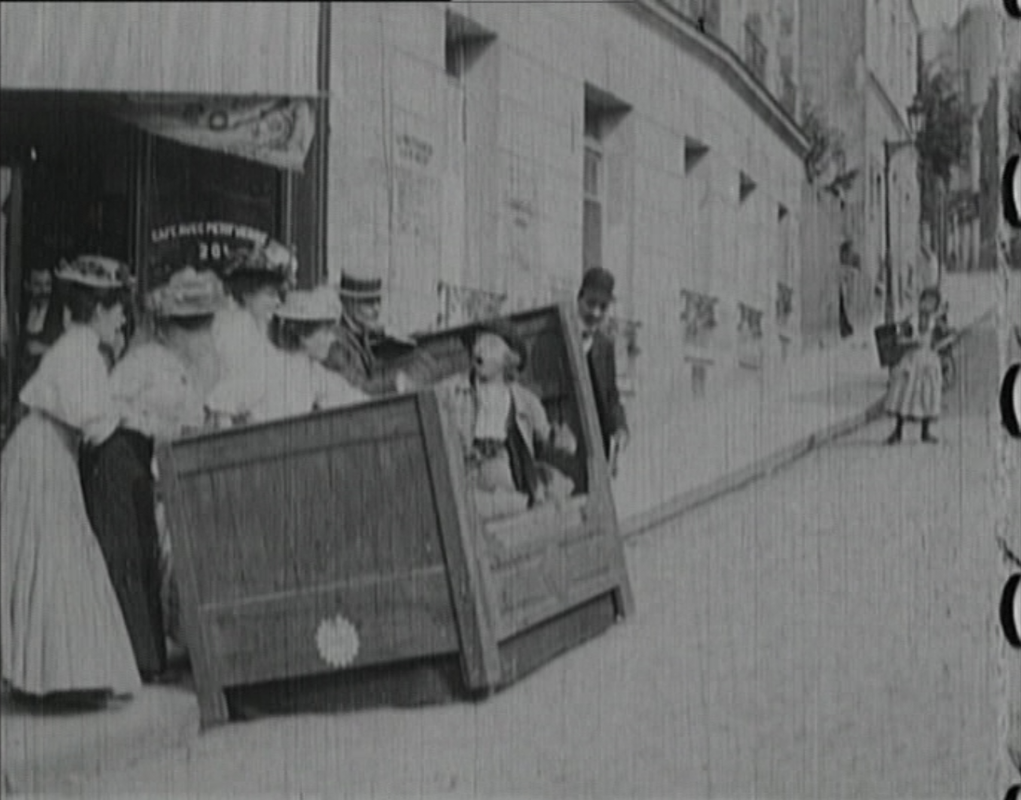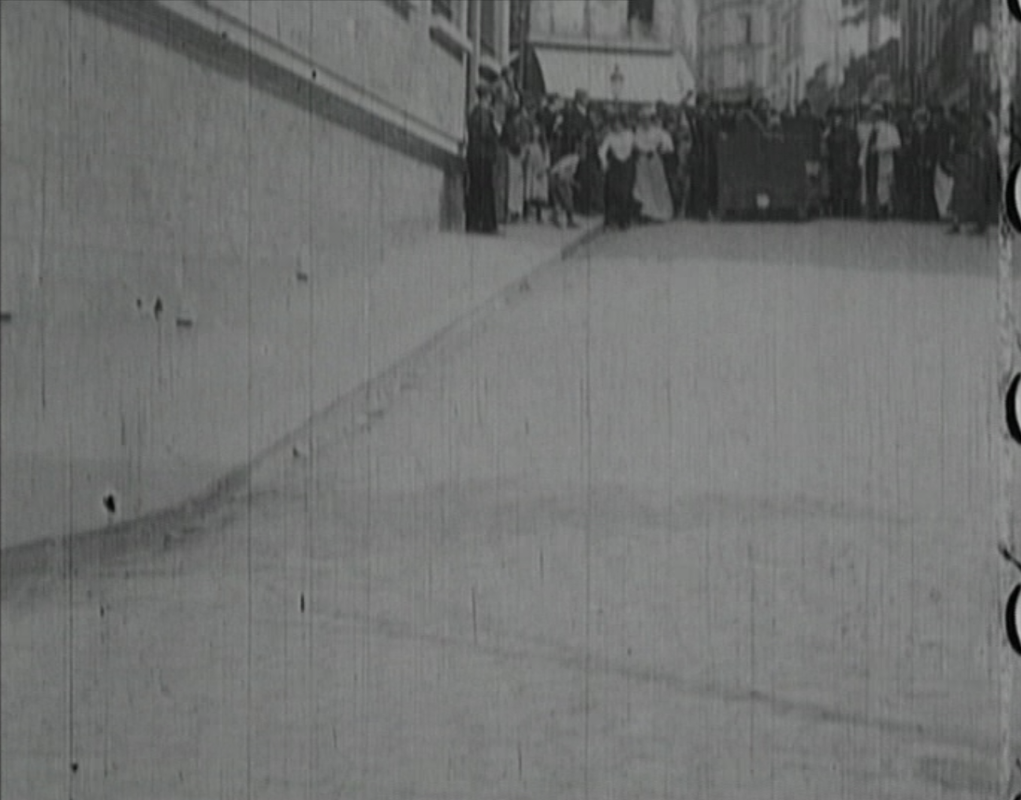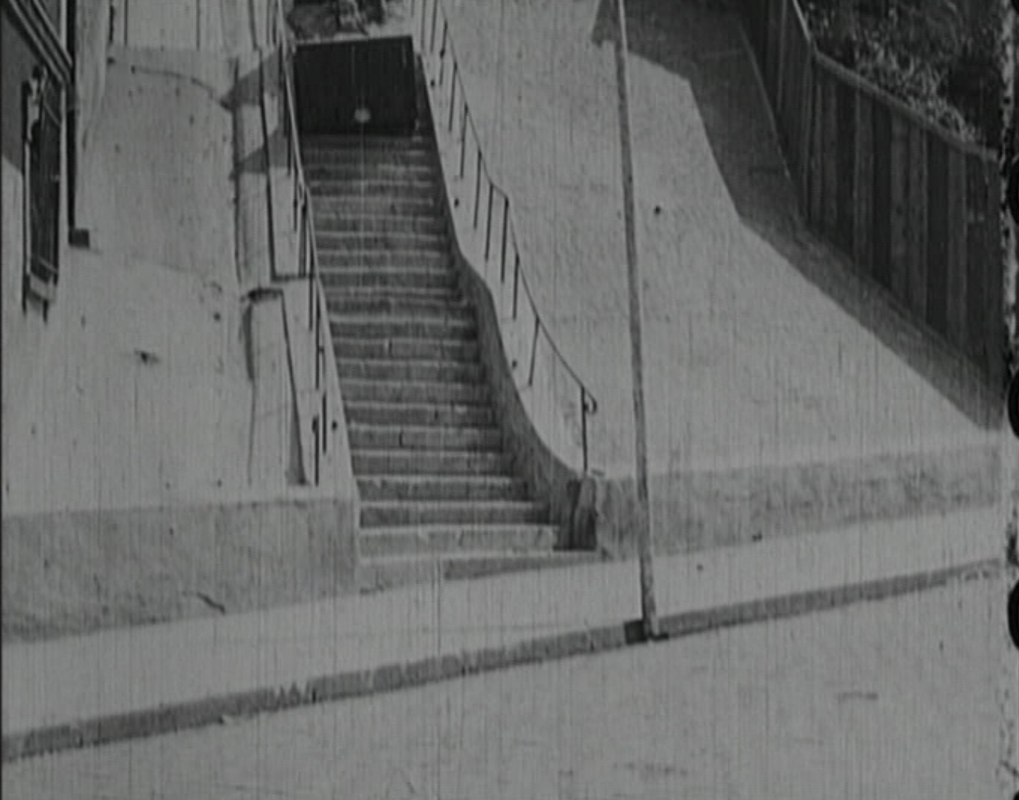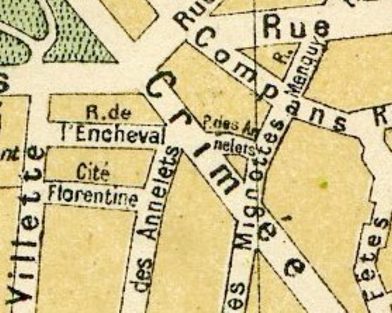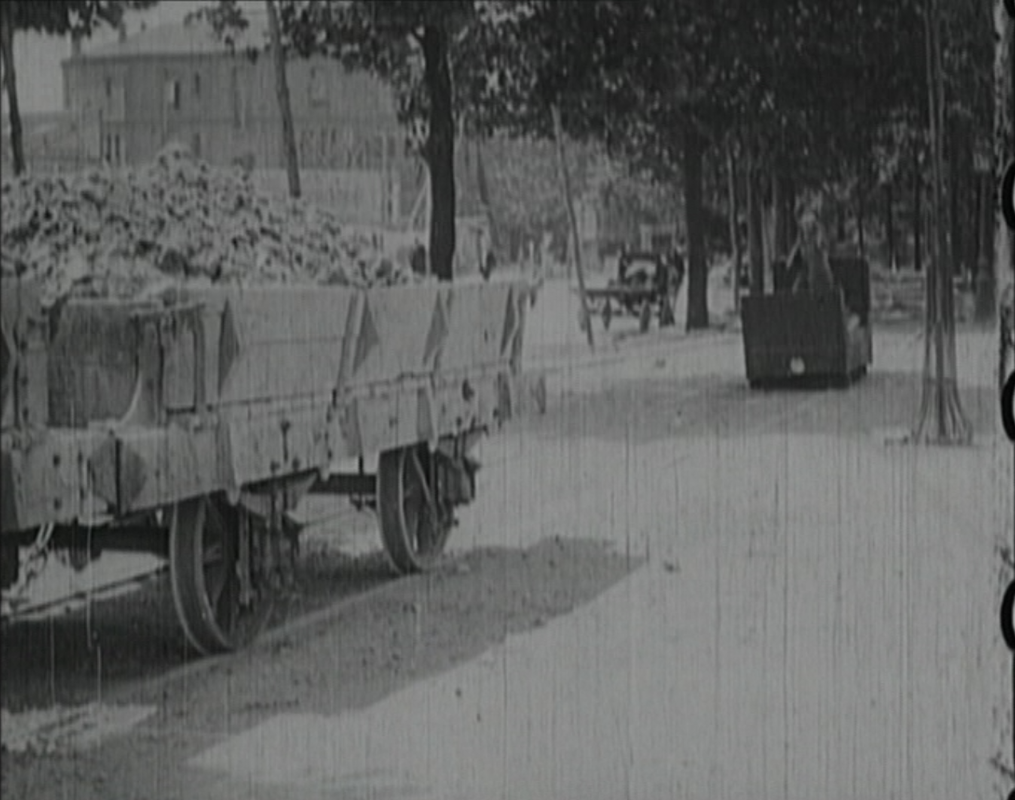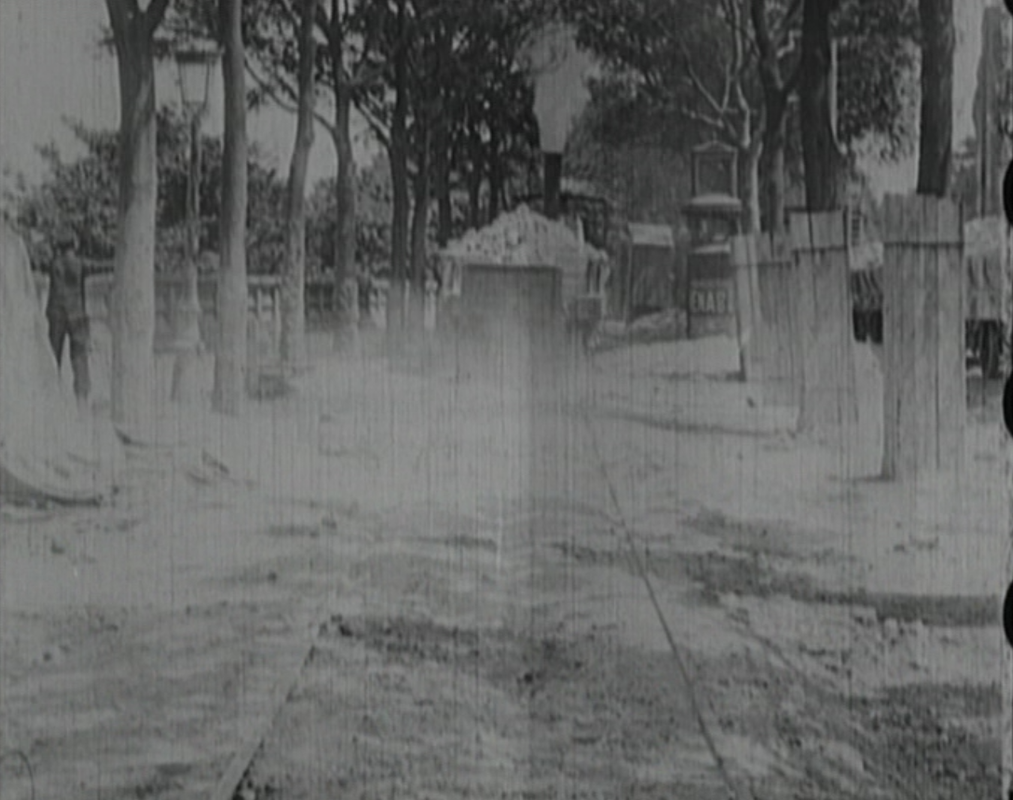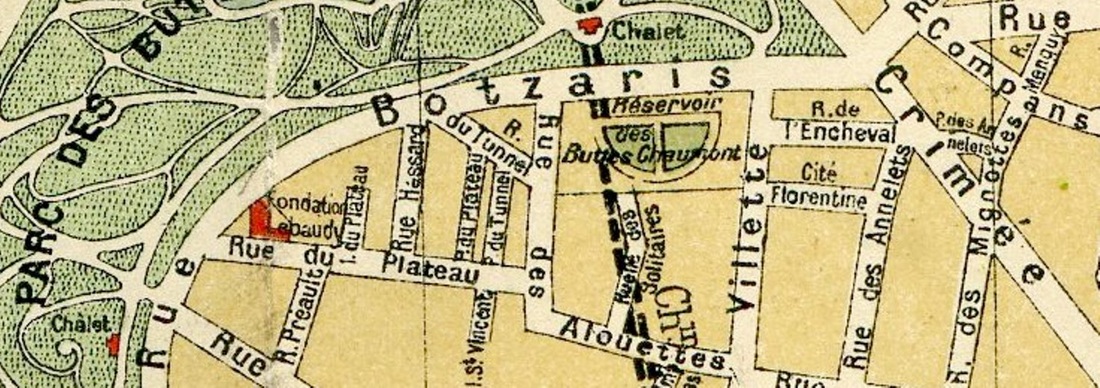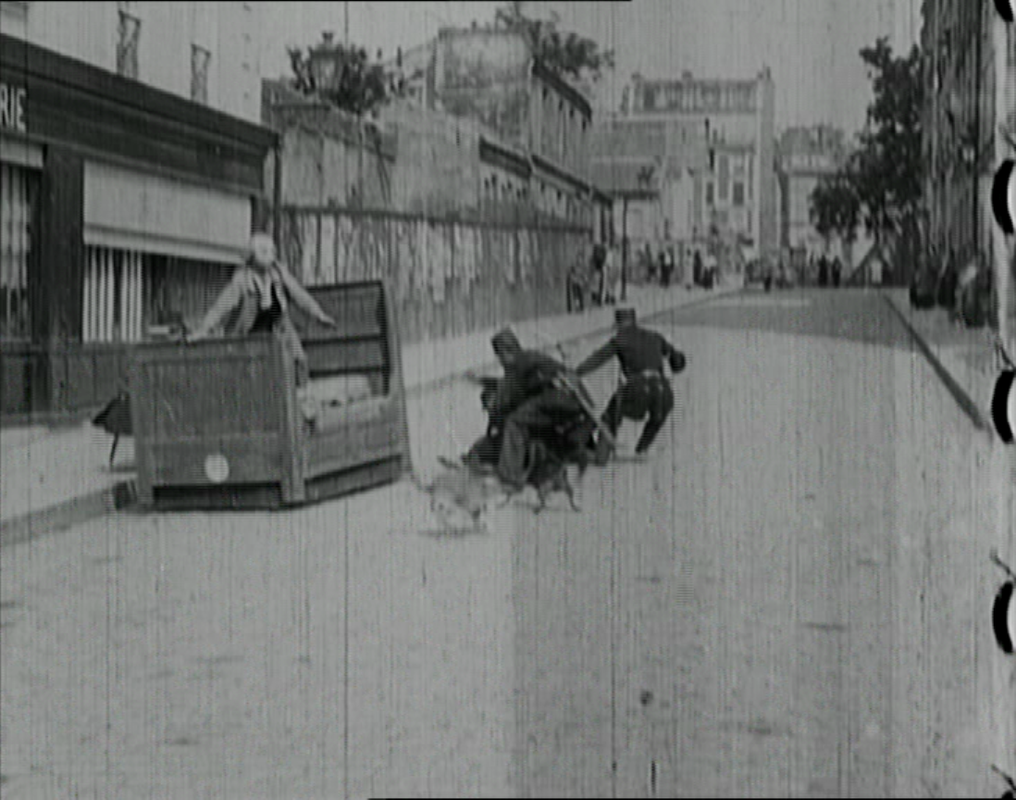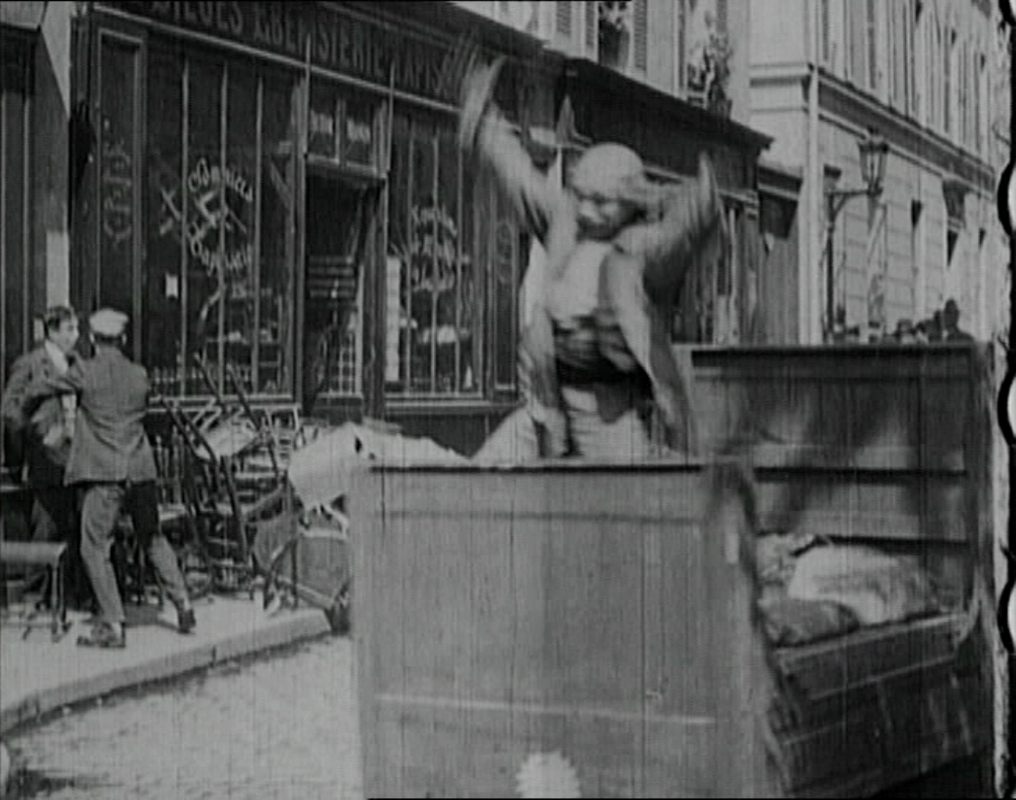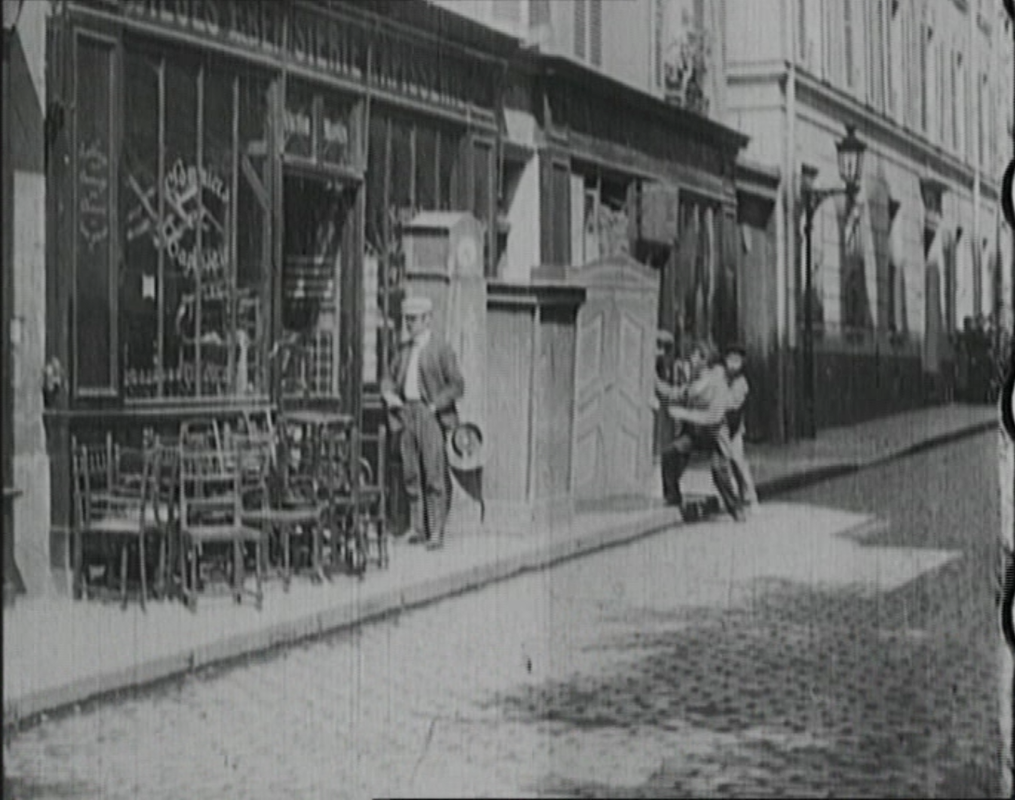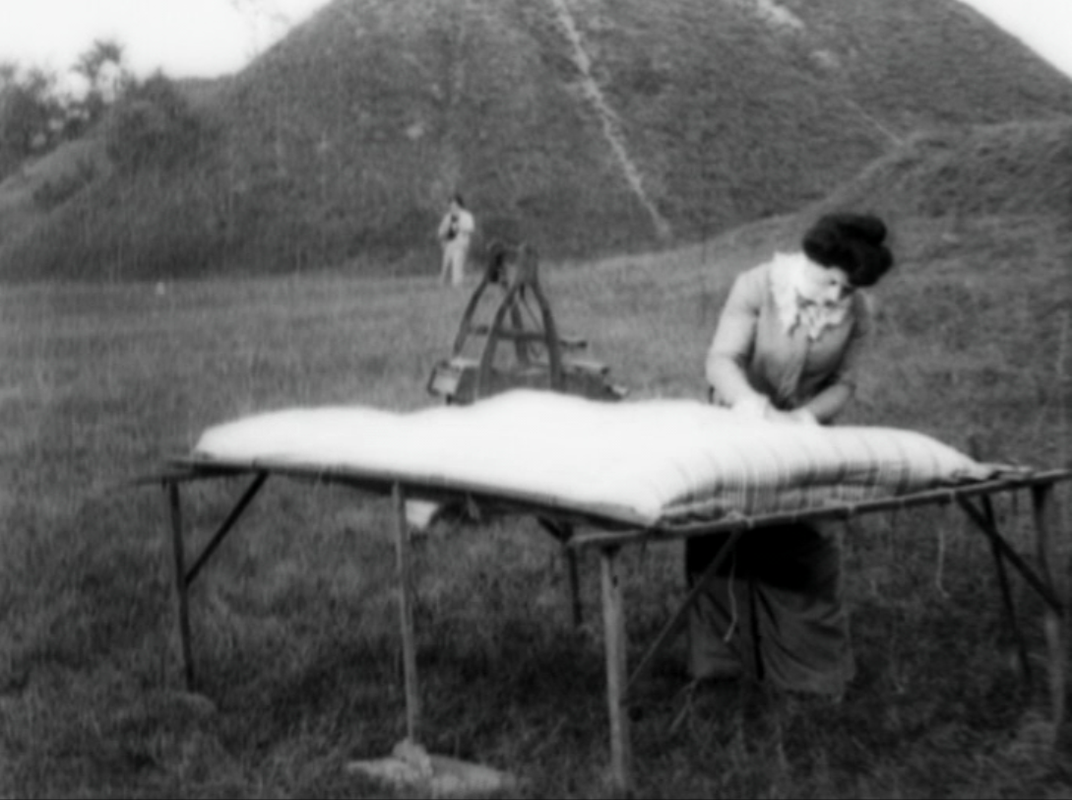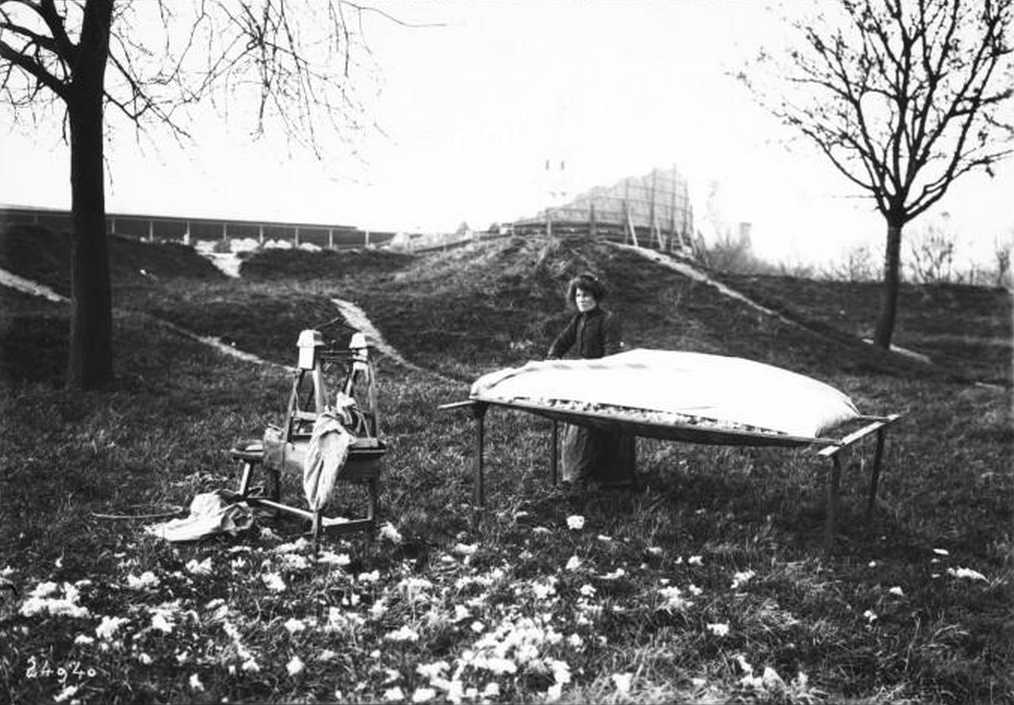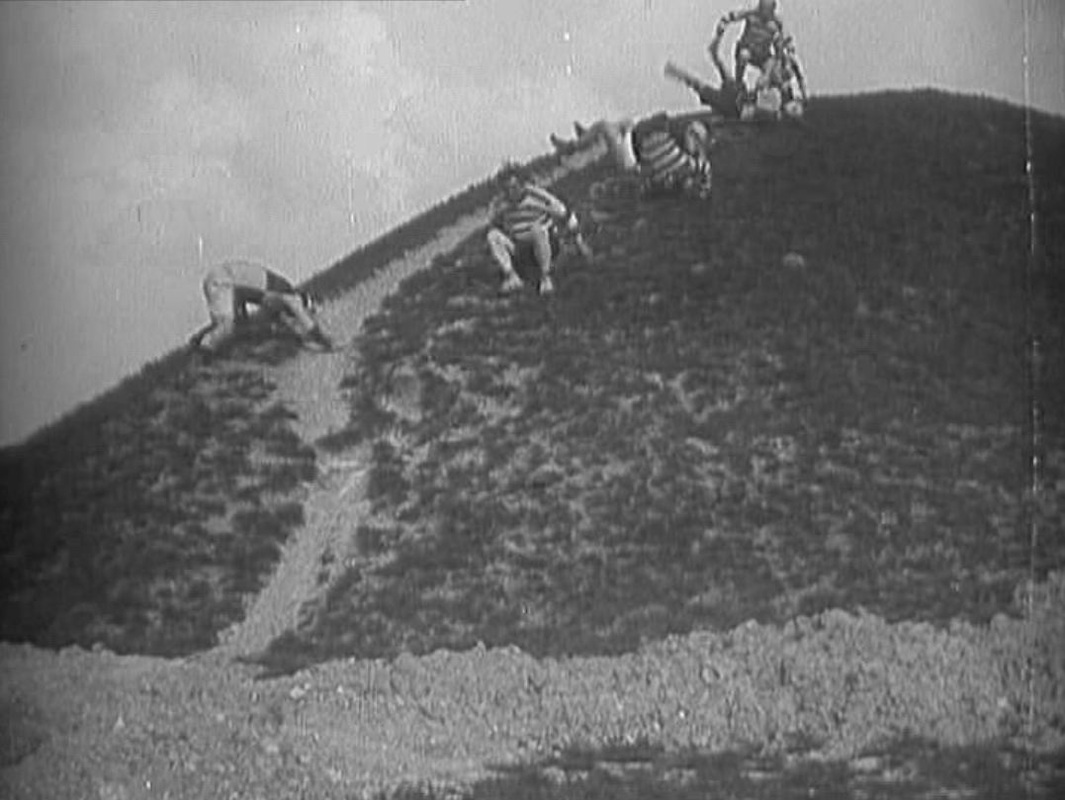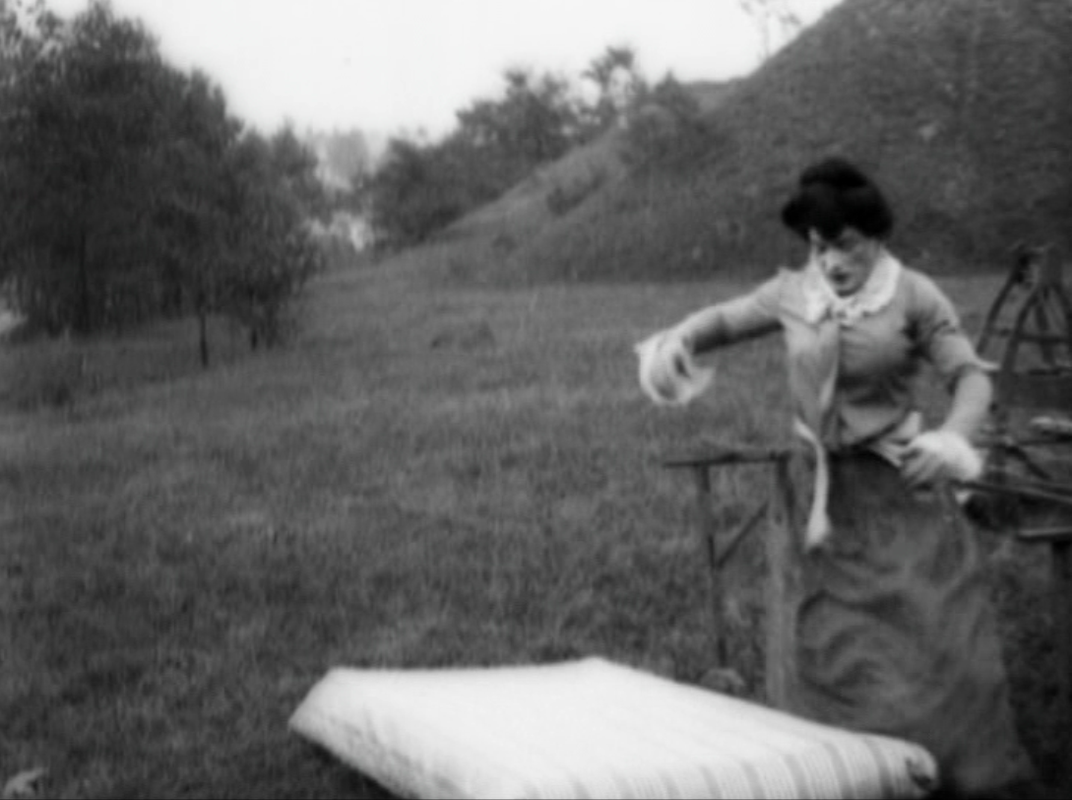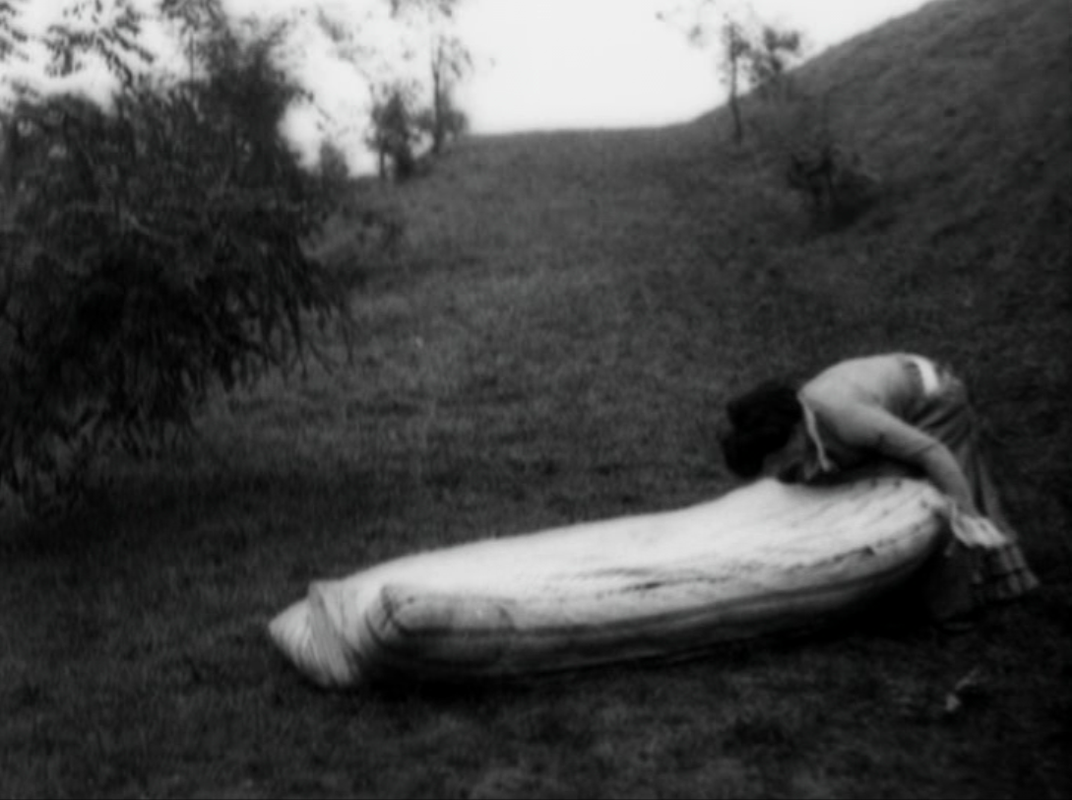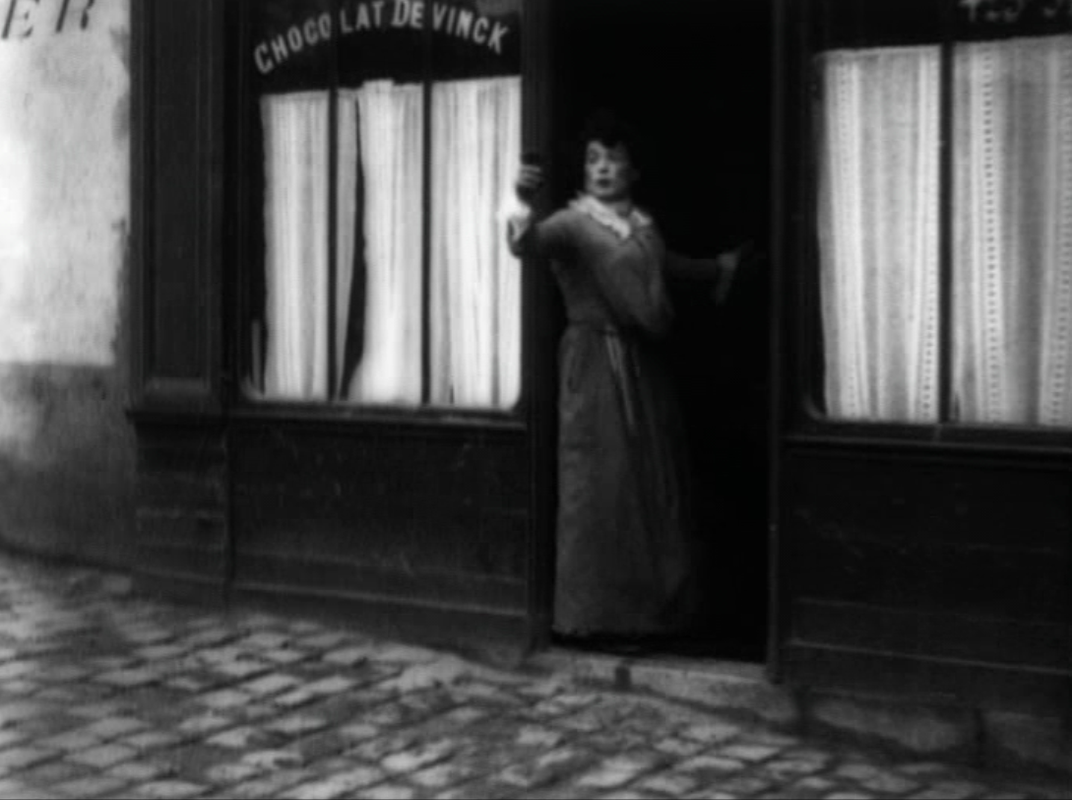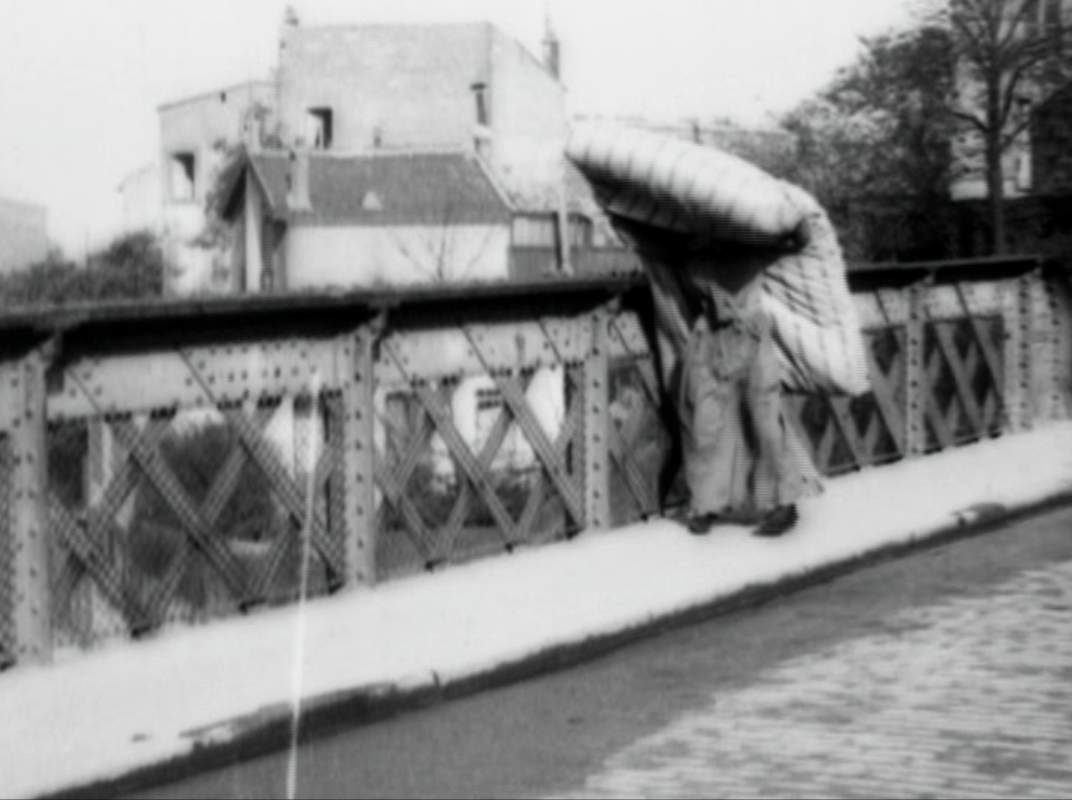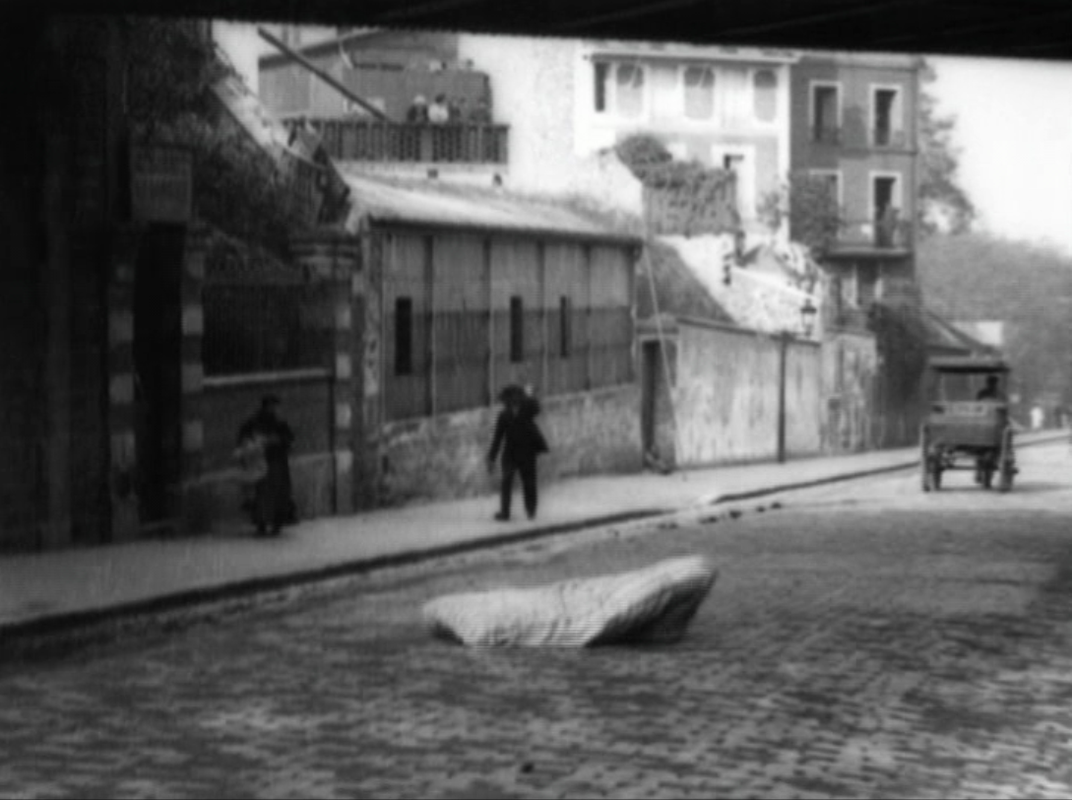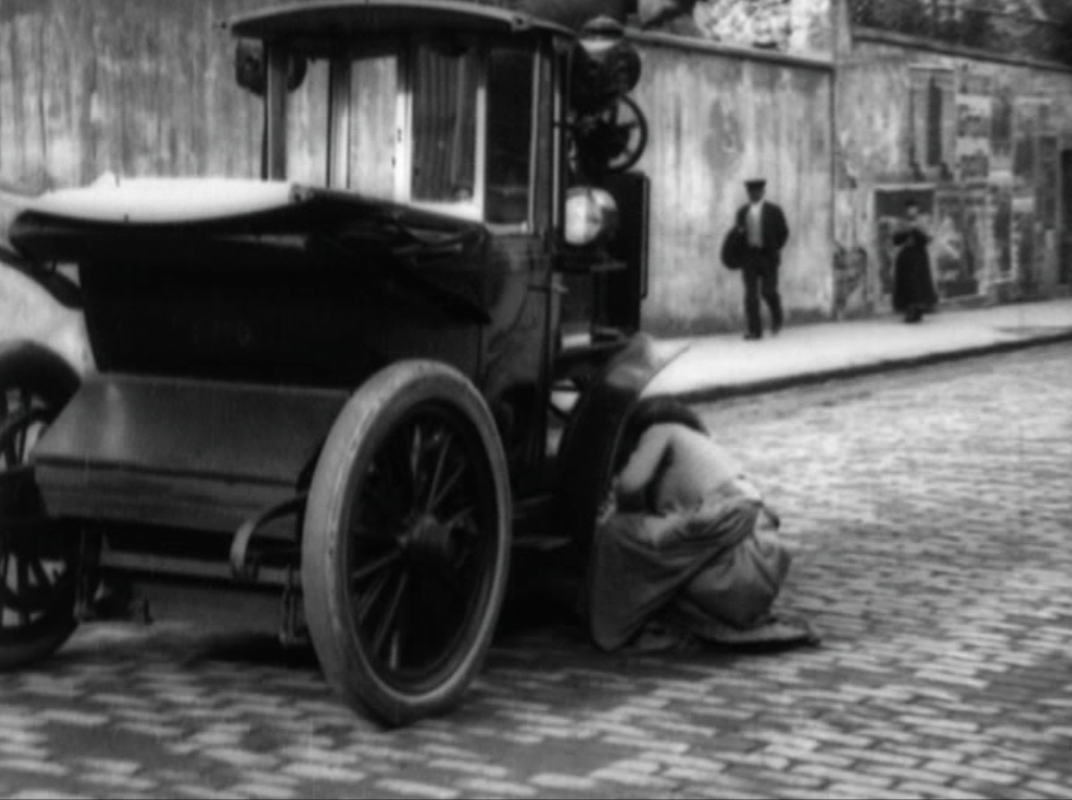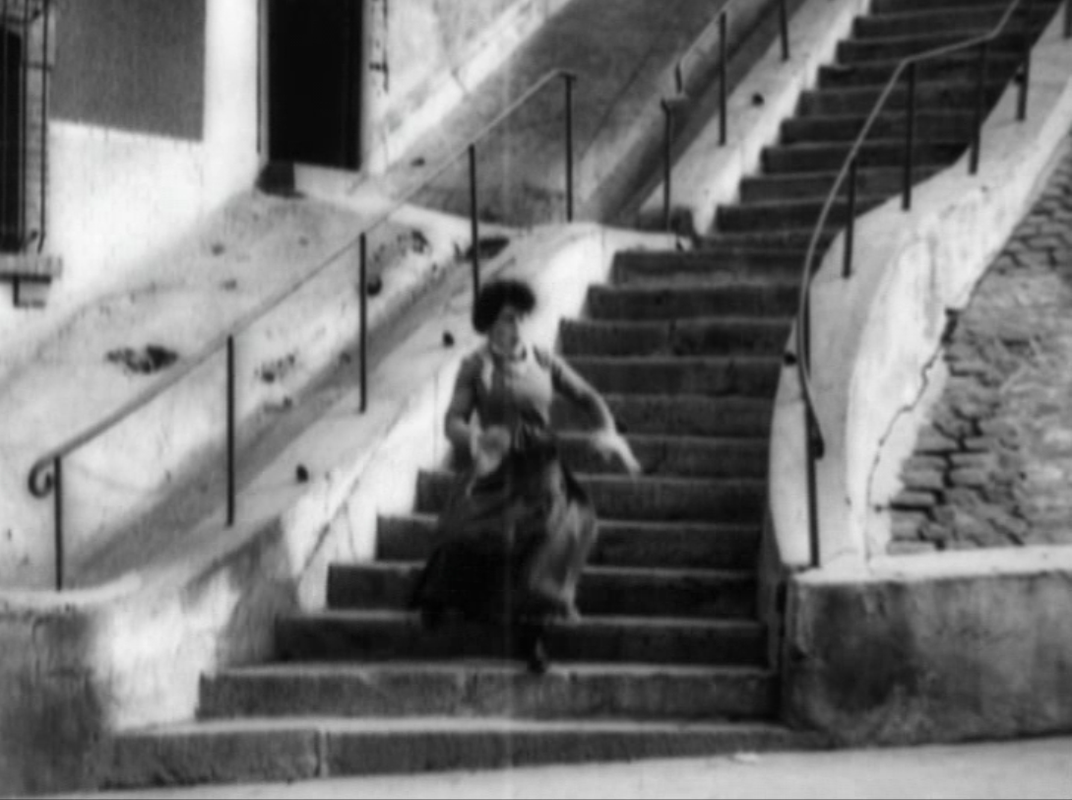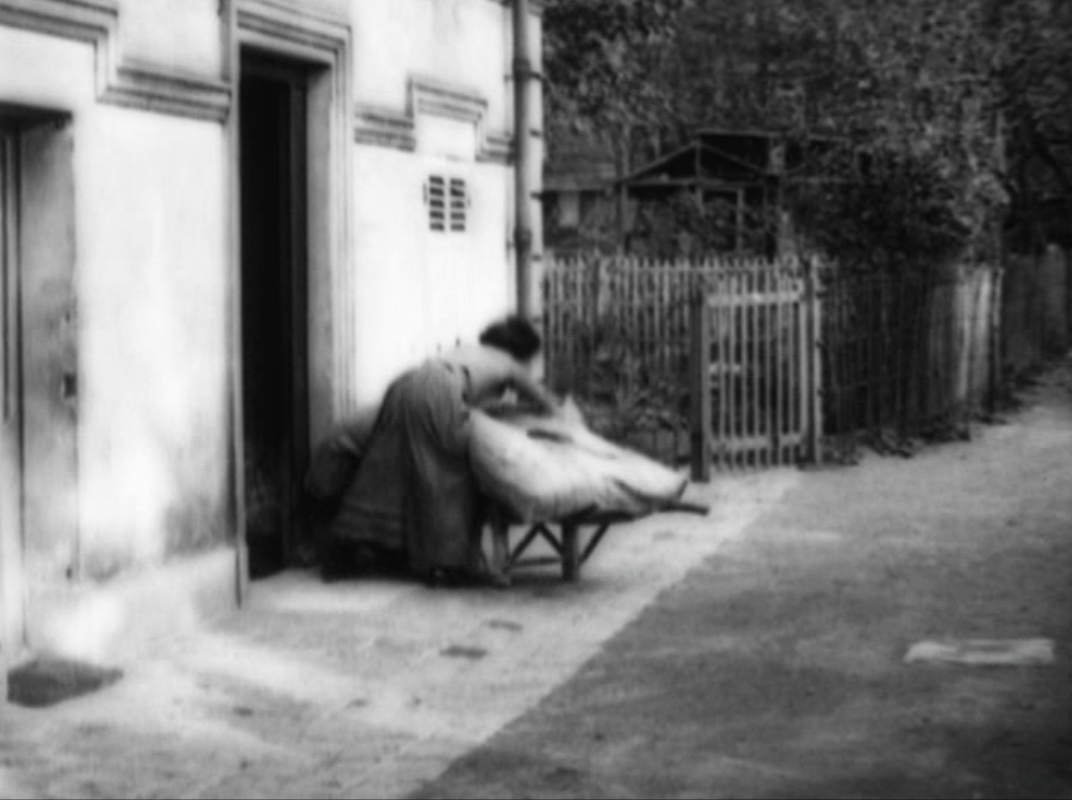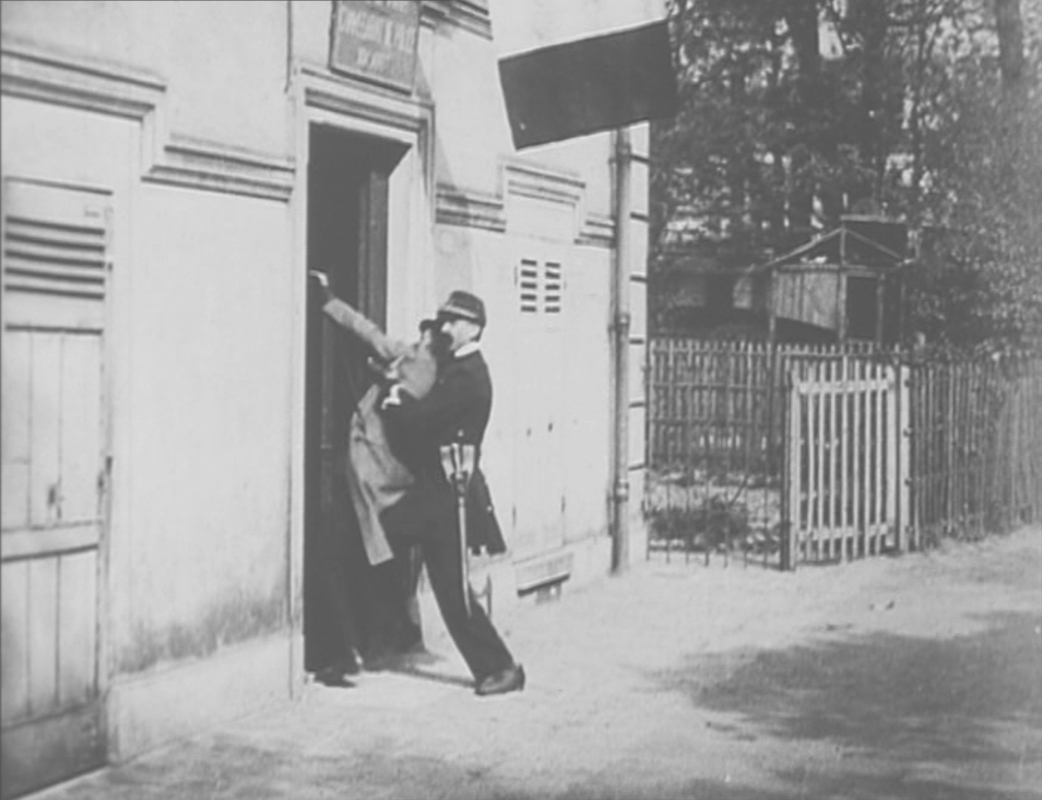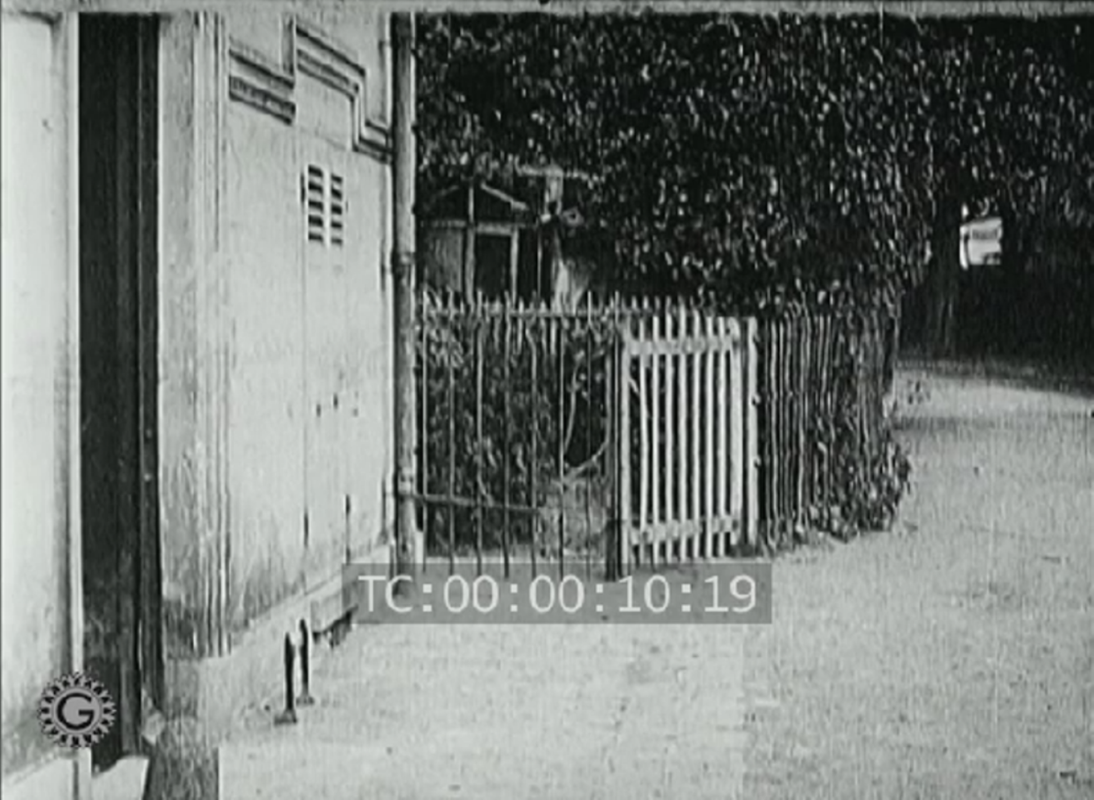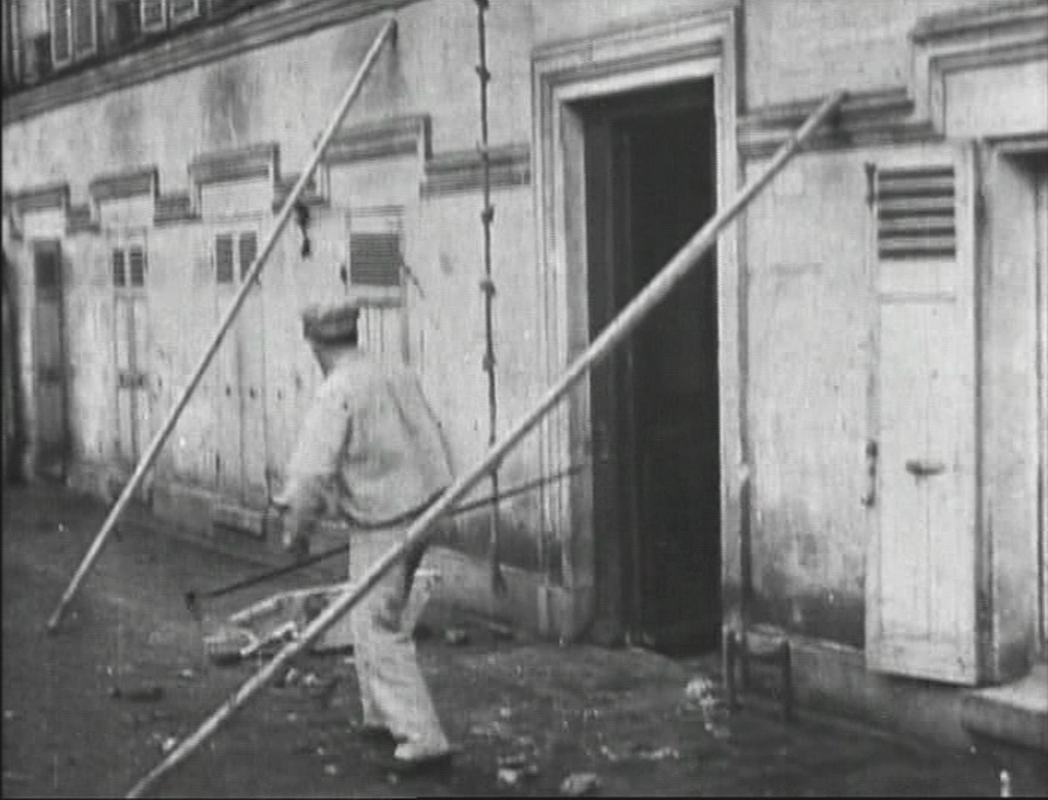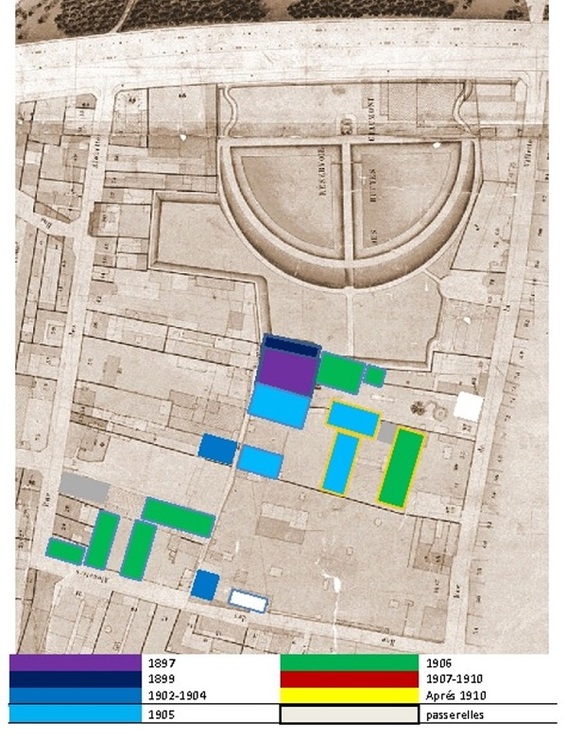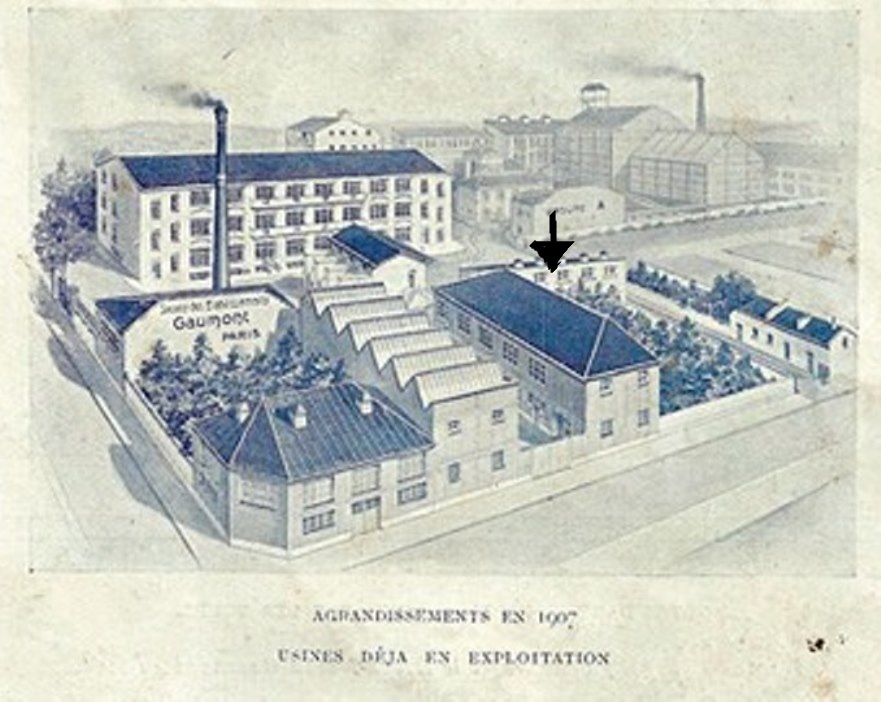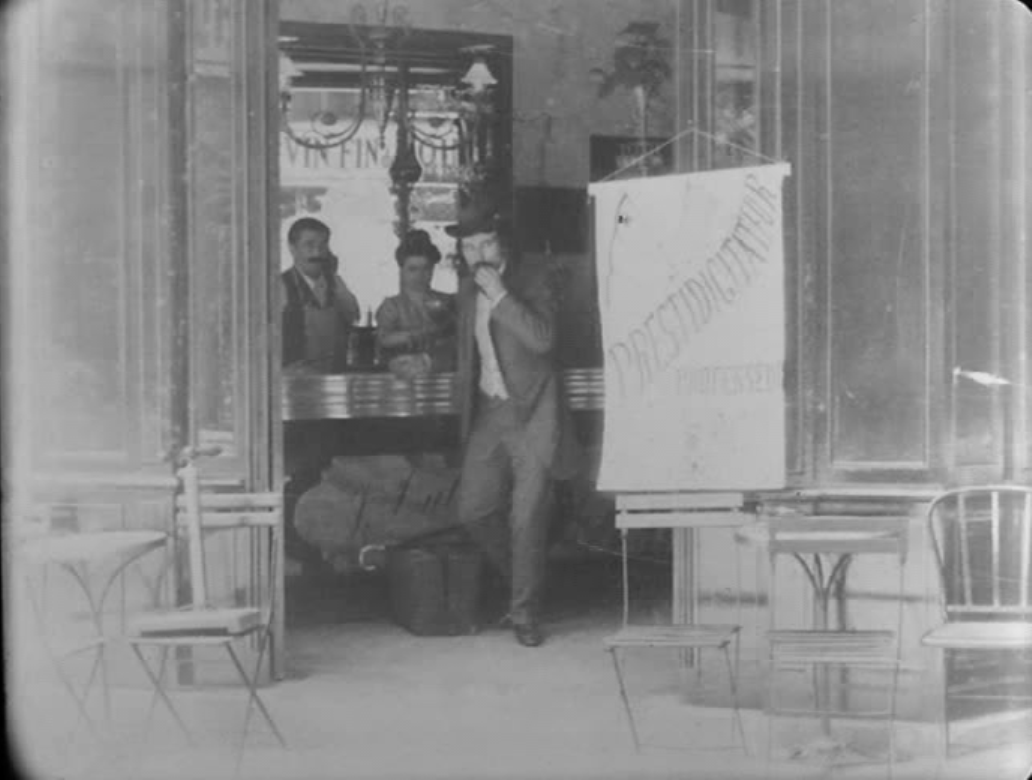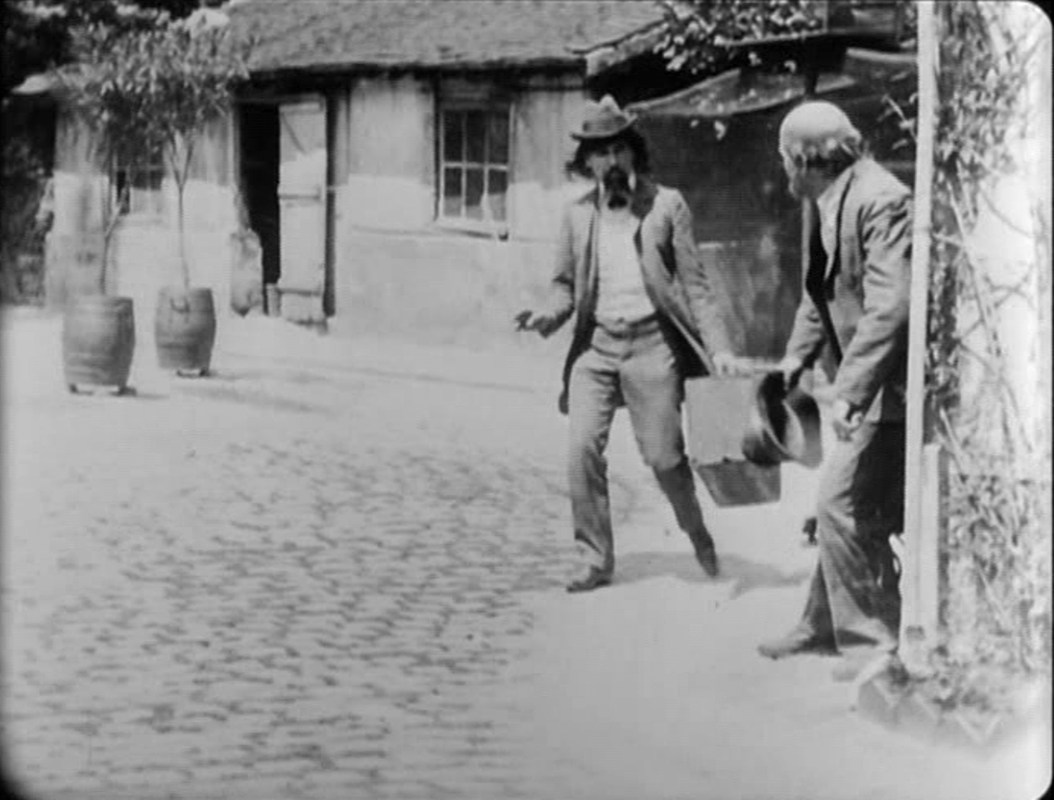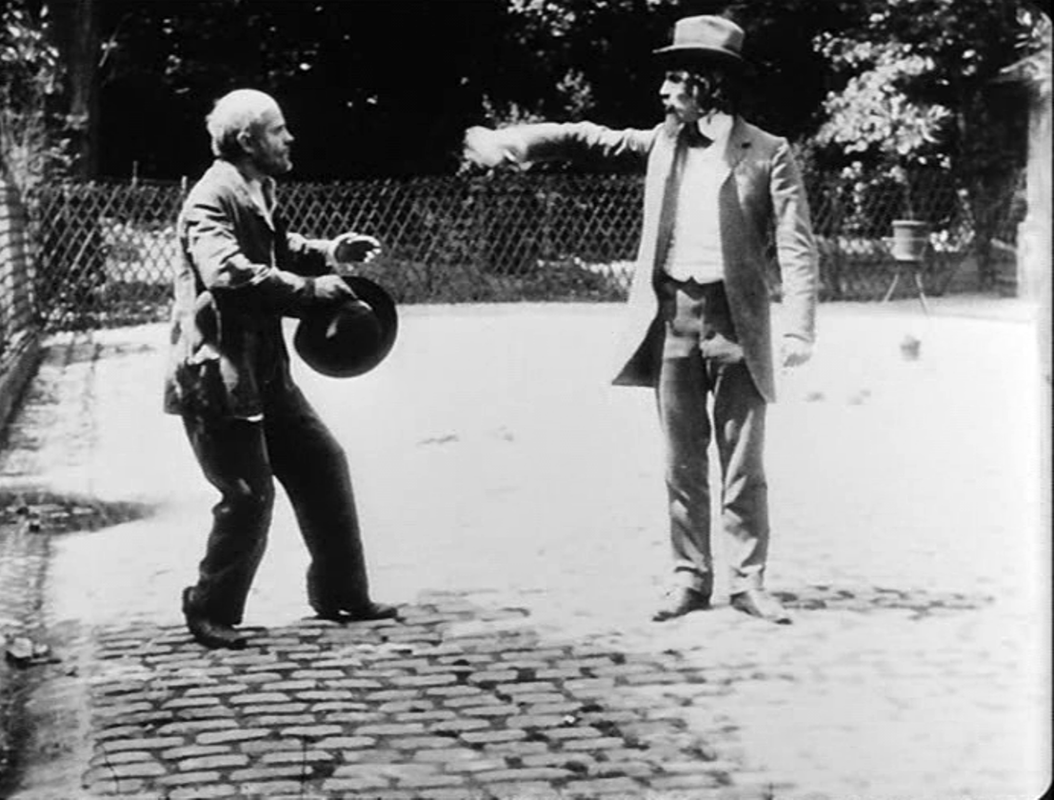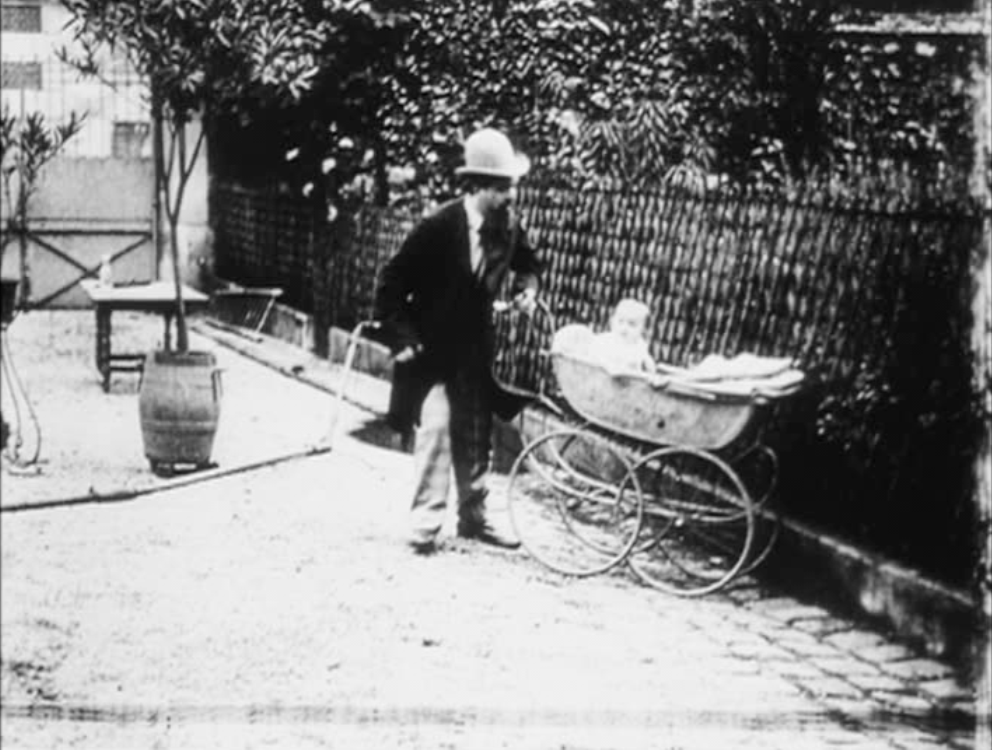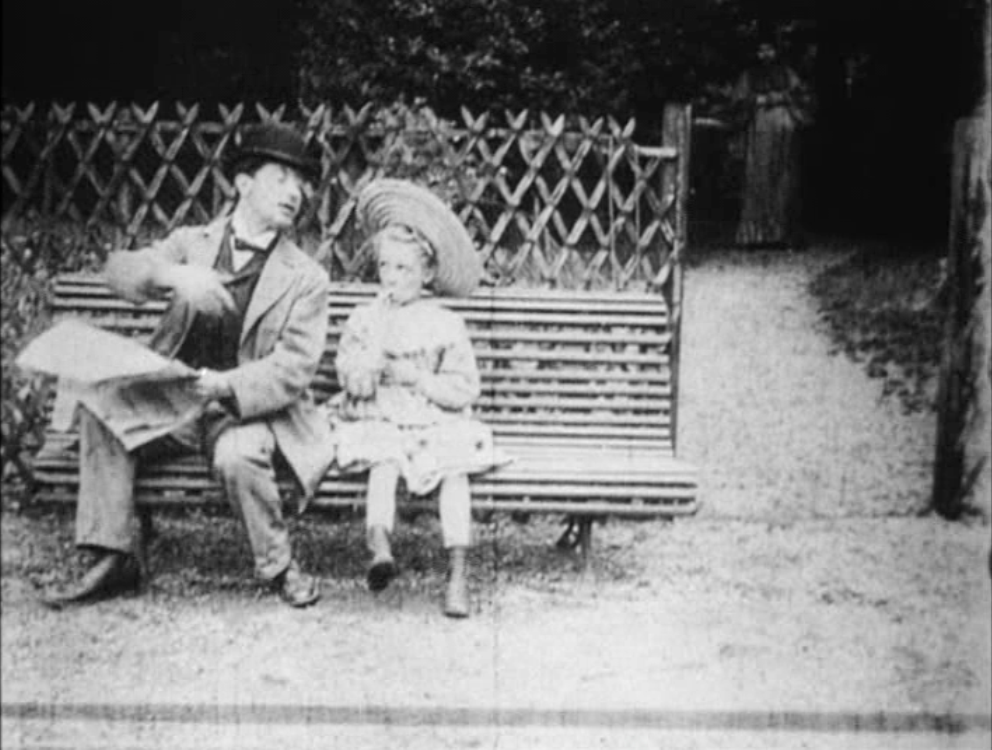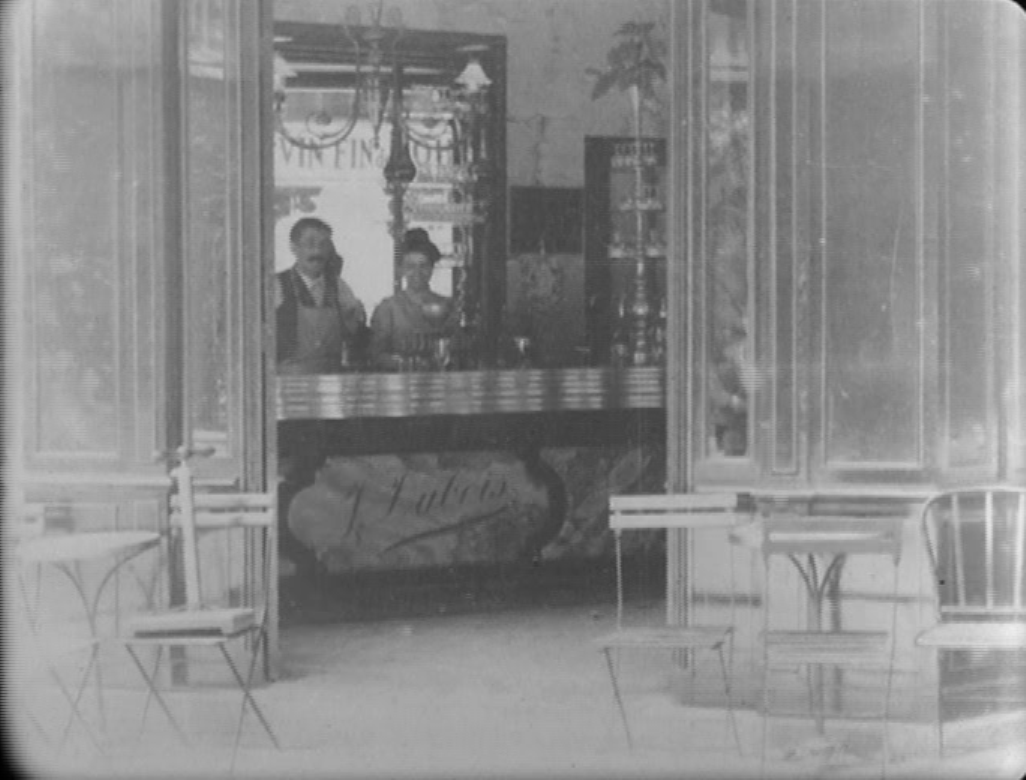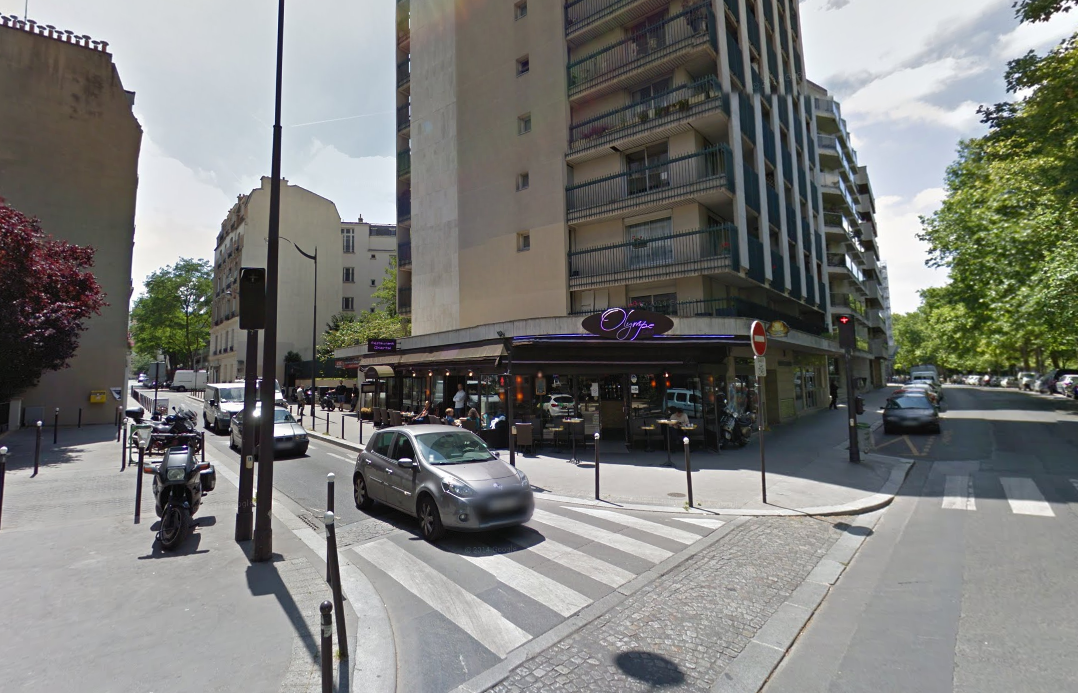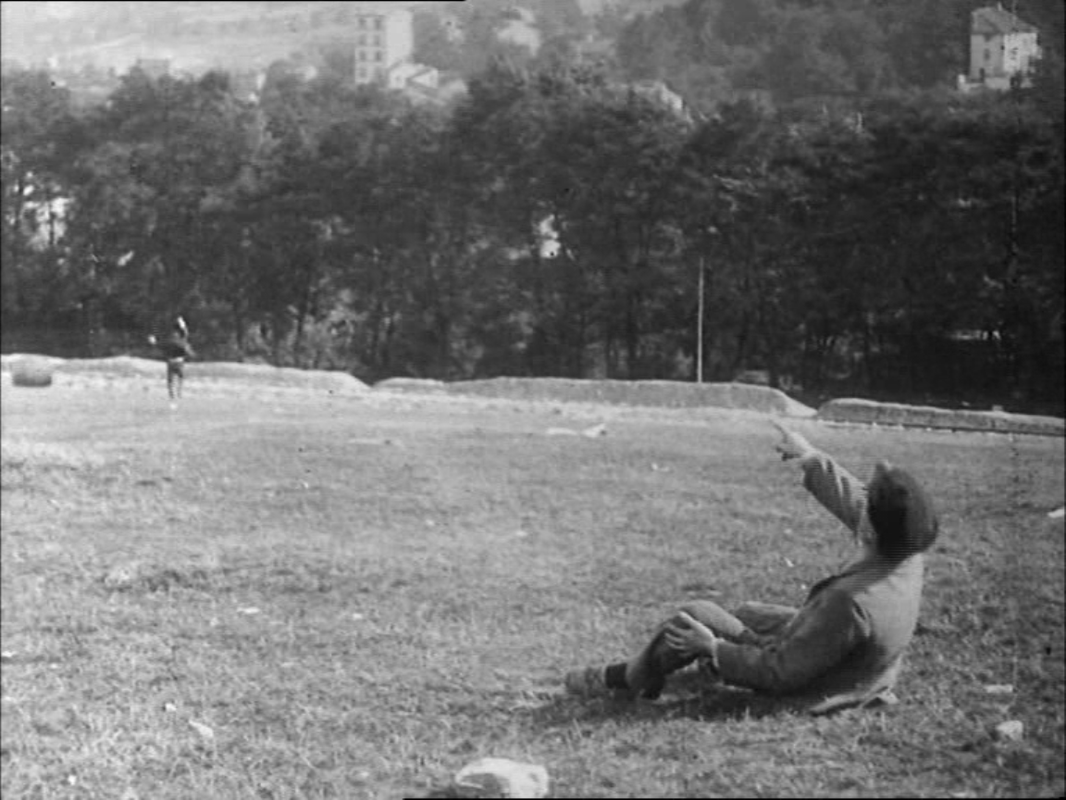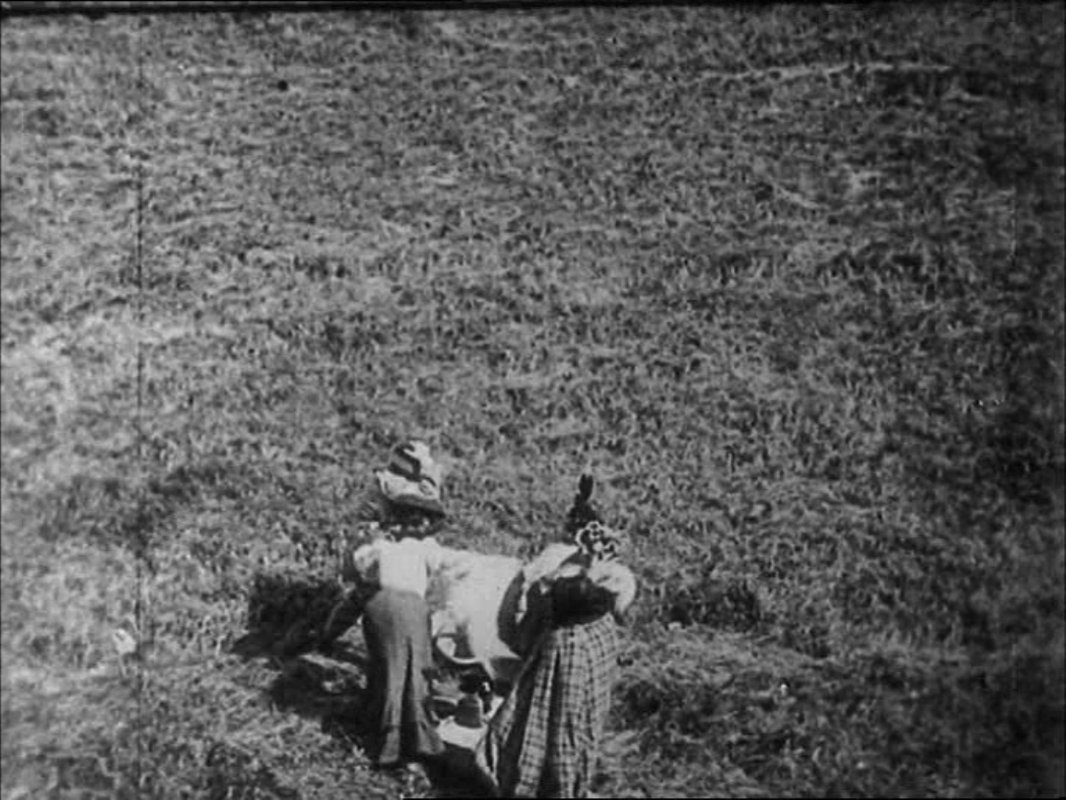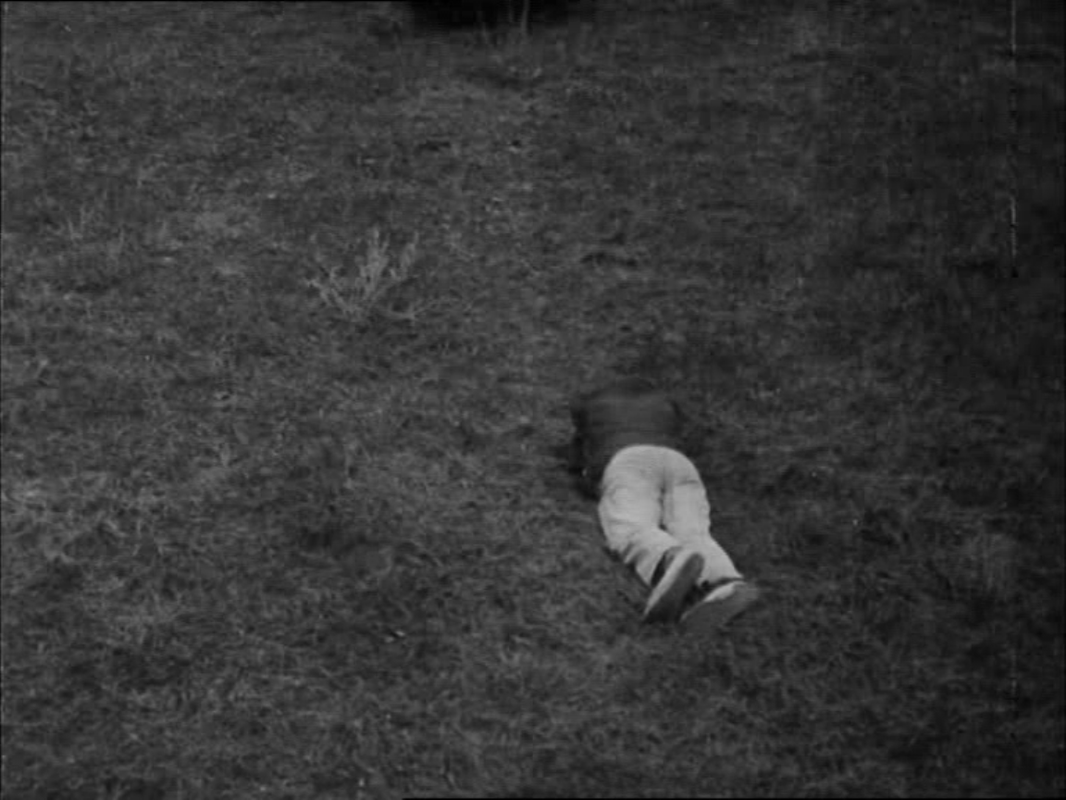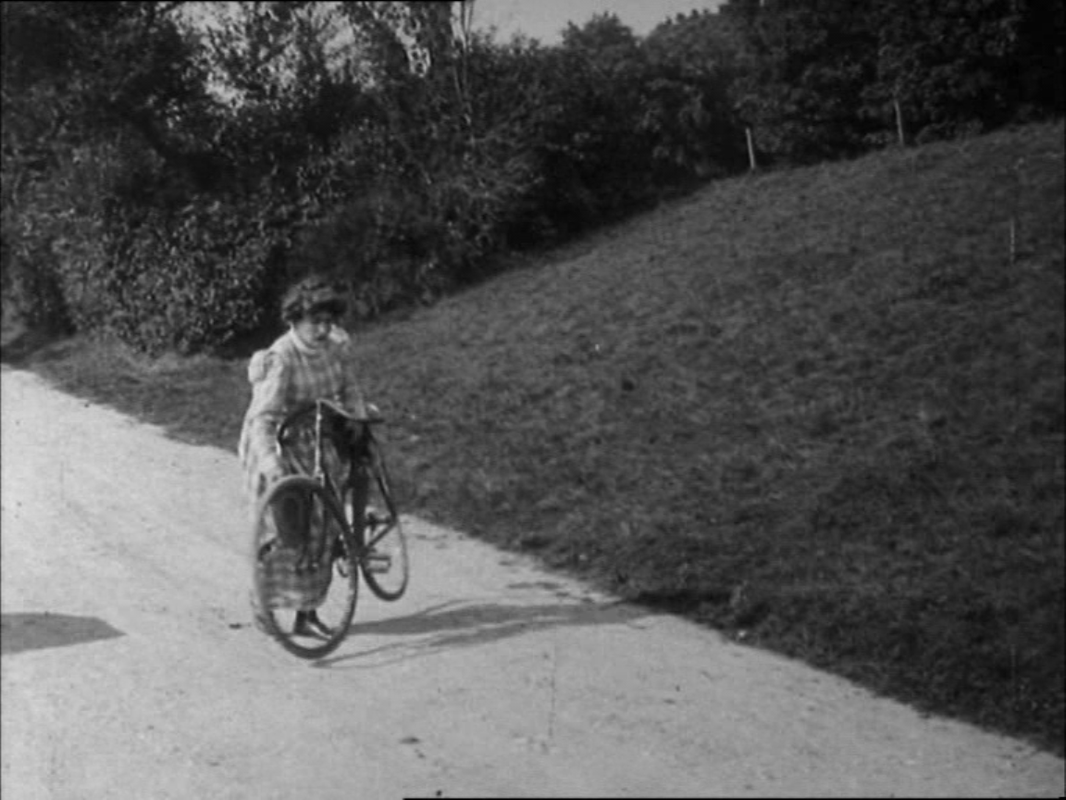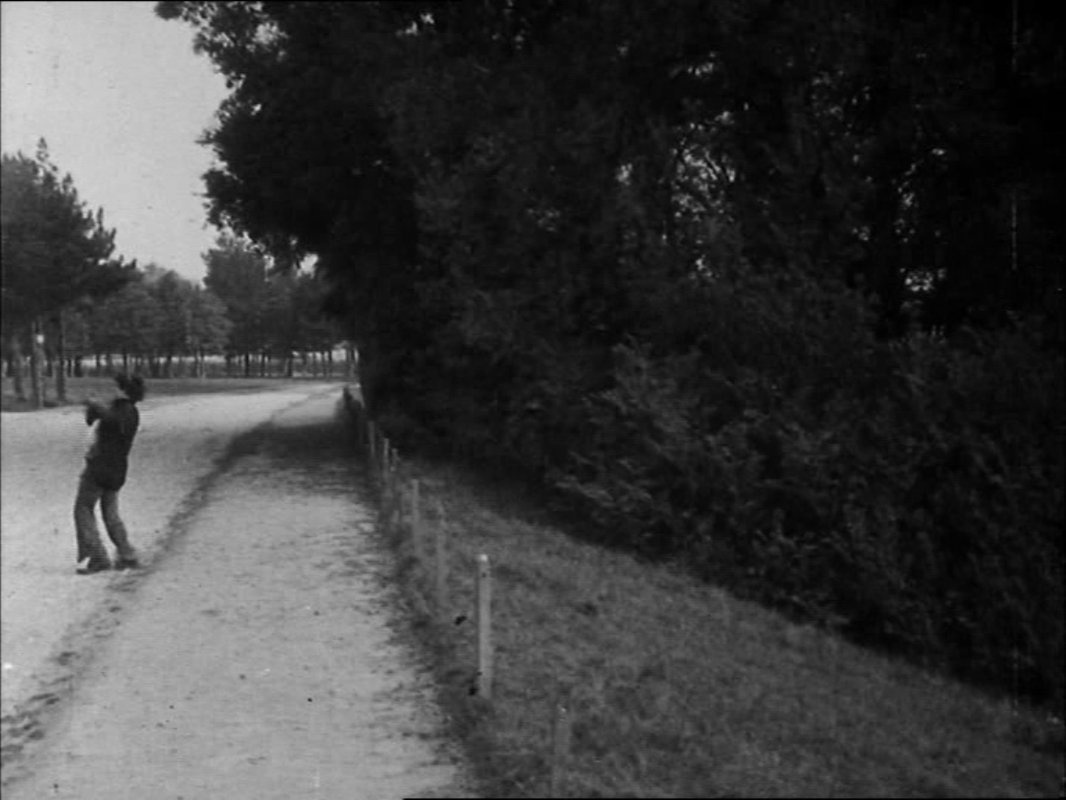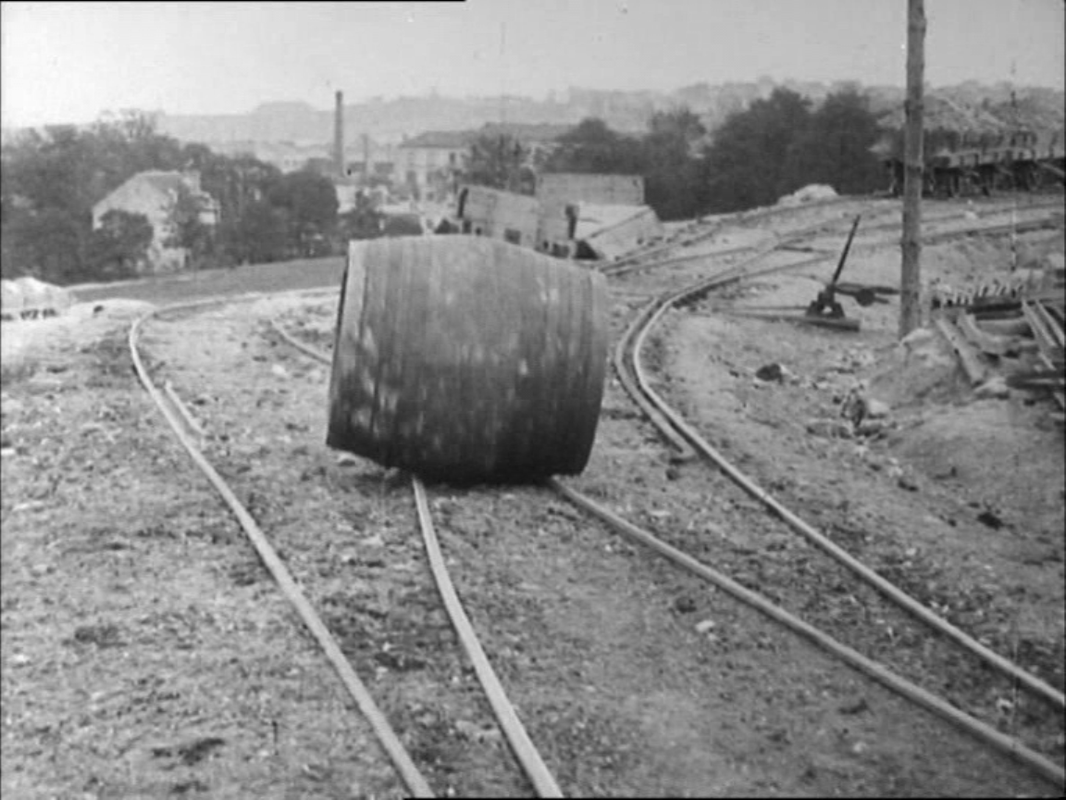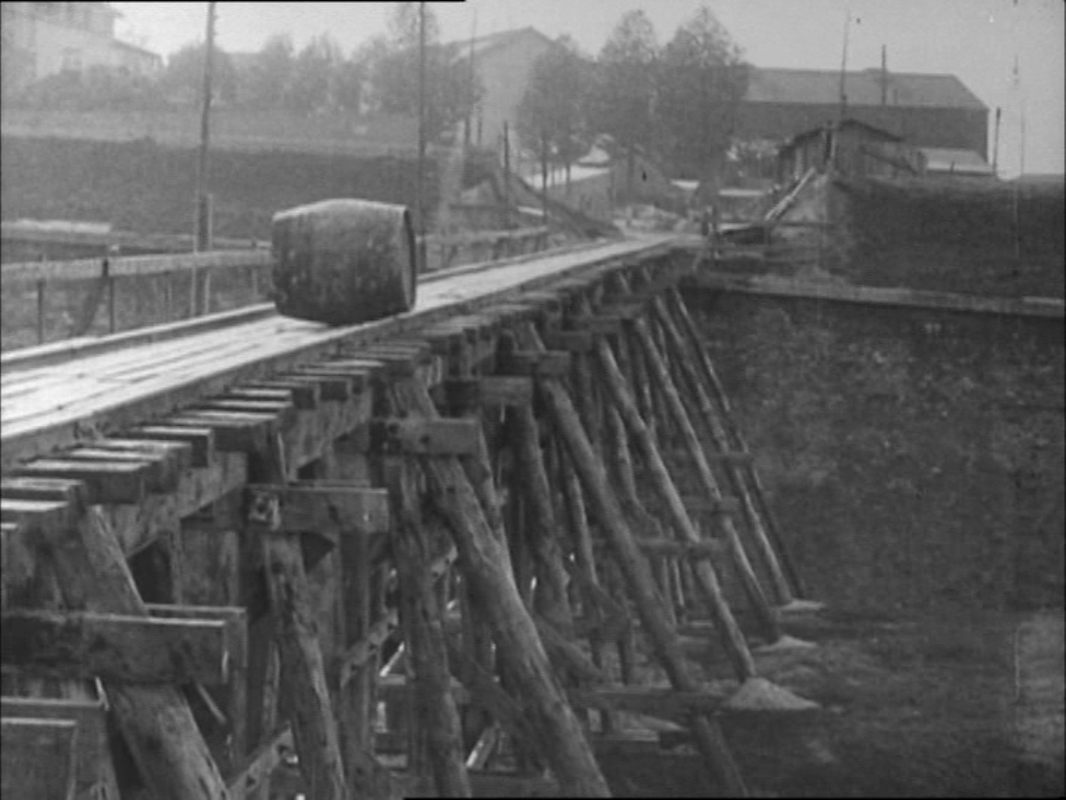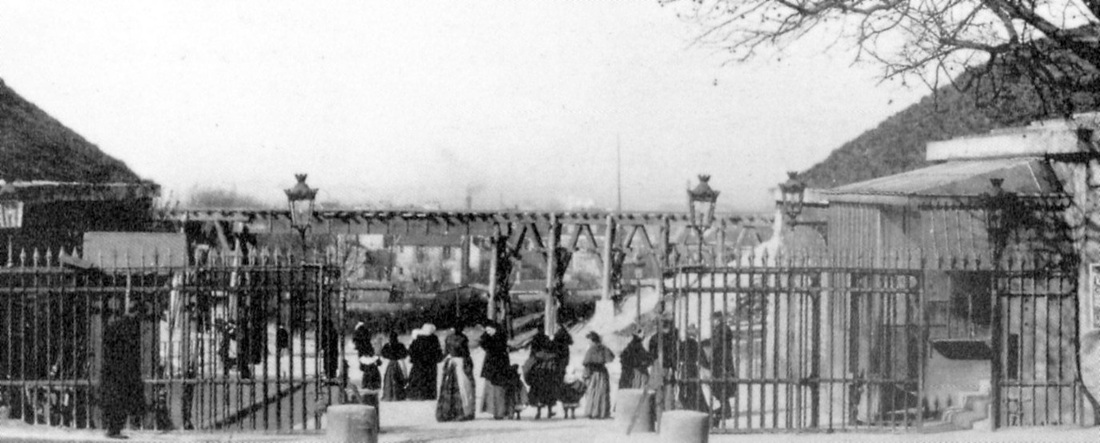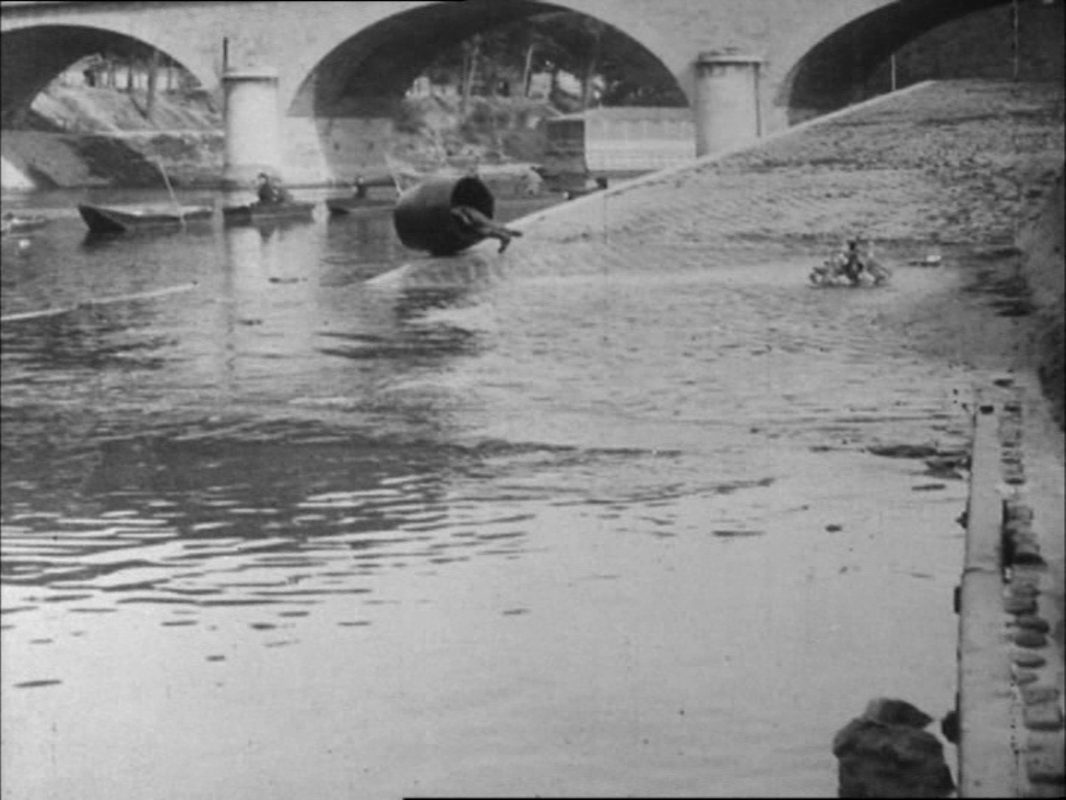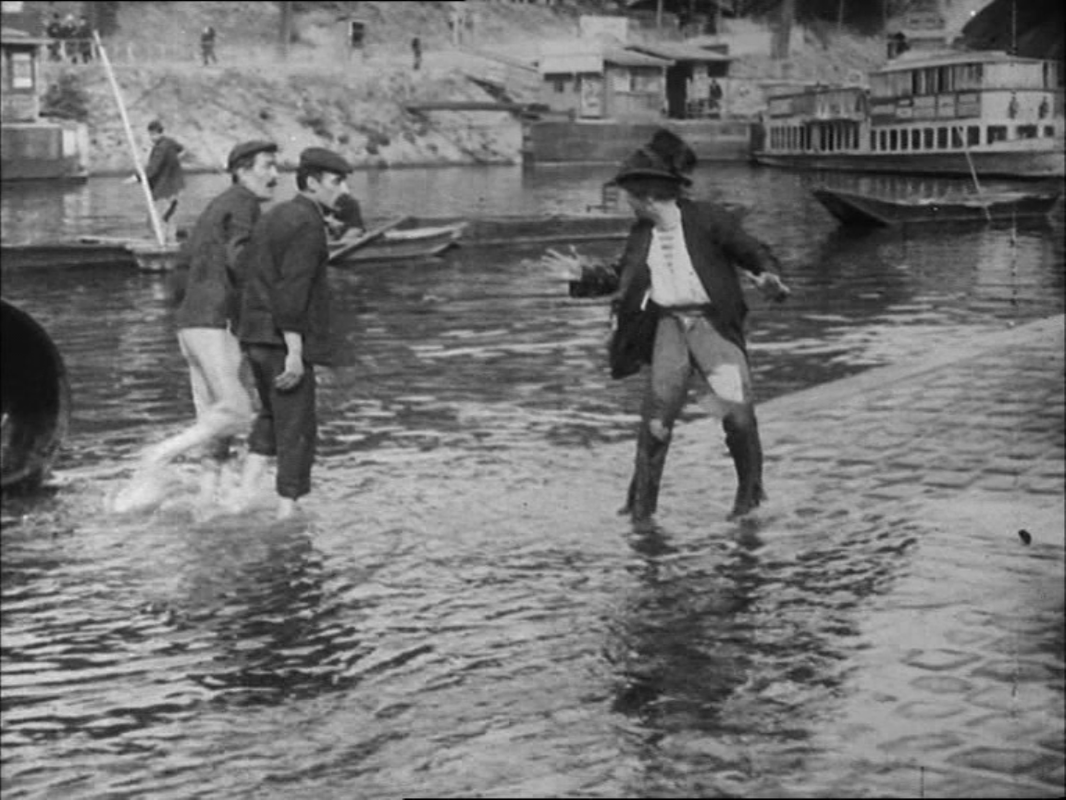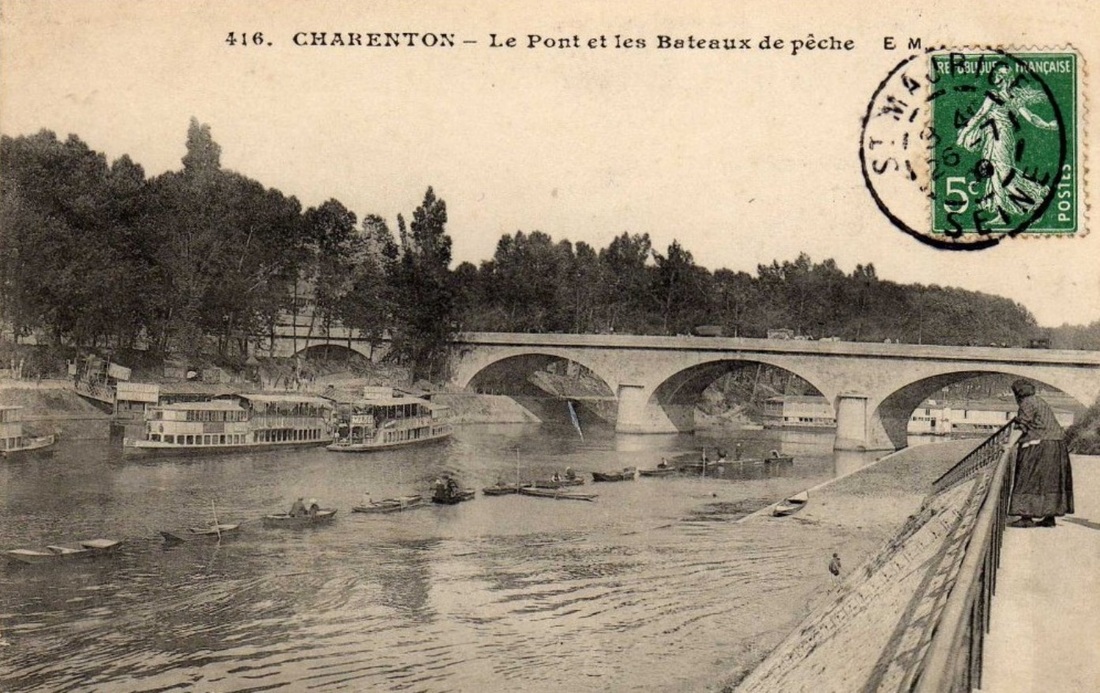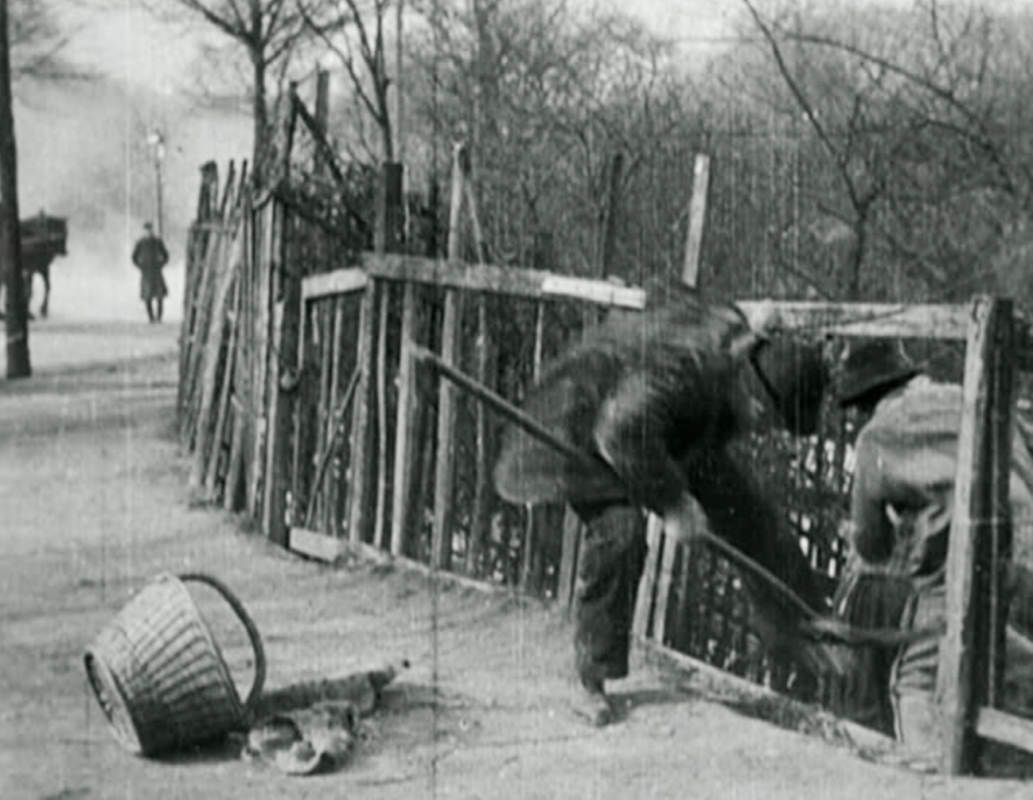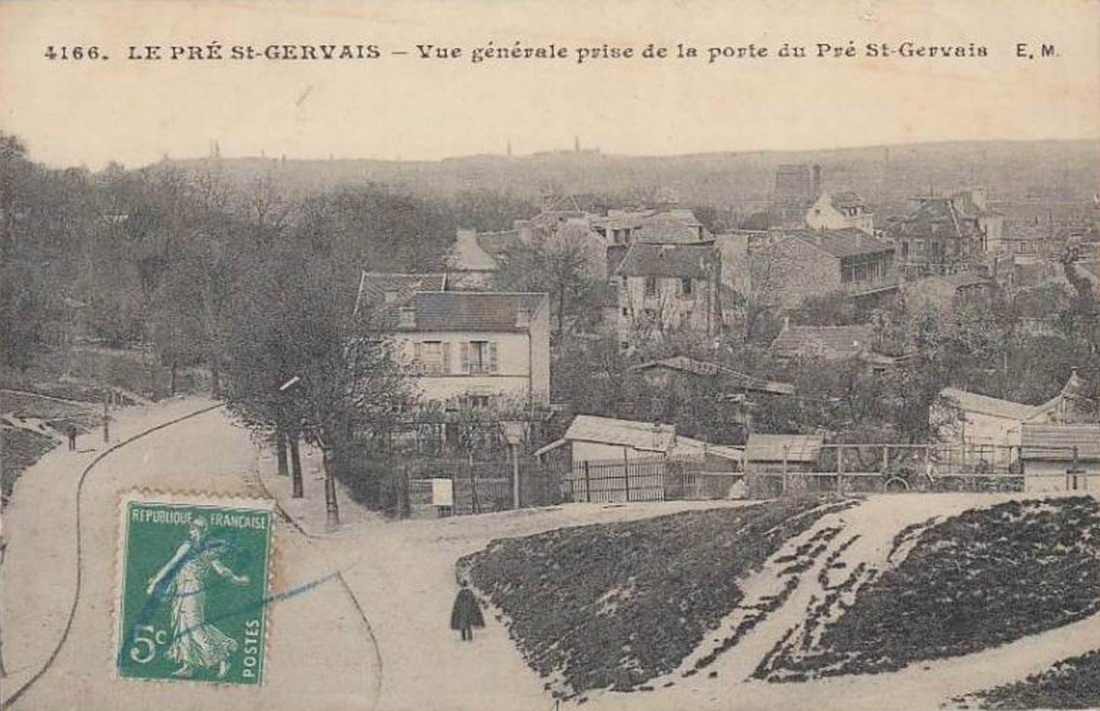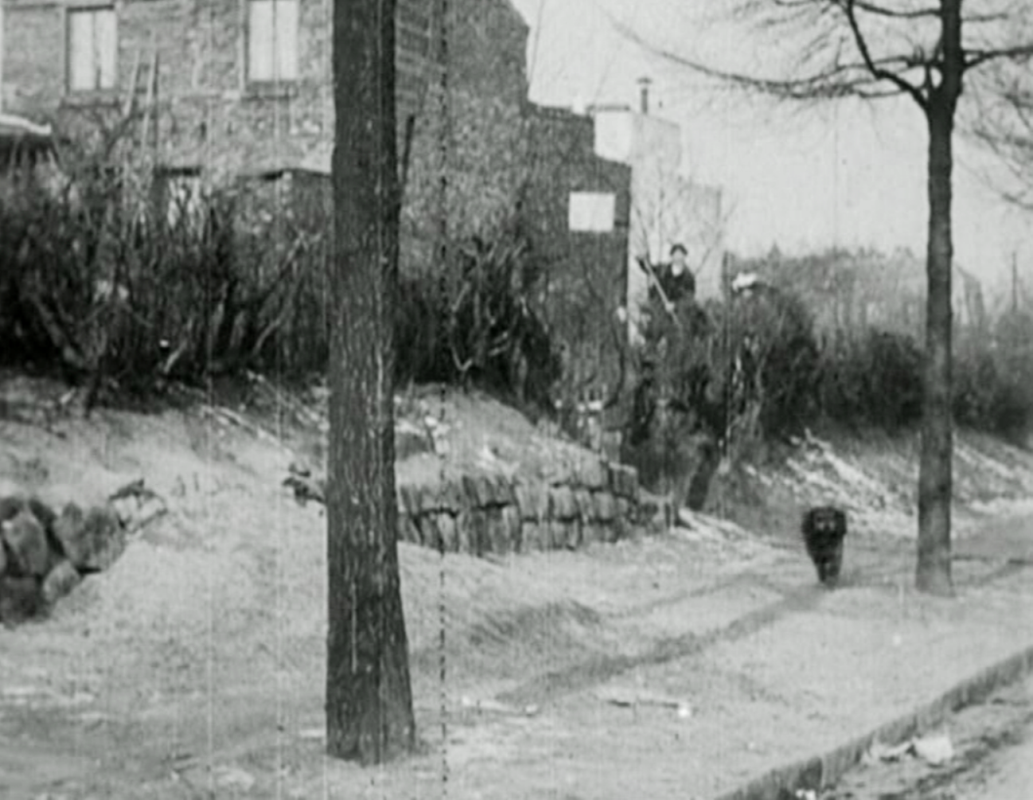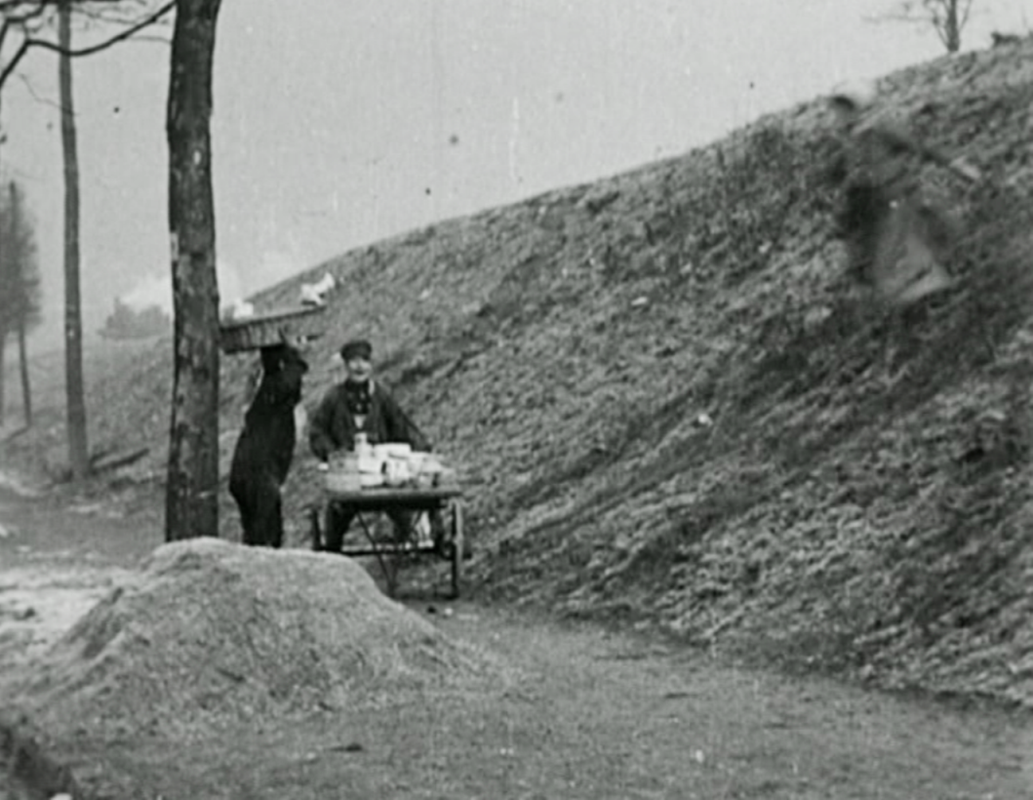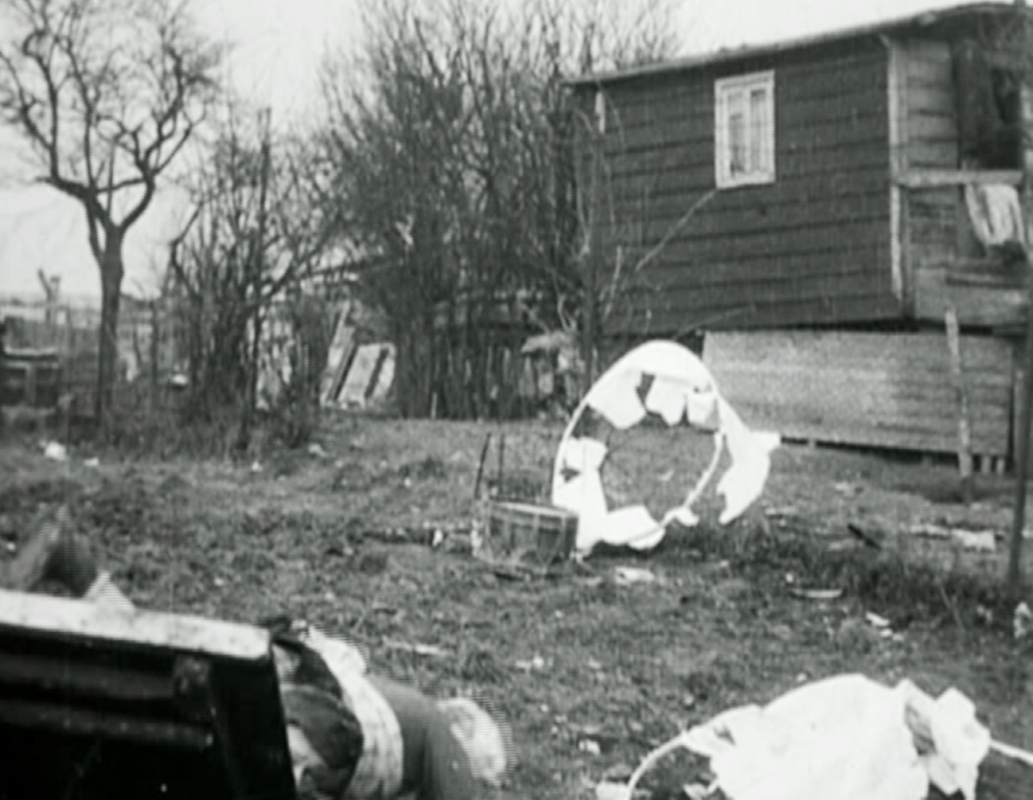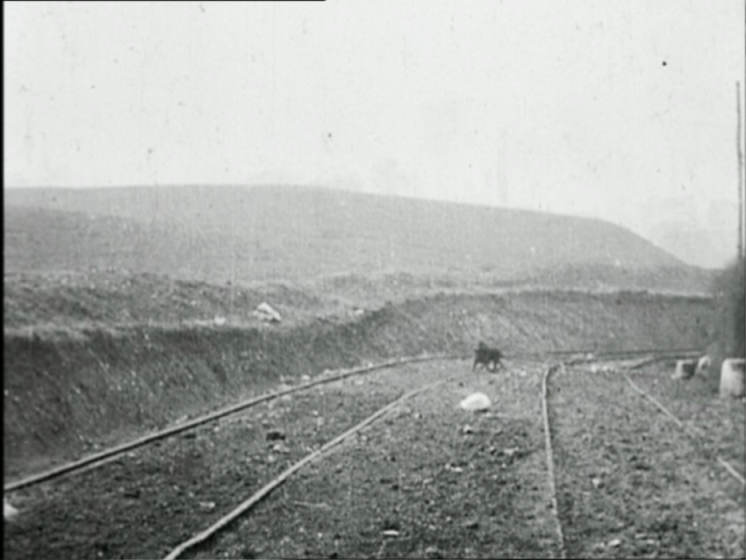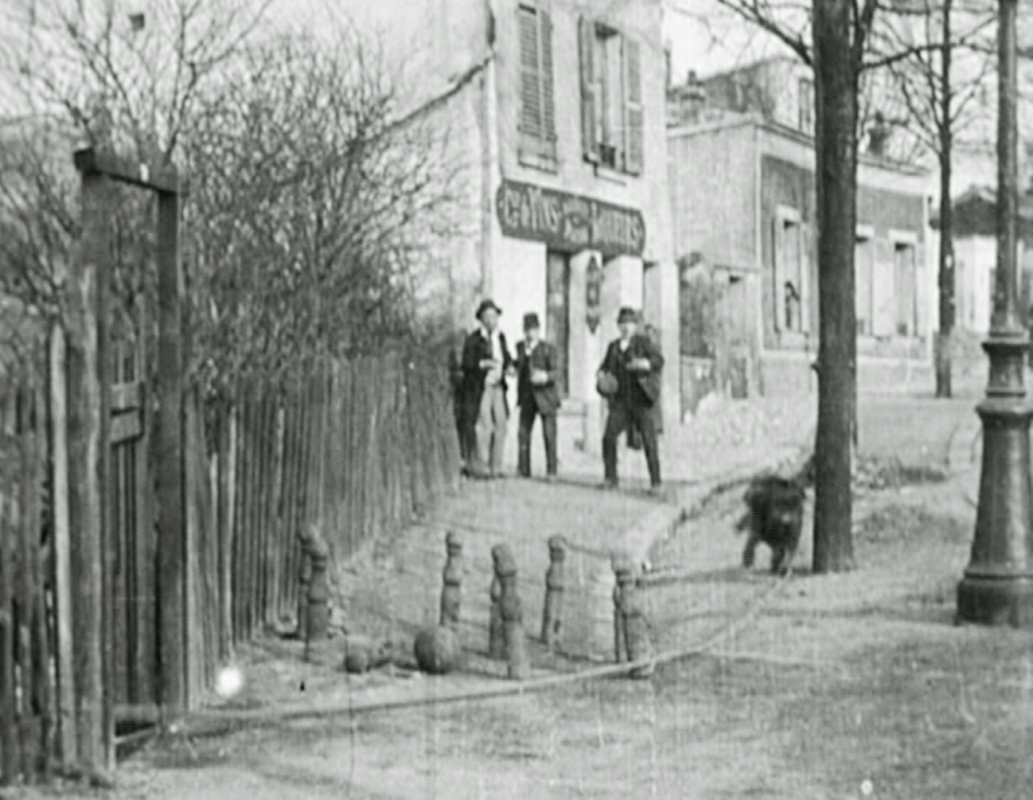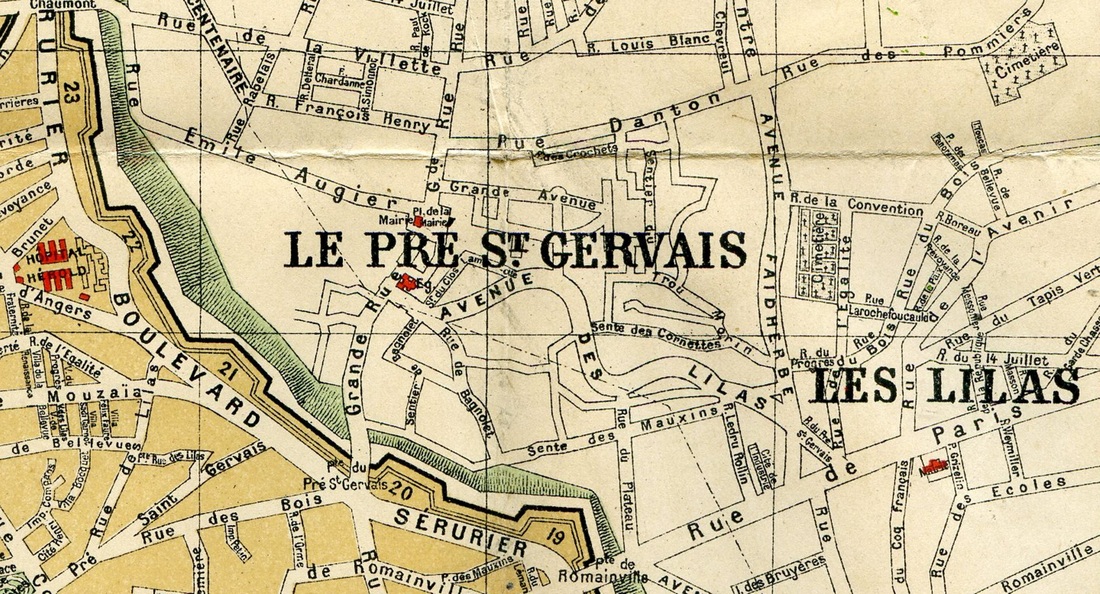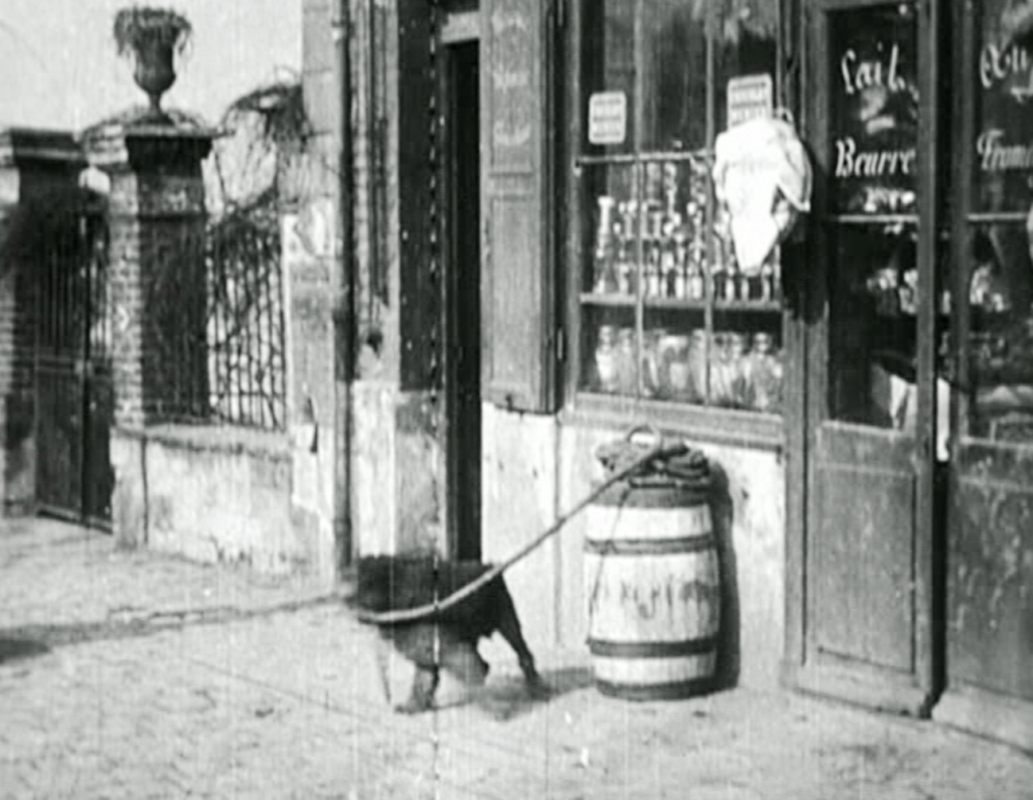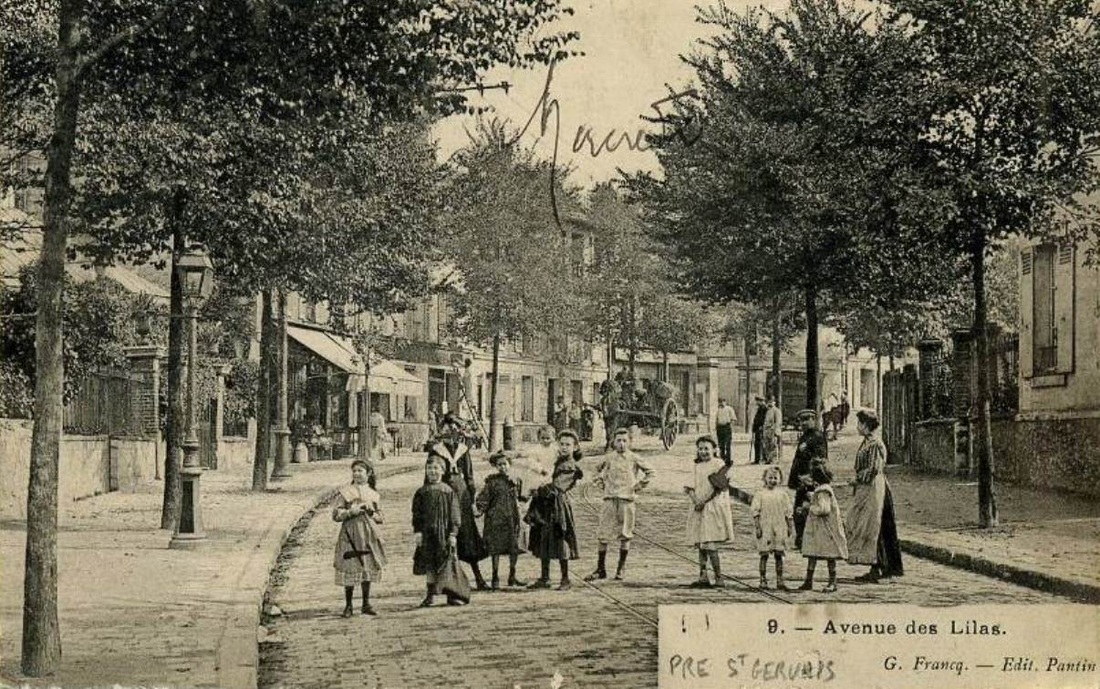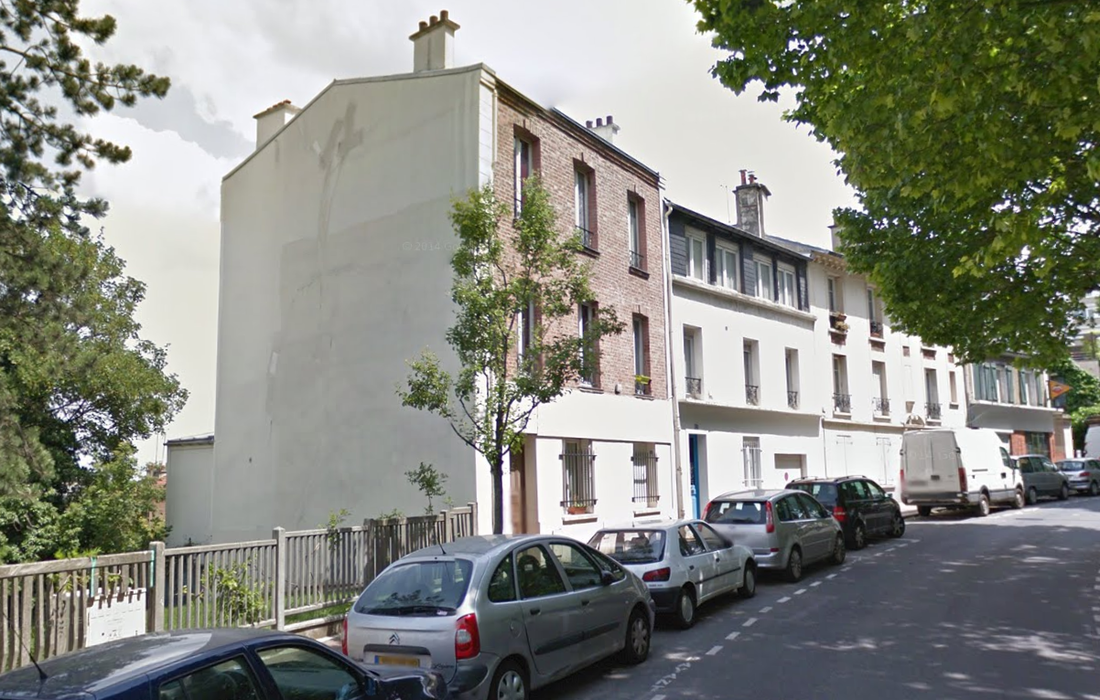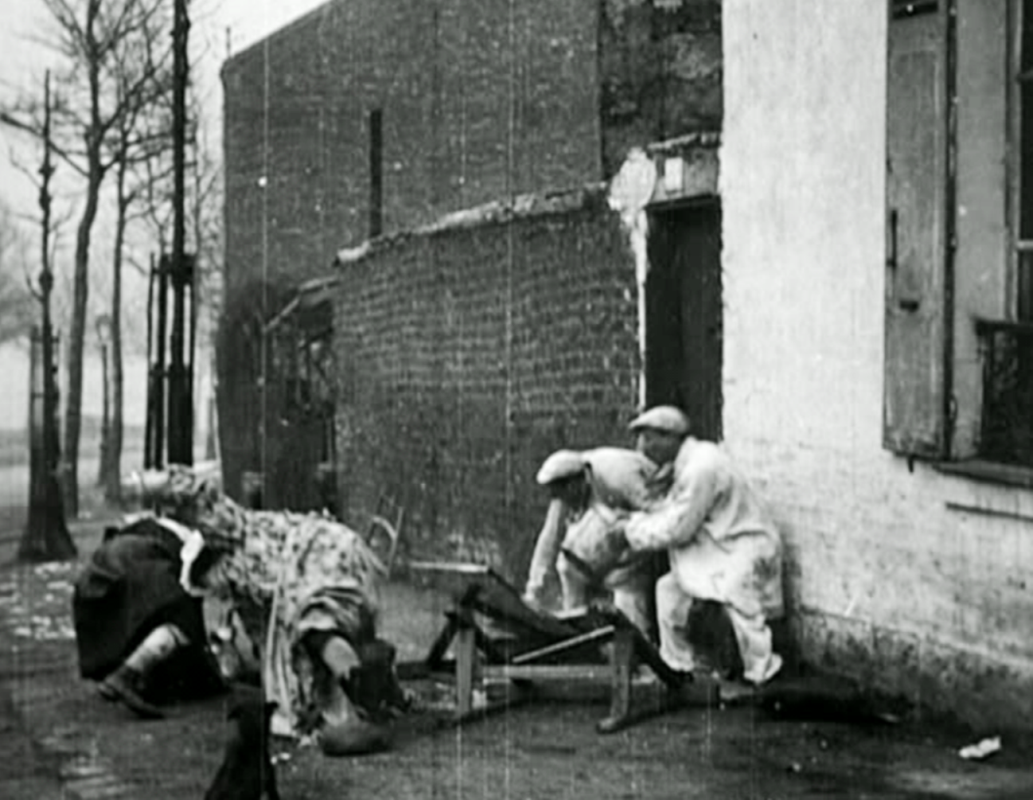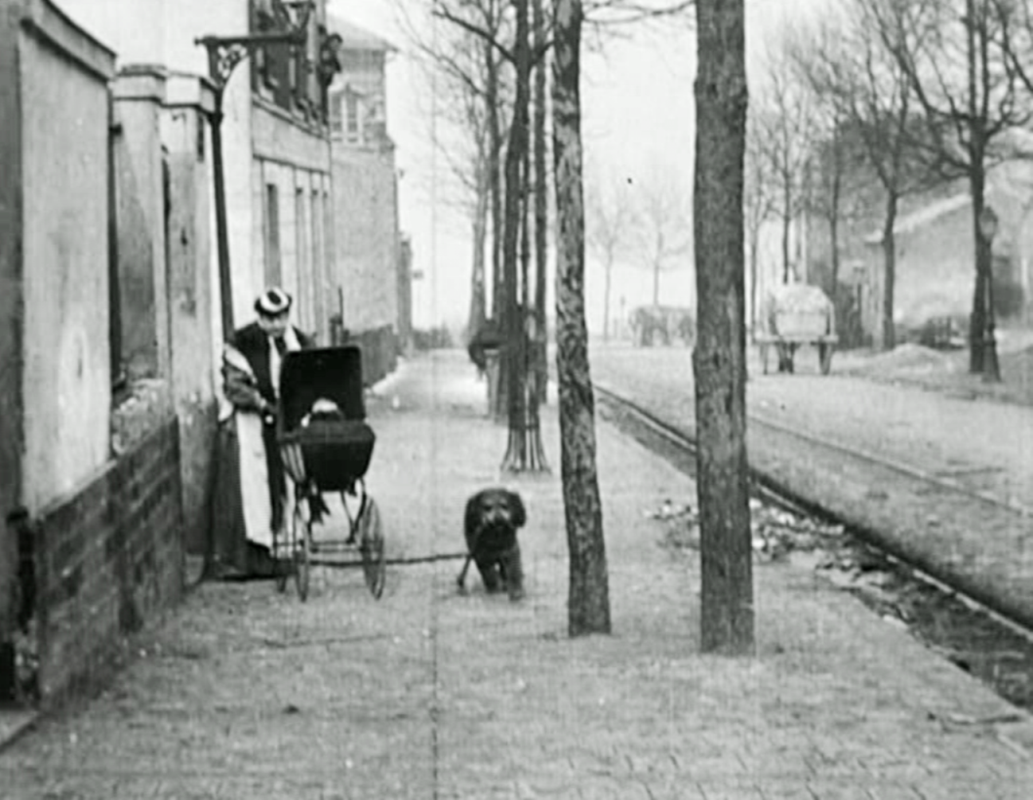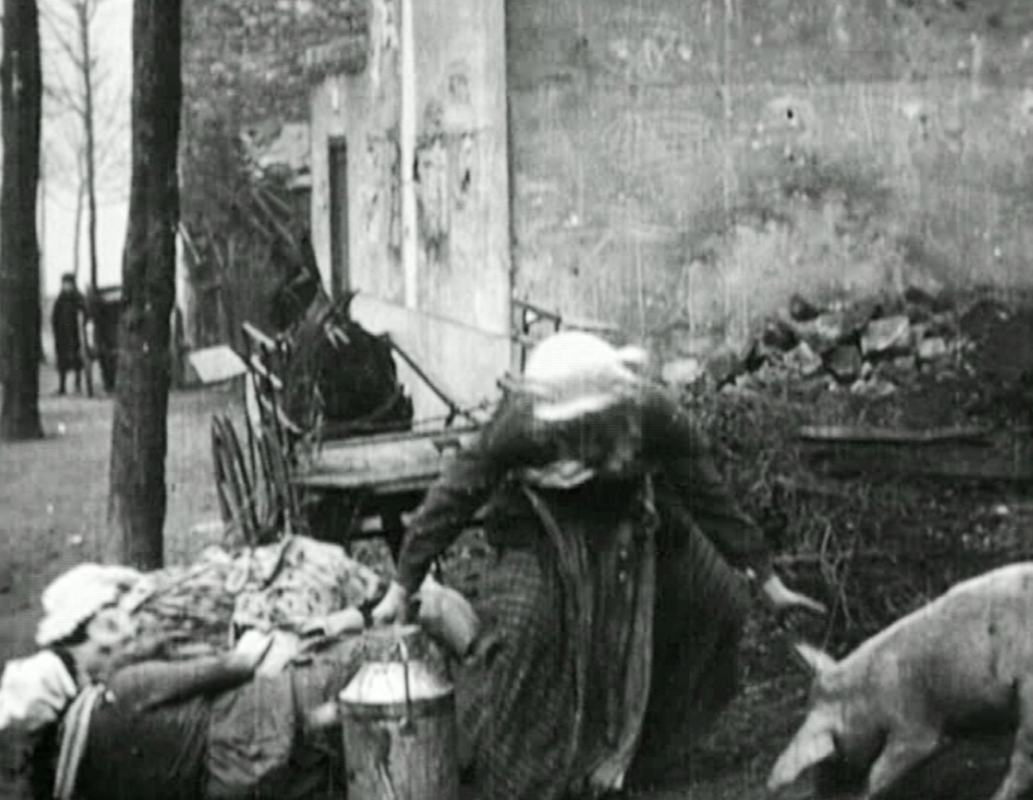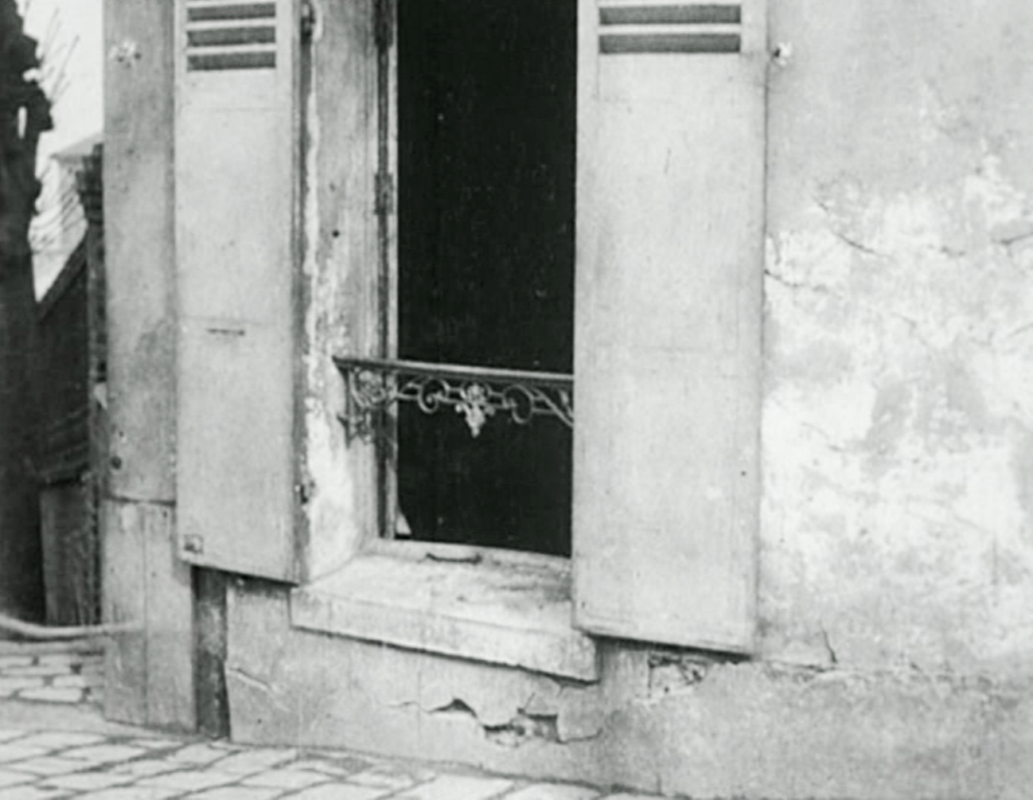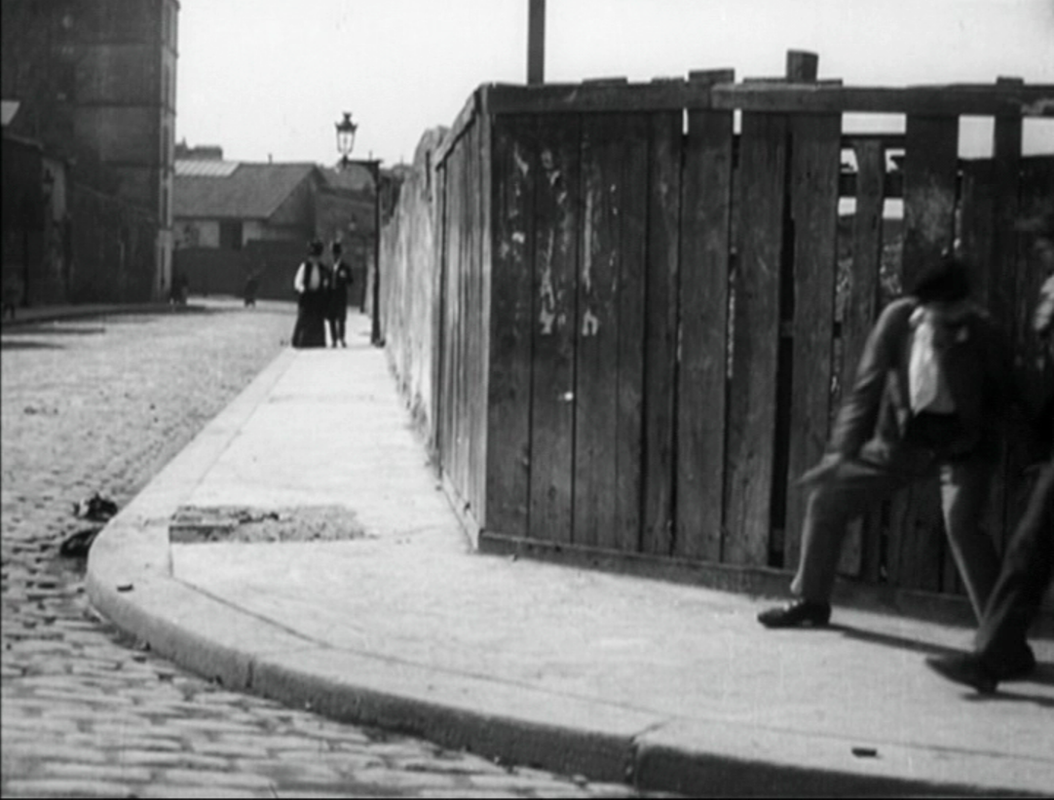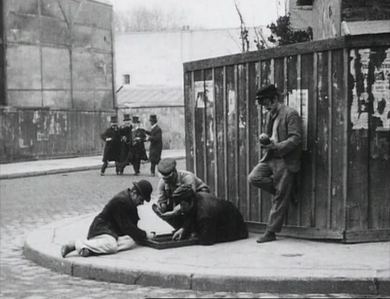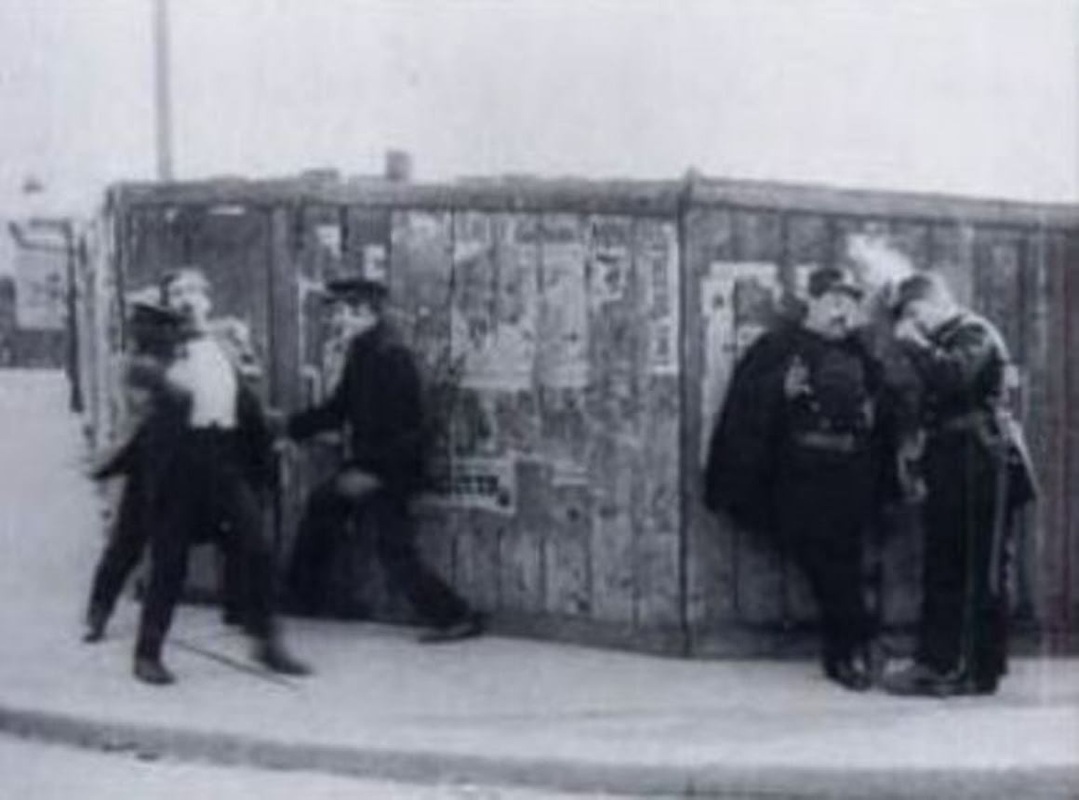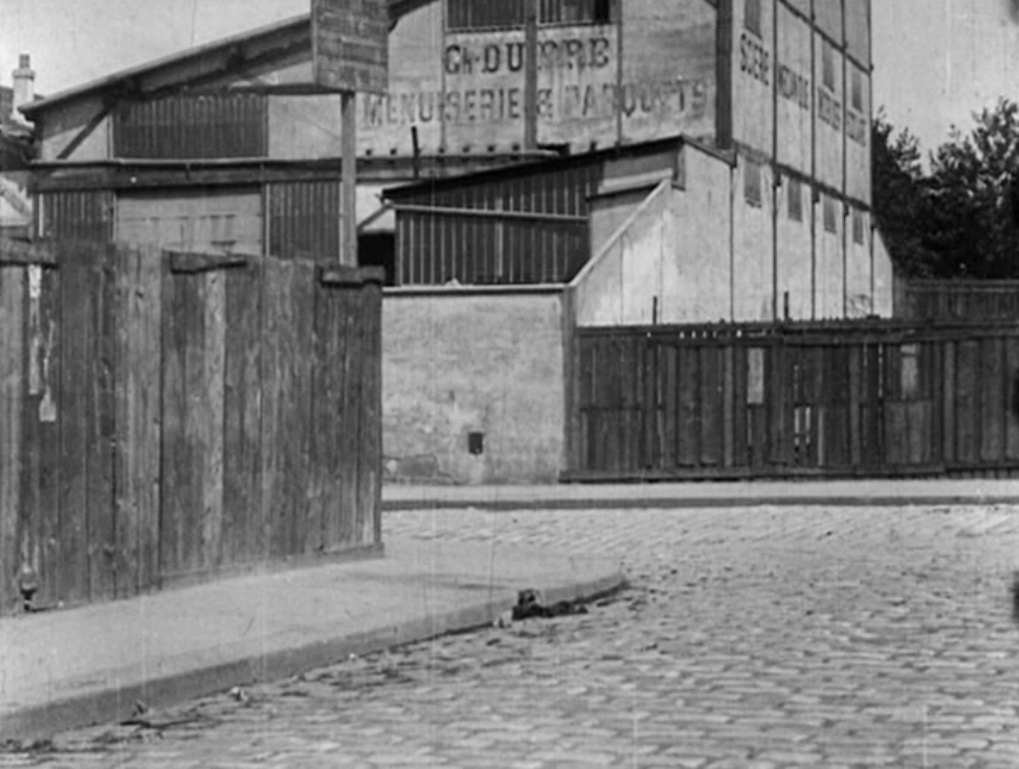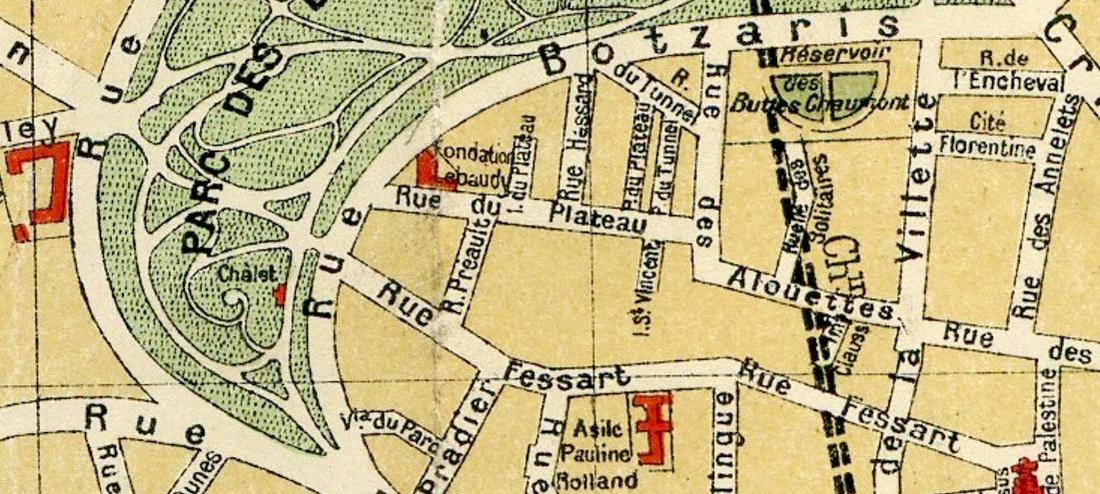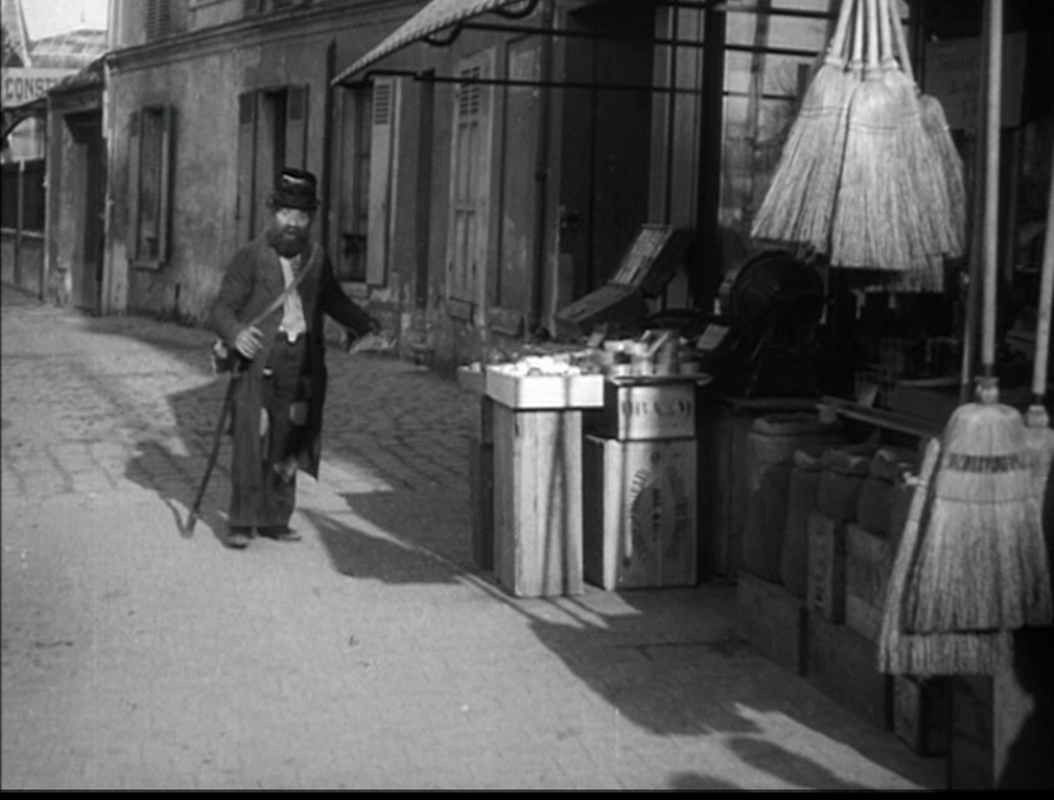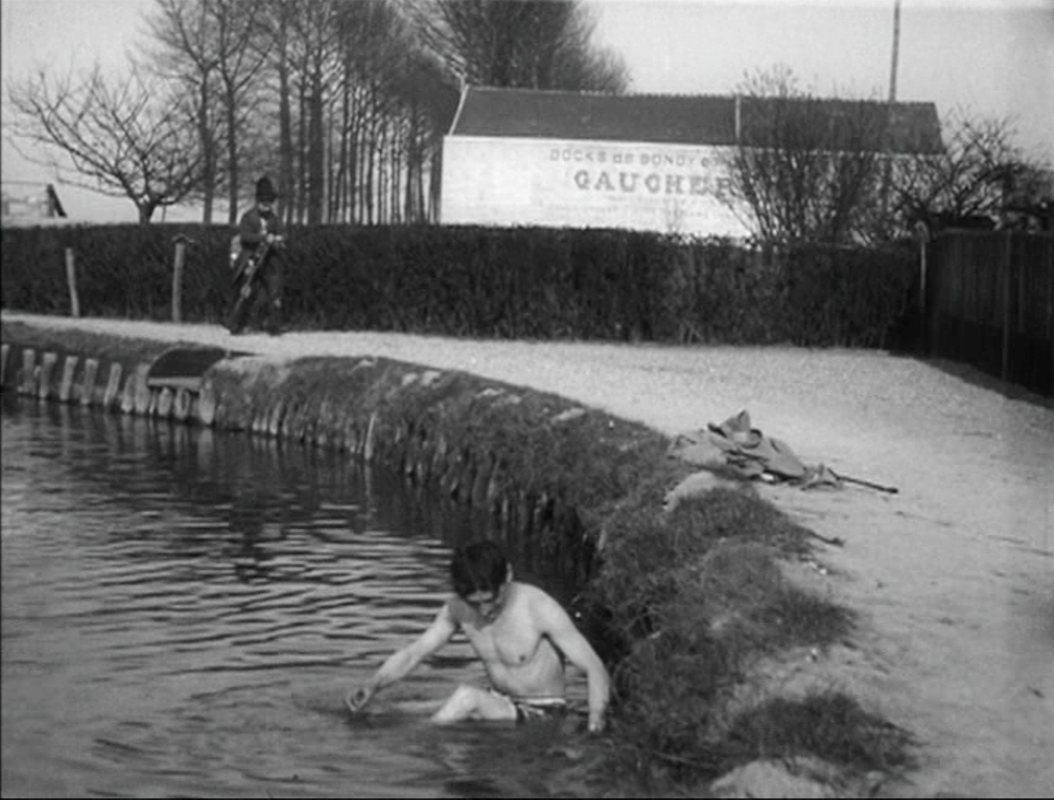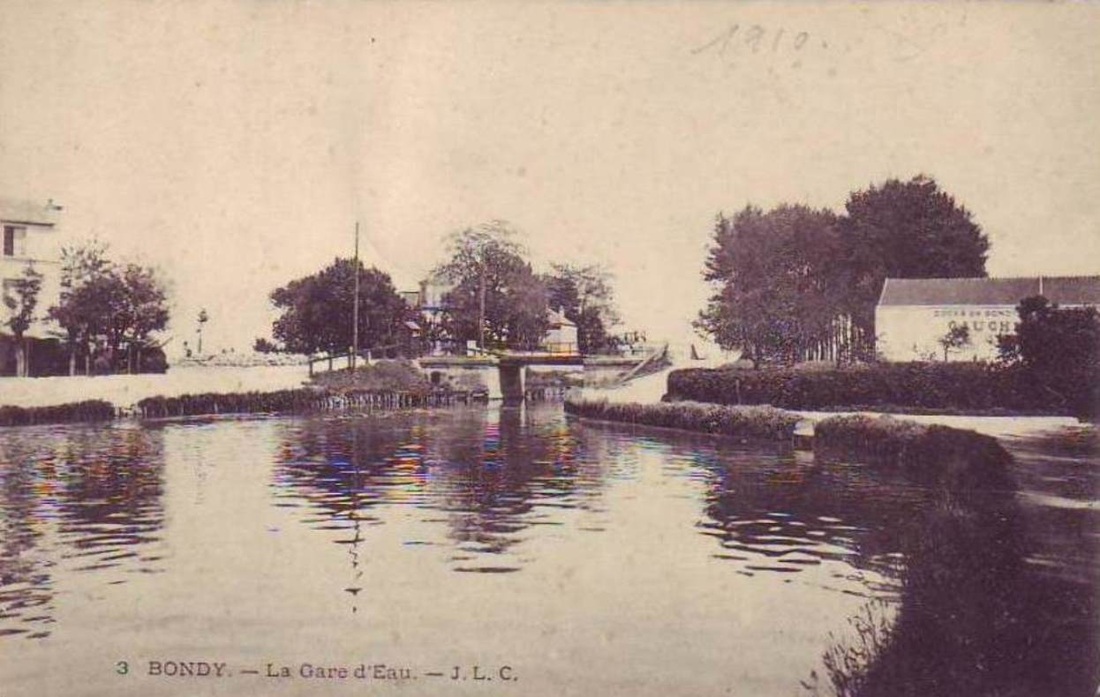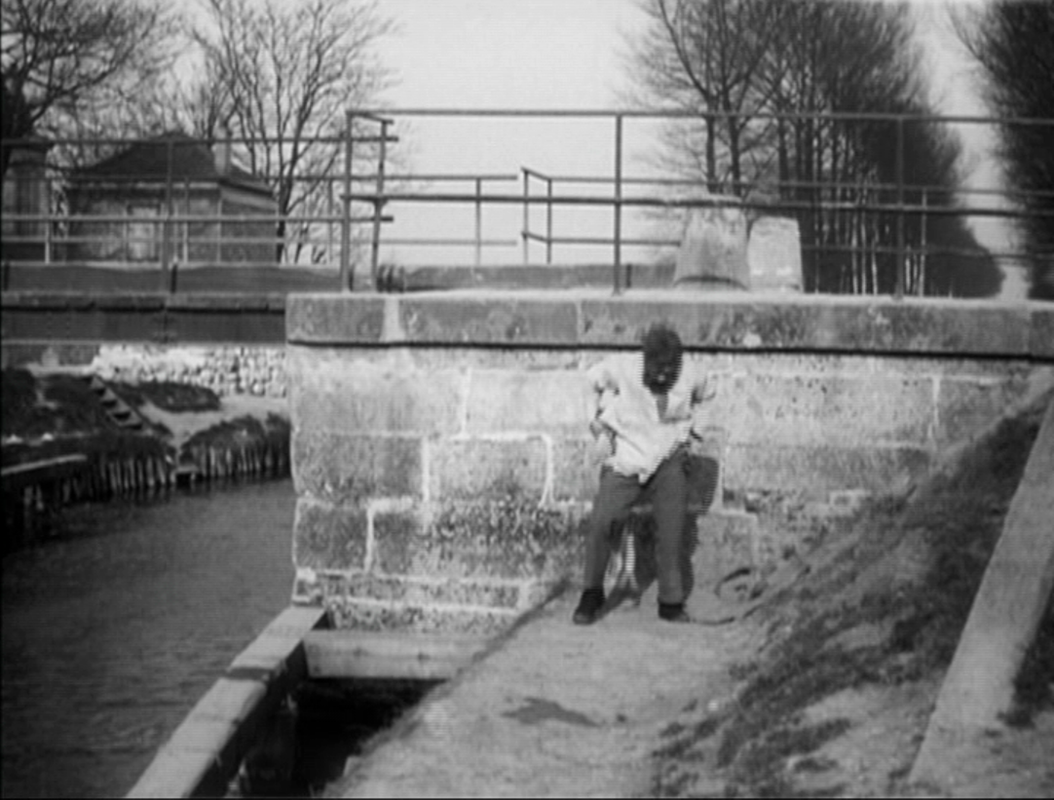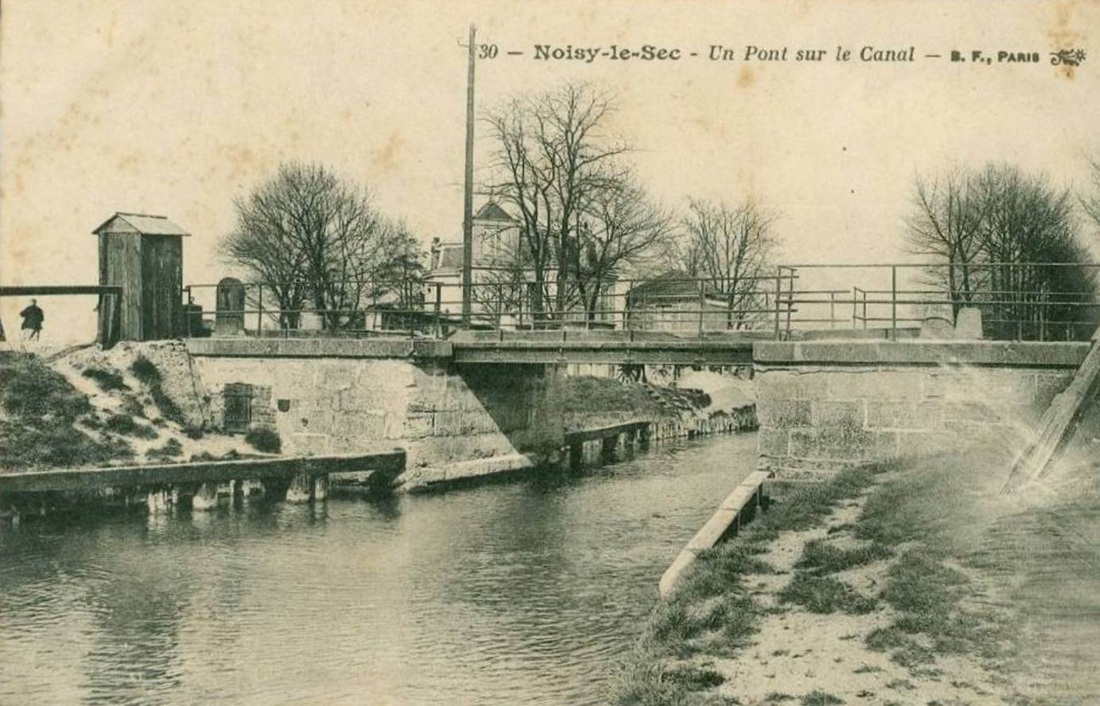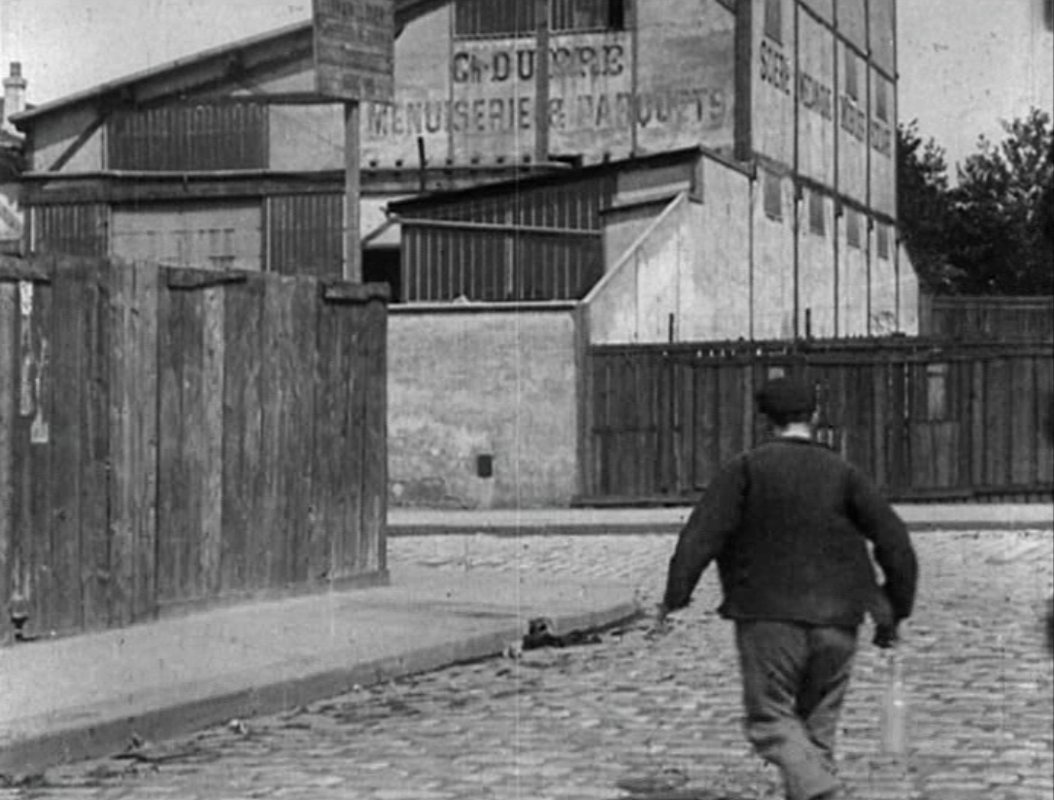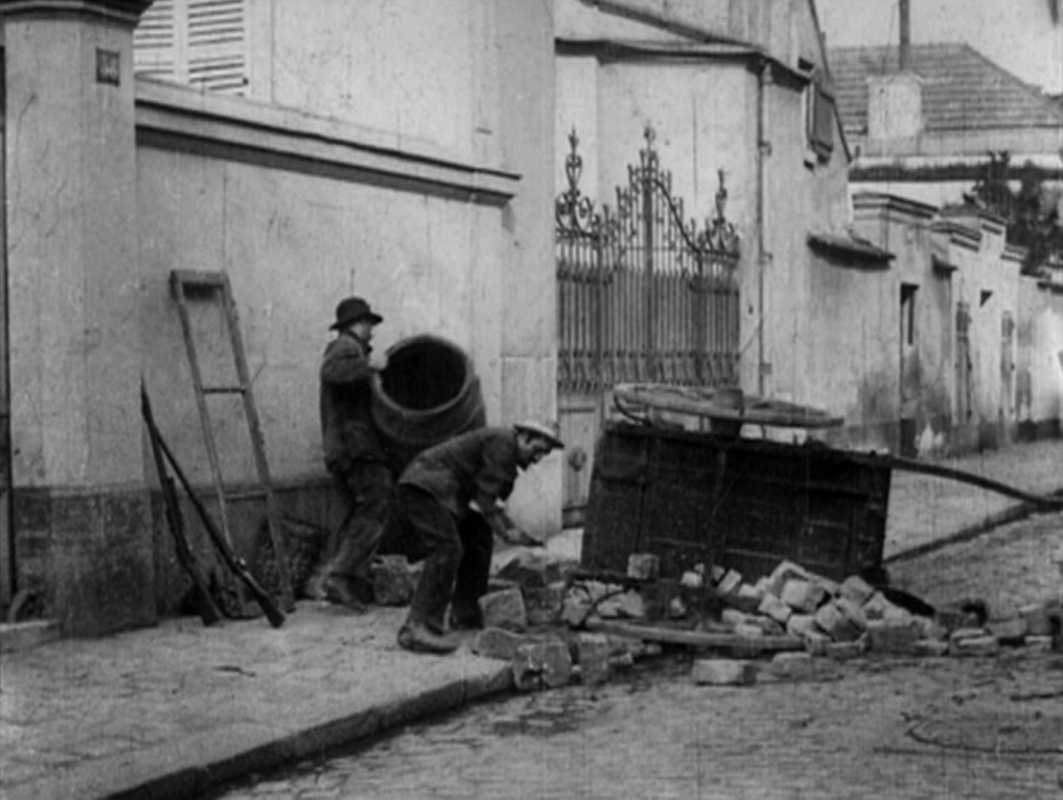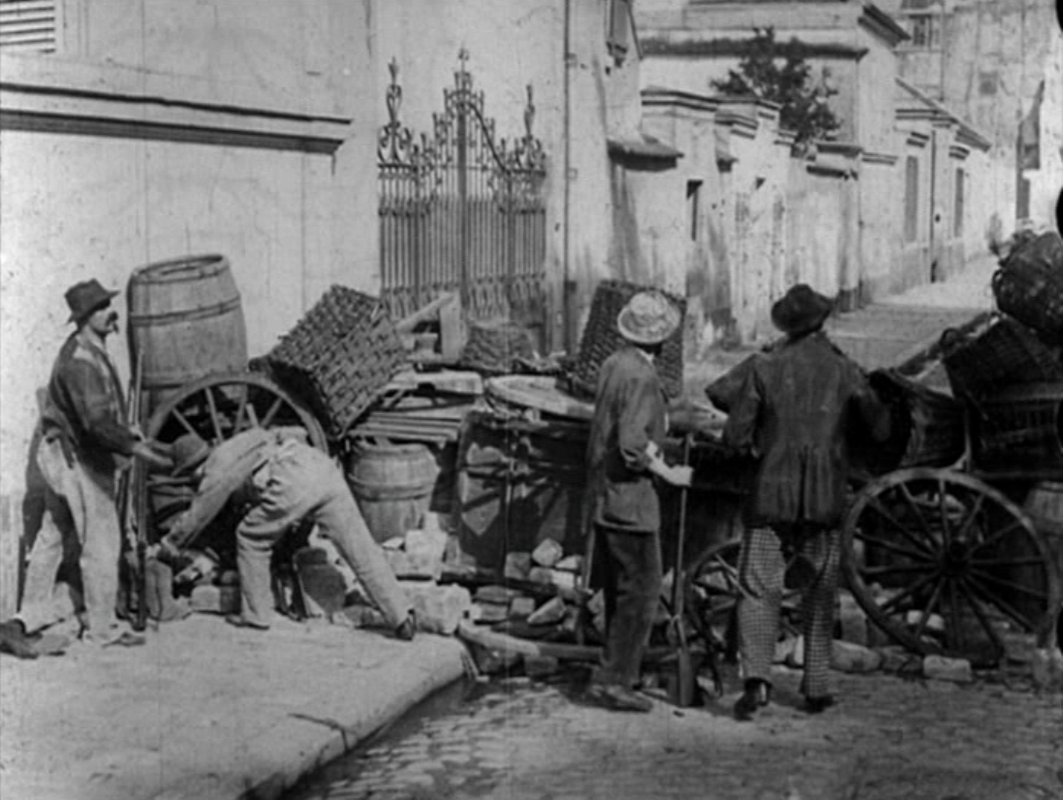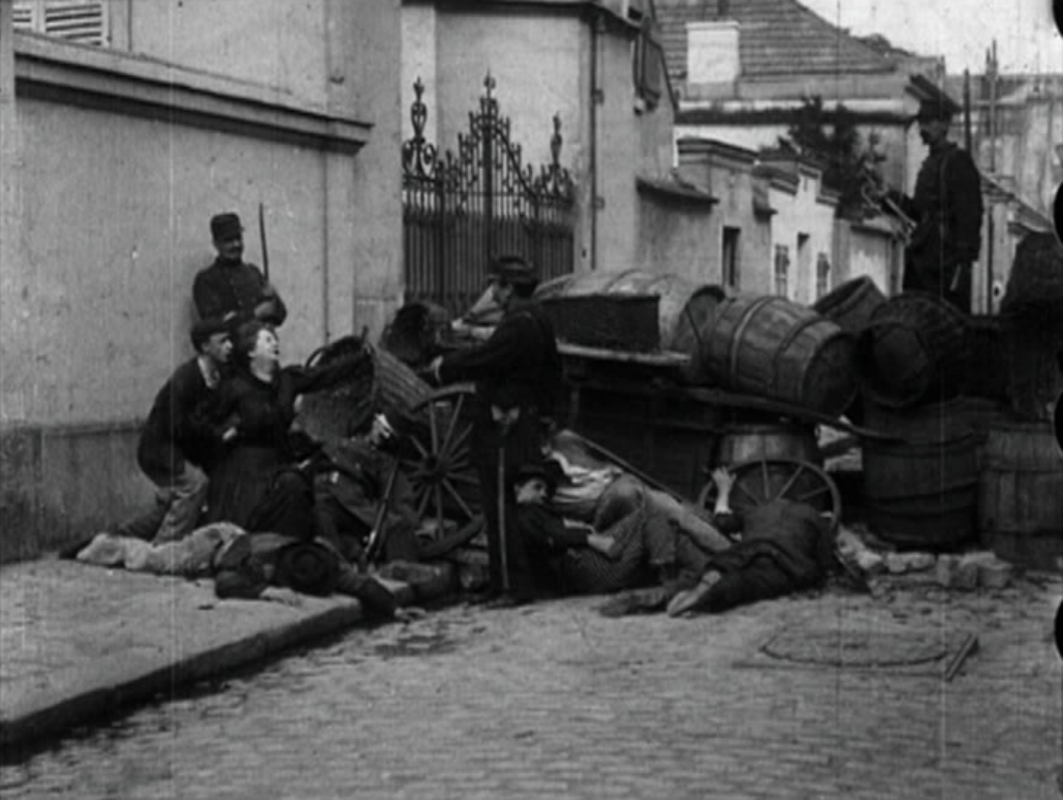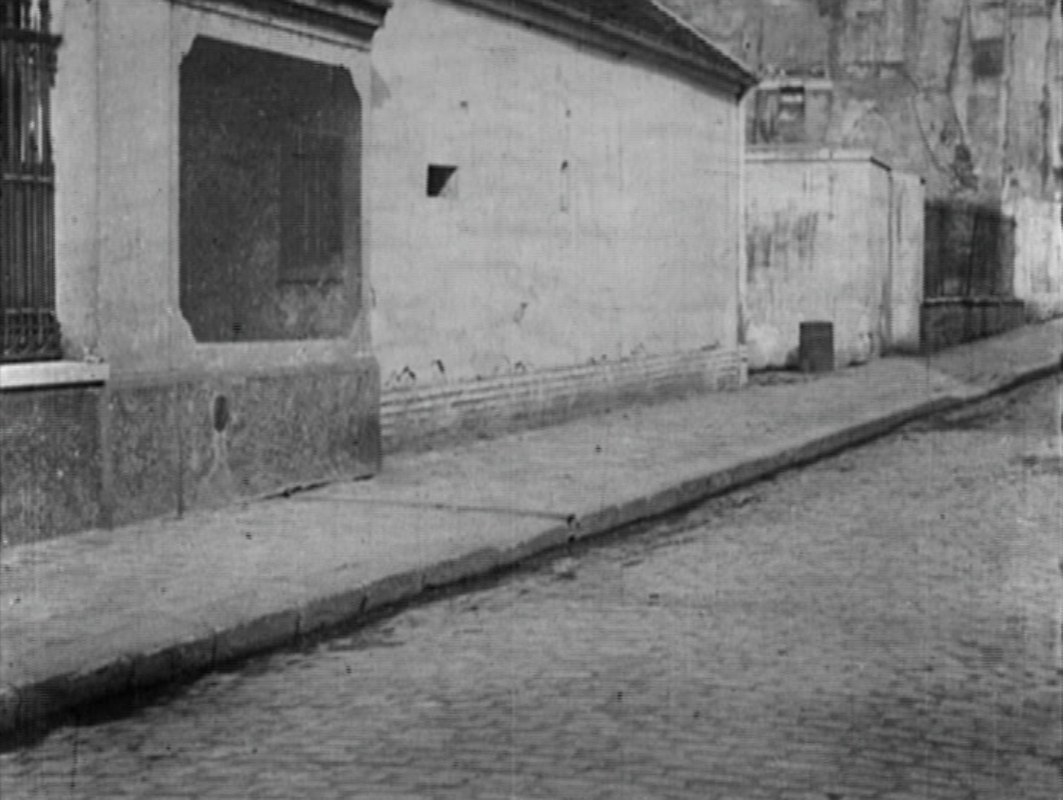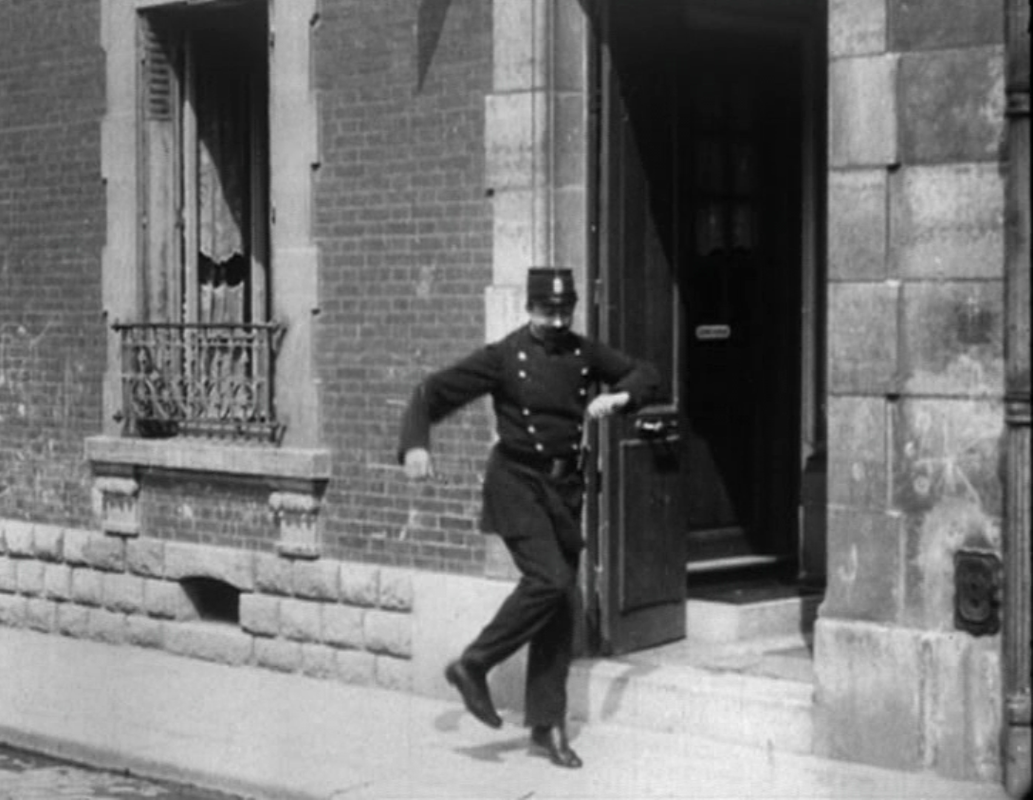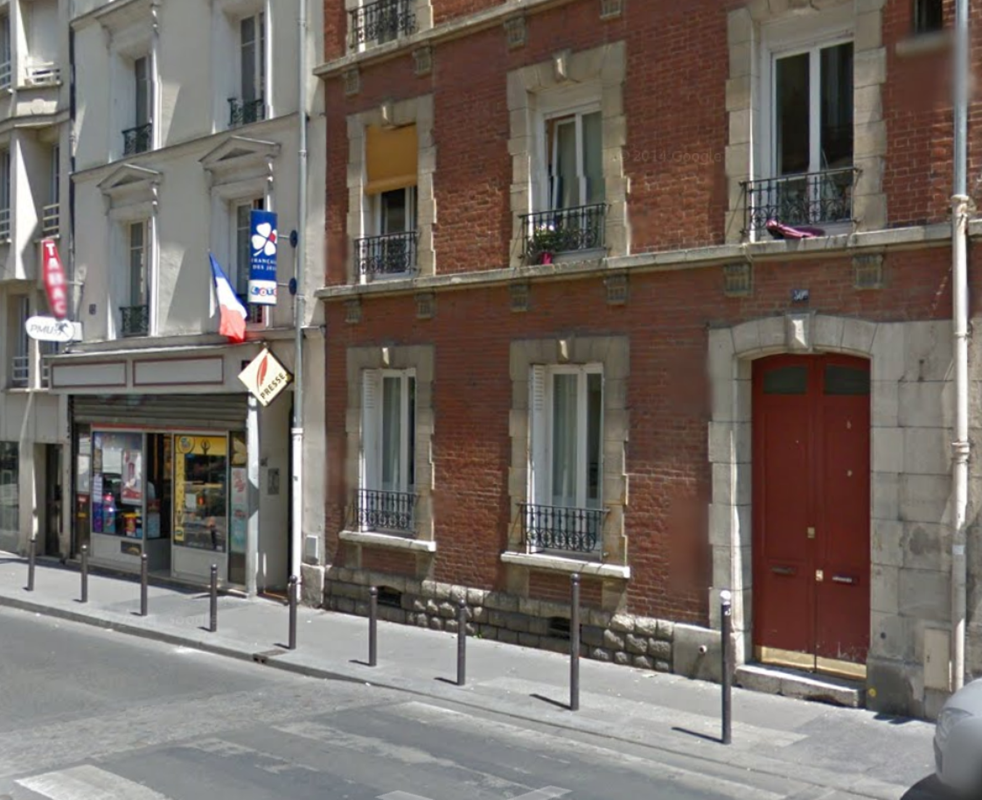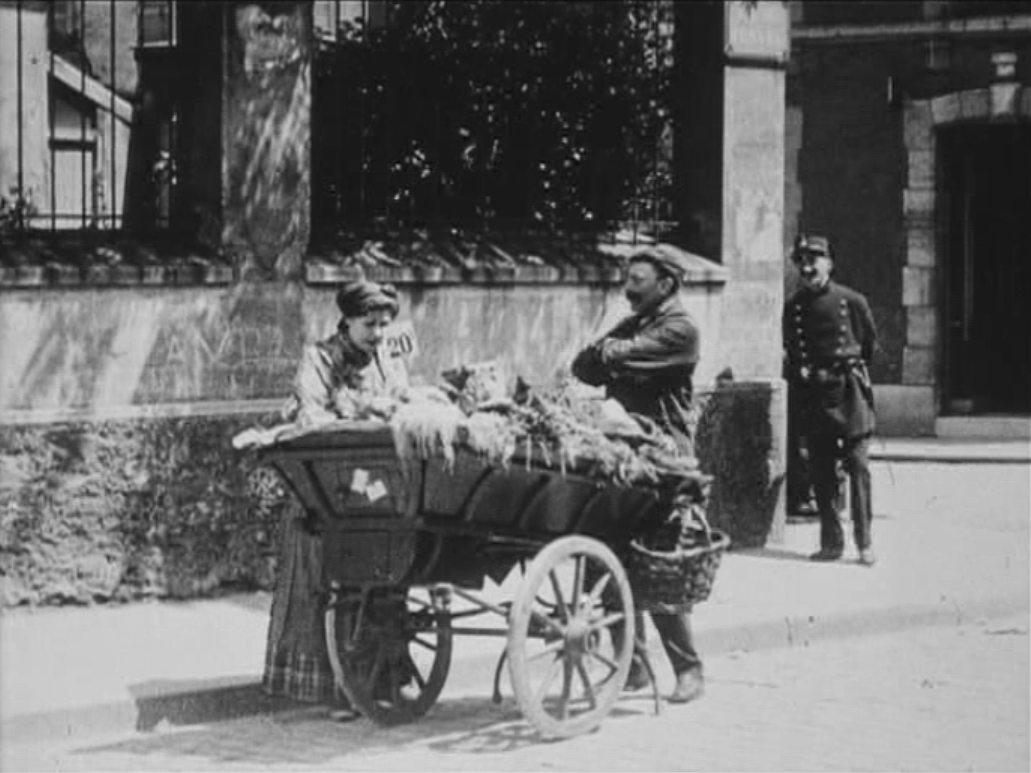Alice Guy's Paris films - film by film, location by location
Une heroine de quatre ans
The heroine and her maid leave the family home at 35 rue Manin, 19e, overlooking the parc de Buttes Chaumont. They head east and enter the park via the nearest entrance, opposite the avenue Secrétan:
There are two views inside the park:
Here are some people on the same path as above, right:
Having crossed the park, the little girl leaves by the small entrance opposite the rue des Alouettes. Here she thwarts two apaches with her skipping rope, fetching two policemen from further along the rue Botzaris:
She is then seen some distance away, out of Paris, saving a blind man from falling into the canal Saint Denis:
This is sluice no. 5, in Saint Denis.
The level crossing where she saves three drunkards from being crushed by a goods train is also in the banlieue, but I haven't been able to find where exactly:
The level crossing where she saves three drunkards from being crushed by a goods train is also in the banlieue, but I haven't been able to find where exactly:
She then reports to what appears to be barracks for the garde républicaine, but which was in fact the Service municipale des pompes funèbres, the city funeral service, at 104 rue d'Aubervilliers, 19e:
|
This building is now Le Centquatre, a government-sponsored complex of studios for the arts. Between April and August 2015 the 104 will be hosting a Gaumont exhibition celebrating 120 years of cinema, organised by Dominique Paini: see here. |
Finally, the heroine is accompanied home, back to 35 rue Manin, by a member of the Garde républicaine:
Le Lit à roulettes
The first exterior view is of a rough-looking building on a slightly sloping street, as yet unidentified. It could be one of about twenty sloping streets in the vicinity of the studio.
The next two exteriors are in the rue Compans, a long steep street to the east of the Cité Elgé, sloping down from the south to the north:
The first of these is at the junction of the rue de Mouzaïa and the rue Compans, just above the 'm' of Compans. The second is further north, across the junction - the café to the fore in the image left is the same one we see at the back of the image right. This sequence of shots is topographically coherent, inviting us to speculate that the shot preceding them was further up the rue Compans, but there are no buildings of the period that match.
In the next shot, anyway, topographical coherence is abandoned. The stairs down which the bed rolls lead from the passage des Annelets (now the villa Albert Robida) to the rue de Crimée:
In the next shot, anyway, topographical coherence is abandoned. The stairs down which the bed rolls lead from the passage des Annelets (now the villa Albert Robida) to the rue de Crimée:
The bed then passes along the rue Botzaris, in two shots, heading west to east, so towards the streets it had been in previously:
Ahead of it is the rue de l'Encheval, down which it comes in the next shot, though again this is a reversal of direction:
|
The last exterior, like the first, is unidentified, though given the film's concentration around the Cité Elgé it is hard to believe that this is not also in that vicinity.
The slope of the street, the buildings towards the right (of a higher class than those in the first exterior) and the shop labelled 'Sièges Ebénisterie Tapisserie' ought to be good clues, but I haven't found the street yet. |
Le Matelas épileptique
The first exterior is an open space near the city's fortifications. It may seem strange that the woman has taken the mattress to this open land to restuff it, but this 1912 photograph shows that such things did happen:
What we see in Le Matelas épileptique is probably around the porte du Pré Saint Gervais, that part of the fortifications closest to the studio. Several Gaumont films used the vicinity of the fortifications as a location, as here, in Oxford contre Martigues (1912):
There are two other views of this space in Le Matelas épileptique:
|
The film cuts away from this space to an unidentified café where the woman goes for refreshment. ('Chocolat De Vinck', written on the café window, is a brand of chocolate.)
The woman is then shown carrying the mattress in different Paris locations, all Belleville, firstly on the bridge over which the rue des Mignottes (now rue Arthur Rozier) crosses the rue de Crimée: |
The mattress falls from the bridge onto the street below, where it is run over by a passing car:
The woman gets down to the rue de Crimée via a staircase familiar from Le Lit à roulettes and other Gaumont films:
She goes back the same way, from the rue de Crimée to the passage des Annelets (now the villa Albert Robida), and then falls into a hole being dug by workmen on a street I cannot identify:
The woman returns the mattress to an unknown but familiar location:
This building appears in at least three other Gaumont productions from around this time:
I suspect that this is a building within the precincts of the Cité Elgé, and would even guess that it is the fourth from the left of the buildings marked in green on the map below (my thanks to the plateau Hassard blog):
I have marked the building I mean with an arrow, above. It was replaced by another building c.1909, which would explain why we don't see it in Gaumont productions after that date. But this is just guess work, and I don't expect to find evidence to prove or disprove my guess.
La Charité du prestidigitateur
This film has two locations, the café where the conjuror is drinking at the beginning and the open space where he has the two encounters with a beggar. This space looks like it was a part of the Cité Elgé complex. The trees in a barrel and the fencing are similar to what we see in Madame a des envies:
The café was at the junction of the rue des Alouettes and the rue Botzaris:
The building is different, but there is still a café here:
Une histoire roulante
Most of the film seems to have been shot on open space near the fortifications, probably around the porte du Pré Saint Gervais, though I haven't been able to localise any of these places:
The creator of the PlateauHassard website has suggested, convincingly, that the tracks and bridge over which the barrel rolls are related to the construction work we see behind the porte du Pré Saint Gervais in the picture below:
The barrel rolls into the Marne at Charenton-le-Pont, near the pont de Charenton and a pontoon of boats for anglers:
A different bridge now spans the Marne here.
La Course à la saucisse
Another film that uses the vicinity of the fortifications near the Pré Saint Gervais. Again, it is very difficult to identify specific locations, though I am tempted to match this image with the postcard below it:
These places could all be somewhere in this zone:
I think the twelve different places we see are all in or near the Pré Saint Gervais because two of them definitely are. The café in this shot is the same as in the postcard below it:
This is identified as somewhere in the Pré Saint Gervais, and the café's name would suggest it was somewhere near the rue du Plateau (at the bottom of this map, slightly right of centre):
The café name further implies that it is somewhere near a tram stop ('halte'). Trams ran along the avenue des Lilas, so my guess is that the café is near the junction of that street with the rue du Plateau. There are no buildings there now that match the café or the building beyond it, so this is just conjecture.
I am more confident that the shop from which the dog steals sausages is on the avenue des Lilas, further west:
I am more confident that the shop from which the dog steals sausages is on the avenue des Lilas, further west:
The avenue des Lilas is now the avenue du Belvedère, and the shop is at no. 130. It is no longer a shop:
Here are four more street locations that I hope will eventually be identified:
Le Billet de banque
The street corner where the robbery is attempted appears in other Gaumont films, suggesting that it is near the Cité Elgé:
I'm pretty certain this is the corner of the rue Préault and the rue du Plateau, the same that appears in Sur la barricade:
The next two locations have still to be identified:
But the last is, generously, identified within the film:
This is the canal de l'Ourcq, where Bondy meets Noisy-le Sec. The next shot shows in close up the bridge in the background:
Sur la barricade
I have already mentioned above the one location I am sure of, and discussed it more fully in a post here.
Apart from the junction of the rue Préault and the rue du Plateau, there is one other location:
There are two differently angled shots of this gate:
And there is a shot further up the same street:
I find it hard to believe that this isn't also a street near the Cité Elgé, and my guess would be that it is the rue Fessart, at the other end of the rue Préault. Unfortunately the rue Fessart is now so changed that there is nothing with which to test my theory. Any images from the past are of other parts of the street.
Le Piano irrésistible
This film has only one location:
This is 50bis rue des Alouettes, next to the Cité Elgé:
It can be seen again in La Femme doit suivre son mari (1909):
See here for filmmaking by Guy and others in the forêt de Fontainebleau.
